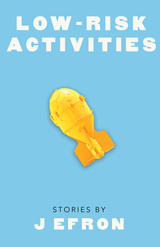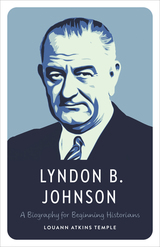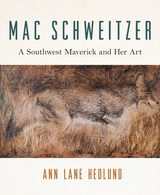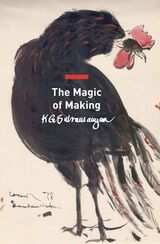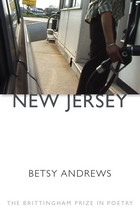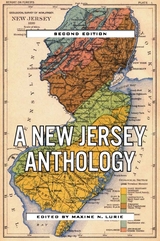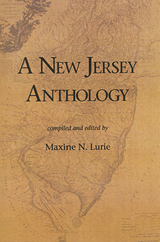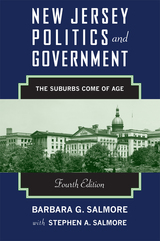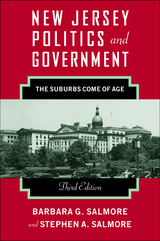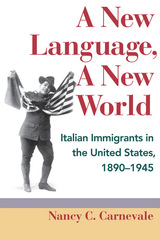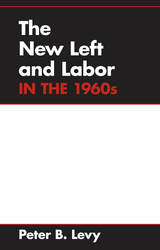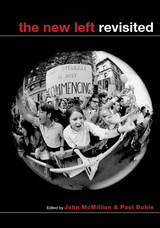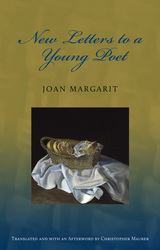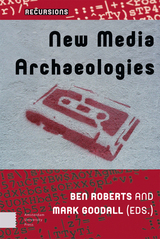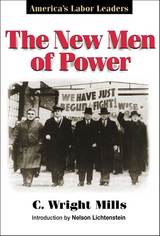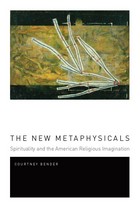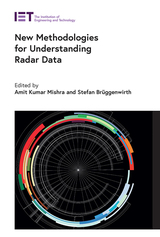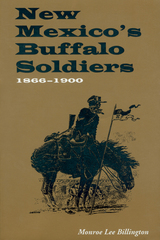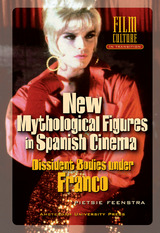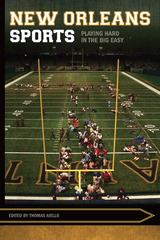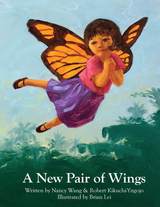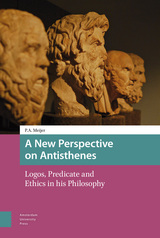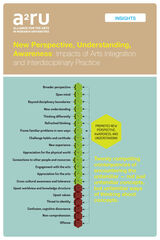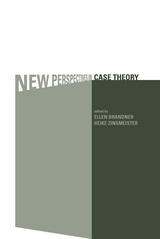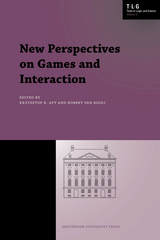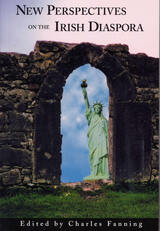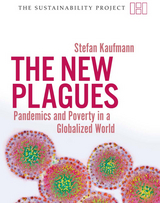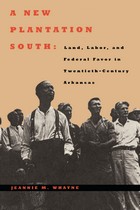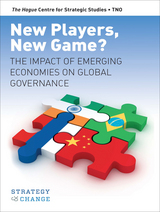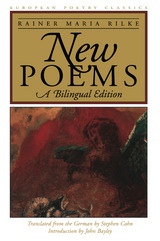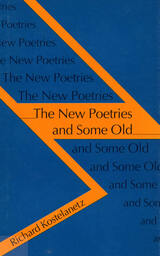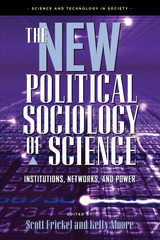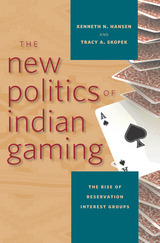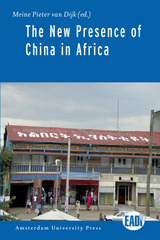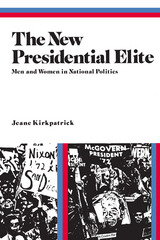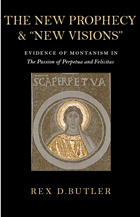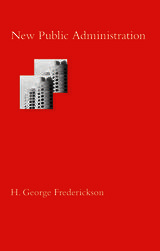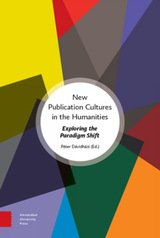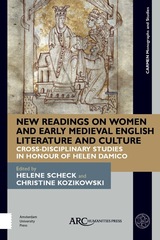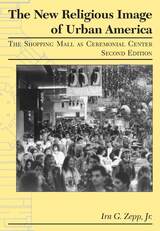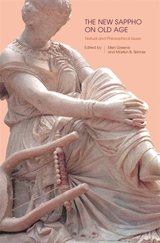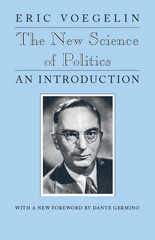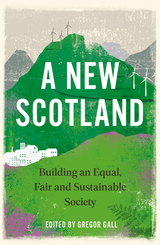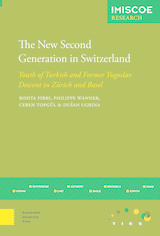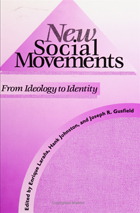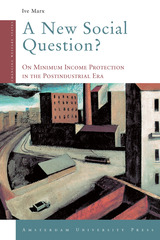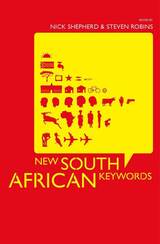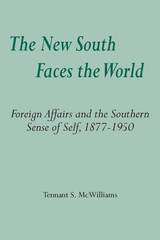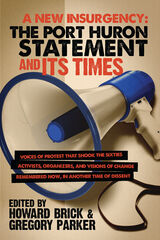 A New Insurgency: The Port Huron Statement and Its Times
Howard Brick and Gregory Parker, eds.
Michigan Publishing, 2018 Students for a Democratic Society (SDS) was just one of several new insurgent movements for democracy and social justice during the late 1950s and early 1960s, and it must be understood in the context of other causes and organizations—in the United States and abroad—that inspired its founding manifesto, the Port Huron Statement. In A New Insurgency: The Port Huron Statement and Its Times, a diverse group of more than forty scholars and activists take a transnational approach in order to explore the different—though often interconnected—campaigns that mobilized people along varied racial, ethnic, gender, and regional dimensions from the birth of the New Left in the civil rights and pacifist agitation of the 1950s to the Occupy movements of today.
This volume features three never-before-published “manifesto drafts” written by Tom Hayden in early 1962 that generated the discussion leading to the Port Huron meeting. Other highlights include recollections from leading women in the Port Huron deliberations who, three years later, protested the subordination of women within the radical movements, thus setting the stage for the rise of women’s liberation. A New Insurgency is based on the University of Michigan’s conference commemorating the fiftieth anniversary of the Port Huron Statement in 2012.
“The fiftieth anniversary of the Port Huron Statement has drawn a great number of reflections and commemorations, but this carefully conceived volume offers an account of unrivaled ambition, exceptional breadth, and surprising insight. It both excavates the event itself—vividly, perceptively, exhaustively—and gives it the largest and most illuminating of contexts. A New Insurgency is as close to definitive as any volume of this kind can become.”
—Geoff Eley, Karl Pohrt Distinguished University Professor of Contemporary History, University of Michigan
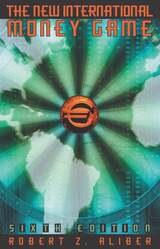 The New International Money Game
Robert Z. Aliber
University of Chicago Press, 2002 Previous editions of Robert Z. Aliber's The New International Money Game have been widely acclaimed as the best and most entertaining introduction to the arcane enigmas of international finance. Since its original publication, the book has become a classic primer for beginning students, businesspersons, and anyone interested in a clear explanation of international monetary and financial issues.
With expert knowledge and a wry sense of humor, Aliber demystifies international finance by breaking through the jargon barrier and presenting technical issues in a clear and concise manner. Aliber takes the reader on a tour of a multiplicity of international finance issues, included fixed and floating exchange rates, devaluations, money markets, monetary policy, and the concepts that lie behind the esoteric language of financial economists.
This sixth edition tracks the changes that have taken place in the world economy since the previous editions by exploring financial globalization, postcommunist transition, European integration, and the Asian economic crisis. It is an indispensable and highly readable guide to the complex and increasingly fragile system through which the world's business is financed.
A New Introduction to Greek: Third Edition Revised and Enlarged
Alston Hurd Chase and Henry Phillips, Jr.
Harvard University Press Major revisions in this widely used text include:
1. Larger typefaces for all Greek paradigms;
2. Greatly expanded vocabularies, both Greek-English and English-Greek;
3. New review exercises for each lesson in both Greek and English;
4. New appendices listing 75 irregular verbs with their principal parts and the prepositions with their meanings. At many points the expositions, notes, and lesson vocabularies are expanded and the English sentences revised.
New Irish Storytellers: Narrative Strategies in Film
Díóg O'Connell
Intellect Books, 2010 With the success of such films as the Oscar winner Once, Irish film has been getting well-deserved international attention recently. New Irish Storytellers examines storytelling techniques and narrative strategies in contemporary Irish film. Revealing defining patterns within recent Irish cinema, this book explores connections between Irish cinematic storytellers and their British and American colleagues. Díóg O’Connell traces the creative output of Irish filmmakers today back to 1993, the year the Irish Film Board was reactivated, reinvigorating film production after a hiatus of seven years. Reflecting on this key and distinctive era in Irish cinema, this book explores how film gave expression to tensions and fissures in the new Ireland.
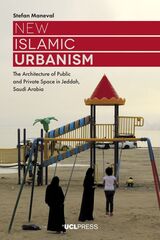 New Islamic Urbanism: The Architecture of Public and Private Space in Jeddah, Saudi Arabia
Stefan Maneval
University College London, 2019 New Islamic Urbanism traces the changing relationship between public and private space in Jeddah, Saudi Arabia, over the past seventy years, from the dawn of the oil era to the present, paying particular attention to the role architecture plays in defining public and private spaces.
Combining Michael Warner’s concepts of publics and counterpublics with theories of space and sociological approaches to architecture, Stefan Maneval explores the concept of New Islamic Urbanism in Saudi Arabia, arguing that this architectural trend, which is characterized by an emphasis on privacy protection through high enclosures, gates, blinds, and tinted windows, constitutes for some an important element of piety. At the same time, it enables different conceptions of privacy, banned social practices, as well as the formation of publics and counterpublics.
Based on rich ethnographic data collected by the author, New Islamic Urbanism challenges normative assumptions on gender segregation in Muslim societies and provides a nuanced account of the meaning of publicness and privacy in Muslim contexts in general. It will be of particular interest to an academic readership in Middle East and Islamic studies, as well as in architecture, urban planning and anthropology.
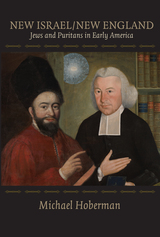 New Israel / New England: Jews and Puritans in Early America
Michael Hoberman
University of Massachusetts Press, 2011 The New England Puritans' fascination with the legacy of the Jewish religion has been well documented, but their interactions with actual Jews have escaped sustained historical attention. New Israel/New England tells the story of the Sephardic merchants who traded and sojourned in Boston and Newport between the mid-seventeenth century and the era of the American Revolution. It also explores the complex and often contradictory meanings that the Puritans attached to Judaism and the fraught attitudes that they bore toward the Jews as a people.
More often than not, Michael Hoberman shows, Puritans thought and wrote about Jews in order to resolve their own theological and cultural dilemmas. A number of prominent New Englanders, including Roger Williams, Increase Mather, Samuel Sewall, Benjamin Colman, Cotton Mather, Jonathan Edwards, and Ezra Stiles, wrote extensively about post-biblical Jews, in some cases drawing on their own personal acquaintance with Jewish contemporaries.
Among the intriguing episodes that Hoberman investigates is the recruitment and conversion of Harvard's first permanent instructor of Hebrew, the Jewish-born Judah Monis. Later chapters describe the ecumenical friendship between Newport minister Ezra Stiles and Haim Carigal, an itinerant rabbi from Palestine, as well as the life and career of Moses Michael Hays, the prominent freemason who was Boston's first permanently established Jewish businessman, a founder of its insurance industry, an early sponsor of the Bank of Massachusetts, and a personal friend of Paul Revere.
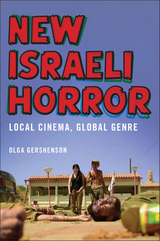 New Israeli Horror: Local Cinema, Global Genre
Olga Gershenson
Rutgers University Press, 2024 Before 2010, there were no Israeli horror films. Then distinctly Israeli serial killers, zombies, vampires, and ghosts invaded local screens. The next decade saw a blossoming of the genre by young Israeli filmmakers. New Israeli Horror is the first book to tell their story. Through in-depth analysis, engaging storytelling, and interviews with the filmmakers, Olga Gershenson explores their films from inception to reception. She shows how these films challenge traditional representations of Israel and its people, while also appealing to audiences around the world.
Gershenson introduces an innovative conceptual framework of adaptation, which explains how filmmakers adapt global genre tropes to local reality. It illuminates the ways in which Israeli horror borrows and diverges from its international models. New Israeli Horror offers an exciting and original contribution to our understanding of both Israeli cinema and the horror genre.
A companion website to this book is available at https://websites.umass.edu/newisraelihorror/
Book trailer: https://youtu.be/oVJsD0QCORw (https://youtu.be/oVJsD0QCORw)
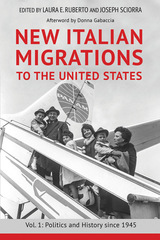 New Italian Migrations to the United States: Vol. 1: Politics and History since 1945
Edited by Laura E. Ruberto and Joseph Sciorra: Afterword by Donna Gabaccia
University of Illinois Press, 2017 Italian immigration from 1945 to the present is an American phenomenon too little explored in our historical studies. Until now. In this new collection, Laura E. Ruberto and Joseph Sciorra edit essays by an elite roster of scholars in Italian American studies. These interdisciplinary works focus on leading edge topics that range from politics of the McCarren-Walter Act and its effects on women to the ways Italian Americans mobilized against immigration restrictions. Other essays unwrap the inner workings of multi-ethnic power brokers in a Queens community, portray the complex transformation of identity in Boston’s North End, and trace the development of Italian American youth culture and how new arrivals fit into it. Finally, Donna Gabaccia pens an afterword on the importance of this seventy-year period in U.S. migration history. Contributors: Ottorino Cappelli, Donna Gabaccia, Stefano Luconi, Maddalena Marinari, James S. Pasto, Rodrigo Praino, Laura E. Ruberto, Joseph Sciorra, Donald Tricarico, and Elizabeth Zanoni.
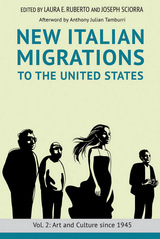 New Italian Migrations to the United States: Vol. 2: Art and Culture since 1945
Laura Ruberto, Joseph Sciorra
University of Illinois Press, 2017 This second volume of <i>New Italian Migrations to the United States</i> explores the evolution of art and cultural expressions created by and about Italian immigrants and their descendants since 1945. The essays range from an Italian-language radio program that broadcast intimate messages from family members in Italy to the role of immigrant cookbook writers in crafting a fashionable Italian food culture. Other works look at how exoticized actresses like Sophia Loren and Pier Angeli helped shape a glamorous Italian style out of images of desperate postwar poverty; overlooked forms of brain drain; the connections between countries old and new in the works of Michigan self-taught artist Silvio Barile; and folk revival performer Alessandra Belloni's reinterpretation of tarantella dance and music for Italian American women. In the afterword, Anthony Julian Tamburri discusses the nomenclature ascribed to Italian American creative writers living in Italy and the United States.
Contributors: John Allan Cicala, Simone Cinotto, Teresa Fiore, Incoronata (Nadia) Inserra, Laura E. Ruberto, Joseph Sciorra, and Anthony Julian Tamburri.
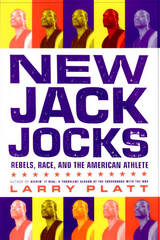 New Jack Jocks: Rebels, Race, And The American Athlete
Larry Platt
Temple University Press, 2003 Latrell Sprewell. Allen Iverson. John McEnroe. Even Mohammed Ali and Mike Schmidt and Michael Jordan. These are characters of our national imagination, athletes who stand as symbols of our complex relationship with professional sport.In this erudite and captivating book, bestselling author Larry Platt takes us on a tour through American sports. Offering profiles of the athletes we love (and love to hate), Platt shows that sport, more than any other nationwide pastime, is the way we come to understand—and alter—race relations, gender, and, most profoundly, how we communicate with each other in ways that are often given too little credit in the minds of intellectuals.Thought-provoking and richly written, New Jack Jocks offers a textured picture of how athletes live their lives and how we live out and define American culture by the way we come to understand their lives in and out of the halls of play.
 The New Japanese Woman: Modernity, Media, and Women in Interwar Japan
Barbara Sato
Duke University Press, 2003 Presenting a vivid social history of “the new woman” who emerged in Japanese culture between the world wars, The New Japanese Woman shows how images of modern women burst into Japanese life in the midst of the urbanization, growth of the middle class, and explosion of consumerism resulting from the postwar economic boom, particularly in the 1920s. Barbara Sato analyzes the icons that came to represent the new urban femininity—the “modern girl,” the housewife, and the professional working woman. She describes how these images portrayed in the media shaped and were shaped by women’s desires. Although the figures of the modern woman by no means represented all Japanese women, they did challenge the myth of a fixed definition of femininity—particularly the stereotype emphasizing gentleness and meekness—and generate a new set of possibilities for middle-class women within the context of consumer culture.
The New Japanese Woman is rich in descriptive detail and full of fascinating vignettes from Japan’s interwar media and consumer industries—department stores, film, radio, popular music and the publishing industry. Sato pays particular attention to the enormously influential role of the women’s magazines, which proliferated during this period. She describes the different kinds of magazines, their stories and readerships, and the new genres the emerged at the time, including confessional pieces, articles about family and popular trends, and advice columns. Examining reactions to the images of the modern girl, the housewife, and the professional woman, Sato shows that while these were not revolutionary figures, they caused anxiety among male intellectuals, government officials, and much of the public at large, and they contributed to the significant changes in gender relations in Japan following the Second World War.
New Jersey
Betsy Andrews
University of Wisconsin Press, 2007 Betsy Andrews’s sweeping, energetic, book-length poem pounds the pavement of the New Jersey Turnpike, driving through America—past landfills and wetlands and weapons labs—under the towering shadows of engines, oil, and war. With a disarmingly unique voice that evokes the tradition of Pound and Eliot, Whitman and Williams and Ginsberg, Andrews creates a pastiche of landscape, consciousness, history, and politics in this American age.
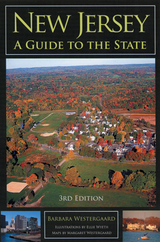 New Jersey: A Guide to the State
Westergaard, Barbara
Rutgers University Press, 2006 In the third edition of this classic guide, Barbara Westergaard surveys the state’s rich diversity while providing the most up-to-date information on several hundred of New Jersey’s towns, cities, and parks. Entries are arranged alphabetically with concise yet thorough descriptions detailing what there is to see and do in each community and its surrounding area and how each place is connected to its past. The book lists museums, parks, historical points of interest, natural and recreational areas, and many other attractions. There is even a guided tour of the New Jersey Turnpike—the most heavily traveled toll road in the country. Updated for this edition, the book includes new points of interest and population figures.
Whether you are a longtime resident or newcomer to New Jersey, a commuter, a visitor, or a neighbor from a nearby state, this easy-to-use, town-by-town guide will lead you to new discoveries. Includes information on: · towns and cities · museums · arts centers · historic sites · lighthouses · nature centers · animal refuges and zoos · amusement parks · wineries · sports facilities · planetariums · parks and gardens
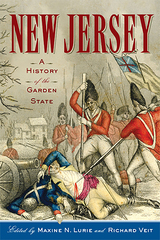 New Jersey: A History of the Garden State
Lurie, Maxine N
Rutgers University Press, 2012 New Jersey: A History of the Garden State presents a fresh, comprehensive overview of New Jersey’s history from the prehistoric era to the present. The findings of archaeologists, political, social, and economic historians provide a new look at how the Garden State has evolved. The state has a rich Native American heritage and complex colonial history. It played a pivotal role in the American Revolution, early industrialization, and technological developments in transportation, including turnpikes, canals, and railroads. The nineteenth century saw major debates over slavery. While no Civil War battles were fought in New Jersey, most residents supported it while questioning the policies of the federal government. Next, the contributors turn to industry, urbanization, and the growth of shore communities. A destination for immigrants, New Jersey continued to be one of the most diverse states in the nation. Many of these changes created a host of social problems that reformers tried to minimize during the Progressive Era. Settlement houses were established, educational institutions grew, and utopian communities were founded. Most notably, women gained the right to vote in 1920. In the decades leading up to World War II, New Jersey benefited from back-to-work projects, but the rise of the local Ku Klux Klan and the German American Bund were sad episodes during this period.
The story then moves to the rise of suburbs, the concomitant decline of the state’s cities, growing population density, and changing patterns of wealth. Deep-seated racial inequities led to urban unrest as well as political change, including such landmark legislation as the Mount Laurel decision. Today, immigration continues to shape the state, as does the tension between the needs of the suburbs, cities, and modest amounts of remaining farmland. Well-known personalities, such as Jonathan Edwards, George Washington, Woodrow Wilson, Dorothea Dix, Thomas Edison, Frank Hague, and Albert Einstein appear in the narrative. Contributors also mine new and existing sources to incorporate fully scholarship on women, minorities, and immigrants. All chapters are set in the context of the history of the United States as a whole, illustrating how New Jersey is often a bellwether for the nation..
 New Jersey: A Military History
Joseph G. Bilby
Westholme Publishing, 2017 The military history of New Jersey, from New Netherland’s struggles with the Lenape through colonial wars of empire to twenty-first-century conflicts in Iraq and Afghanistan, is extensive and significant. New Jersey justly earned the title “Crossroads of the Revolution” in the War for Independence, and made a significant contribution to the Union victory in the Civil War. The state’s position along the Atlantic Coast brought war to the home front in 1812, 1918, and 1942. New Jersey was also the site of Bergen County’s Camp Merritt, which processed most of the American soldiers who went overseas in World War I, Fort Dix, a major training base, and Fort Monmouth, a center for military technology development in the twentieth century.
New Jersey: A Military History by military historian Joseph G. Bilby tells the long, diverse, and sometimes complicated story of New Jersey’s citizens and their significant and continuing role in America’s defense. Over more than 350 years as a colony and state, hundreds of thousands of New Jersey residents have served in regular armed forces, militia, and National Guard units or in direct support of those organizations. New Jerseyans in the military include General “Scotch Willie” Maxwell of Sussex County, an unappreciated Revolutionary War master tactician; First Sergeant George Ashby of Allentown, of Company H, 45th United States Colored Infantry, the state’s last surviving Civil War veteran; Clara Maas of Newark, a nurse who sacrificed her life in the effort to eradicate Yellow Fever; Captain William J. Reddan, who led his company into hell during the Meuse-Argonne offensive in 1918; and Medal of Honor winner John Basilone, whose sense of duty and honor led him to return to combat and death in World War II.
Complete with maps, an annotated list of historical sites in the state, and further reading, New Jersey: A Military History is an important reference for those interested in the role of the Garden State in our nation’s wars.
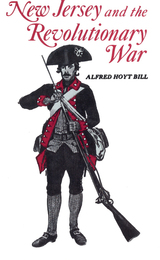 New Jersey and The Revolutionary War
Bill, Alfred
Rutgers University Press, 1970 This is the complete account of New Jersey's important role in tile American Revolutionary War, as only the accomplished novelist and historian Alfred Hoyt Bill could tell it. Not only does he survey the major military developments, but he also covers the social and economic effects or the war in New Jersey. Bill tells the story of the war and provides in-depth explanations of war-related problems-victory and defeat, Jerseymen defecting 10 the British, recruitment difficulties, troop discipline problems, the outbreak of disease and a smallpox epidemic-everything that led to the eventual surrender of Cornwallis.
Bill introduces us to the people who were responsible for winning the war and shaping the future of our country, people such as George Washington, General Hugh Mercer, Thomas Paine, Alexander Hamilton, James Monroe, and Thomas Marshall. He also portrays other colorful figures, such as Benedict Arnold, and British officers, including Howe, Cornwallis, and RaIl. Alfred Bill has produced that rare species of history book that reads like an exciting adventure story. He not only presents the facts, but clearly illuminates them with pertinent background information. Clearly written and highly readable, this book will be enjoyed by everyone from students 10 serious historians.
A New Jersey Anthology
Lurie, Maxine N
Rutgers University Press, 2010 This anthology contains seventeen essays covering eighteenth-century agrarian unrest, the Revolutionary War, politics in the Jackson era, feminism and the women's movements, slavery from the seventeenth to the nineteenth centuries, strikes and labor struggles, land use and regional planning issues, Blacks in Newark, the current political state of New Jersey, and more. The contributors are Michal R. Belknap, Lynn W. Dorsett, Gregory Evans Dowd, Charles E. Funnell, Steve Golin, Maxine N. Lurie, Richard P. McCormick, Gary Mitchell, Simeon F. Moss, Marie Marmo Mullaney, Mary R. Murrin, Gerald M. Pomper, Clement A. Price, Thomas L. Purvis, Daniel Schaffer, Warren E. Stickle III, Maurice Tandler.
New Jersey Anthology
Lurie, Maxine N
Rutgers University Press, 2002 This anthology contains seventeen essays covering eighteenth-century agrarian unrest, the Revolutionary War, politics in the Jackson era, feminism and the women's movements, slavery from the seventeenth to the nineteenth centuries, strikes and labor struggles, land use and regional planning issues, Blacks in Newark, the current political state of New Jersey, and more. The contributors are Michal R. Belknap, Lynn W. Dorsett, Gregory Evans Dowd, Charles E. Funnell, Steve Golin, Maxine N. Lurie, Richard P. McCormick, Gary Mitchell, Simeon F. Moss, Marie Marmo Mullaney, Mary R. Murrin, Gerald M. Pomper, Clement A. Price, Thomas L. Purvis, Daniel Schaffer, Warren E. Stickle III, Maurice Tandler.
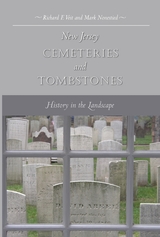 New Jersey Cemeteries and Tombstones: History in the Landscape
Veit, Richard F
Rutgers University Press, 2008 From the earliest memorials used by Native Americans to the elaborate structures of the present day, Richard Veit and Mark Nonestied use grave markers to take an off-beat look at New Jersey’s history that is both fascinating and unique.
New Jersey Cemeteries and Tombstones presents a culturally diverse account of New Jersey’s historic burial places from High Point to Cape May and from the banks of the Delaware to the ocean-washed Shore, to explain what cemeteries tell us about people and the communities in which they lived. The evidence ranges from somber seventeenth-century decorations such as hourglasses and skulls that denoted the brevity of colonial life, to modern times where memorials, such as a life-size granite Mercedes Benz, reflect the materialism of the new millennium. Also considered are contemporary novelties such as pet cemeteries and what they reveal about today’s culture. To tell their story the authors visited more than 1,000 burial grounds and interviewed numerous monument dealers and cemetarians.
This richly illustrated book is essential reading for history buffs and indeed anyone who has ever wandered inquisitively through their local cemeteries.
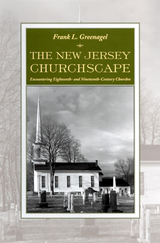 The New Jersey Churchscape: Encountering Eighteenth- and Nineteenth-Century Churches
Frank L. Greenagel
Rutgers University Press, 2001 Although best known as the Garden State, New Jersey could also be called the Church State. The state boasts thousands of houses of worship, with more than one thousand still standing that were built in the eighteenth and nineteenth centuries. Frank L. Greenagel has photographed more than six hundred. He has selected two hundred of these historic landmarks for an examination of why they are sited where they are and why they look the way they do.
Greenagel has sought out and included images of not only mainstream Christian churches, but also Jewish synagogues as well as the places of worship of religious groups such as the Moravians, the Church of the Brethren, and the Seventh Day Baptists. The photographs are arranged chronologically within sections on three major early settlement regions of the state ¾ the Hudson River, the Delaware River, and the Raritan Valley. For each building, Greenagel details the date of construction, the cultural, historic, and religious influences that shaped it, the architectural details that distinguish it, and what purpose it currently serves.
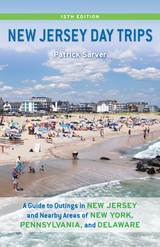 New Jersey Day Trips: A Guide to Outings in New Jersey and Nearby Areas of New York, Pennsylvania, and Delaware
Sarver, Patrick
Rutgers University Press Shades of F. Scott Fitzgerald roam Princeton as lads and lasses walk the well-clipped paths between venerable university halls, while russet leaves flutter overhead from rows of sturdy trees. Visions of knights and their fair maidens come to mind as explorers wander around Lambert Castle, an 1892 sandstone and granite mansion that looms like a medieval fortress with rounded towers and turrets on a hillside below the cliffs of the Garret Mountain Reservation. For art lovers who like to stroll on lush lawns and enjoy the beauty around them, Grounds for Sculpture is the place to be seen in New Jersey. And, then there's always the 127 miles of beach along the state's east coast that make perfect day trips for swimming, boating, fishing, and other fun activities. Now in a revised and expanded 12th edition, New Jersey Day Trips offers everyone a fascinating journey through hundreds of tourist attractions in all corners of the Garden State. Plus, this comprehensive resource explores the most popular points just beyond the state's borders. Patrick Sarver has updated most entries and added more than twenty new points of interest to an already extensive list of destinations, making this the most sought-after guidebook about New Jersey. Attractions can be located easily by subject category, letting travelers zero in on places that appeal to them. Entries include descriptions, hours of operation, location, price range, telephone numbers, and Web sites, making this best seller a one-stop source of discovery for day trippers of all ages--an ideal travel guide for adults or families who live in or plan to visit New Jersey..
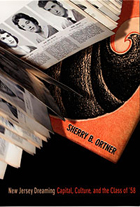 New Jersey Dreaming: Capital, Culture, and the Class of '58
Sherry B. Ortner
Duke University Press, 2005 Pioneering anthropologist Sherry B. Ortner is renowned for her work on the Sherpas of Nepal. Now she turns her attention homeward to examine how social class is lived in the United States and, specifically, within her own peer group. In New Jersey Dreaming, Ortner returns to her Newark roots to present an in-depth look at Weequahic High School's Class of 1958, of which she was a member. She explores her classmates’ recollected experiences of the neighborhood and the high school, also written about in the novels of Philip Roth, Weequahic High School’s most famous alum. Ortner provides a chronicle of the journey of her classmates from the 1950s into the 1990s, following the movement of a striking number of them from modest working- and middle-class backgrounds into the wealthy upper-middle or professional/managerial class. Ortner tracked down nearly all 304 of her classmates. She interviewedabout 100 in person and spoke with most of the rest by phone, recording her classmates’ vivid memories of time, place, and identity. Ortner shows how social class affected people’s livesin many hidden and unexamined ways. She also demonstrates that the Class of ‘58’s extreme upward mobility must be understood in relation to the major identity movements of the twentieth century—the campaign against anti-Semitism, the Civil Rights movement, and feminism. A multisited study combining field research with an interdisciplinary analytical framework, New Jersey Dreaming is a masterly integration of developments at the vanguard of contemporary anthropology. Engaging excerpts from Ortner's field notes are interspersed throughout the book. Whether recording the difficulties and pleasures of studying one's own peer group, the cultures of driving in different parts of the country, or the contrasting experiences of appointment-making in Los Angeles and New York, they provide a rare glimpse into the actual doing of ethnographic research.
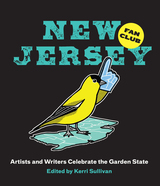 New Jersey Fan Club: Artists and Writers Celebrate the Garden State
Kerri Sullivan
Rutgers University Press, 2022 NJSAA Edited Works Award Winner (2023)
Despite the many jokes and stereotypes about New Jersey and its residents, in reality the state is a wildly diverse place, home to a vast variety of landscapes, cultures, and people. There is no singular New Jersey experience, and the stories that its residents have to share about the state will surprise you.
New Jersey Fan Club: Artists and Writers Celebrate the Garden State is an eclectic anthology featuring personal essays, interviews, and comics from a broad group of established and emerging writers and artists who have something to say about New Jersey. It offers a multifaceted look at the state’s history and significance, told through narrative nonfiction, photographs, and illustrations.
New Jersey Fan Club is edited by Kerri Sullivan, founder of the popular Instagram account Jersey Collective (@jerseycollective), which features weekly takeovers by different New Jerseyans. This book functions the same way: it gives dozens of different contributors the chance to share what New Jersey looks like to them. The book is an exploration of how the same locale can shape people in different ways, and it will inspire readers to look at the Garden State with fresh eyes and appreciate its bounty of beautiful places and vibrant spaces.
 New Jersey Ferns and Fern Allies
Montgomery, James D.
Rutgers University Press, 1993 New Jersey is exceptionally rich in ferns, as three centuries of naturalists have recognized. Both amateur and professional botanists will welcome this new, complete, fully illustrated guide to the state's ferns and fern allies (the lycopods and horsetails). After an introduction to fern classification and nomenclature, the history of fern collecting, and the ecology and distribution of ferns within New Jersey, the authors describe eighty-three species, in thirty genera, and thiry-two hybrid forms (more than any other state). They include a fascinating account of the rare curly-grass fern, Schizaea pusilla, "New Jersy's most famous plant." For each species, the authors provide a detailed drawing and comments on taxonomy, habitat, chromosome counts, habits of growth, and status as endangered species. Distribution maps show not only where plants have been collected, but also the time period for the most recent date of collectionÐÐa convenient way of showing the plant's spread or depletion. Throughout, the book reflects the latest research by fern experts. An essential field guide and reference for naturalists, botanists, hikers, gardeners, and conservationists in New Jersey and the mid-Atlantic states.
 New Jersey for Kids
Sarver, Patrick
Rutgers University Press, 2012 Many parents in the Garden State are familiar with Great Adventure in Jackson, the boardwalk at Point Pleasant, and the Adventure Aquarium in Camden, but do they know about Kindermusik in Teaneck, the Young Chef’s Academy in Hillsborough, or the Buehler Challenger and Science Center in Paramus? In New Jersey for Kids, Patrick Sarver provides parents with a handy reference guide offering hundreds of educational and entertaining ideas for children and their parents to explore and enjoy. Activities are designed specifically for kids ages 12 and under and cover a wide array of fun ways to enrich their intellectual lives, build their athletic skills, express themselves creatively, or just have room to play. The activities covered include: - Robotics workshops
- Themed tea parties
- Plays and performances for children
- Museum tours, special exhibits, and programs for kids
- Pony rides and horseback riding lessons
- Specialized summer camps
- Arts and crafts classes
- Gymnastics classes
- Zoos and nature activities
- Hockey, soccer, and baseball clinics
- Acting and dancing lessons
- Play centers with slides, ball pits, and bounce castles
Busy parents no longer need to spend hours surfing the Web and scouting out resources to find nearby activities their kids might enjoy. New Jersey for Kids puts this information right in the palms of their hands. Chapters are organized by category so it is easy to locate just the right activities to suit an individual child’s interests, whether it’s a fun way to spend an afternoon or a class that might inspire a lifelong passion. Along with descriptions and commentary, listings include recommended age ranges, handicap accessibility, and estimated durations of activities as well as practical information on hours, price ranges, Web sites, and phone numbers.
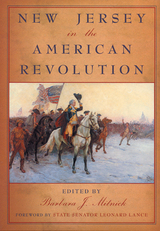 New Jersey in the American Revolution
Mitnick, Barbara J
Rutgers University Press, 2005 Barbara J. Mitnick has edited a remarkably comprehensive anthology, bringing new life to the rich and turbulent late eighteenth-century period in New Jersey. Originally conceived as a legacy of the state's 225th Anniversary of the Revolution Celebration Commission and sponsored by the Washington Association of New Jersey, the volume brings together contributions by twelve outstanding and recognized experts on New Jersey history. Chapters explore topics including New Jersey as the "Crossroads of the Revolution," important military campaigns, the 1776 Constitution, and the significant contribution of blacks, Native Americans, and women. Reflecting the contemporary view that the war's impact extended beyond military engagements, original essays also discuss the fine and decorative arts, literature, architecture, archaeology, and social and economic conditions. The reader is presented with a picture of life in New Jersey both separate from as well as connected to the fight for American independence and the establishment of the nation. Fresh and significant observations, including the fact that soldiers fought 238 battles on New Jersey soil (more than any other state) and that the social and political changes resulting from the war were more revolutionary than evolutionary make this accessibly written, beautifully illustrated volume appeal to the lay reader as well as scholars of New Jersey and Revolutionary War history.
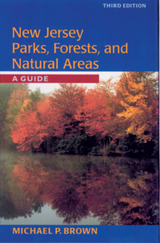 New Jersey Parks, Forests, and Natural Areas: A Guide
Brown, Michael P
Rutgers University Press, 2004 Want to know where in New Jersey you can go fossil hunting? How about cranberry harvesting? Perhaps you’d like to find the most accessible Garden State fishing areas for people with disabilities? Or maybe you’ve just been wondering how Double Trouble State Park got its name?
Now in its third edition, this updated guide—the first of its kind for New Jersey—lists over 250 parks, forests, and natural areas in the Garden State, from national, state, city, and county parks to nature preserves run by non-profit groups, arboretums, and undeveloped wildlife management areas. Wherever you live in New Jersey, you can find a beautiful place nearby for picnicking, hiking, camping, hunting, fishing, boating, and a host of other outdoor activities. All are open to the public, and most are free or charge only a small fee. Michael Brown divides the state into six regions along county lines and includes helpful maps, so outdoor enthusiasts can easily plan excursions.
For each park, the guide provides up-to-date, practical information about locations and phone numbers, fees, hours, seasons, acreage, regulations, handicap access, special facilities and activities, campsites, swimming and boat launching sites, restrooms, playgrounds and picnic sites, hunting and fishing, and hiking. Also included in this edition is broadened coverage of mountain biking and horseback riding.
New Jersey Politics and Government, 4th edition: The Suburbs Come of Age
Salmore, Barbara G
Rutgers University Press, 2013 This fourth edition is thoroughly updated to reflect the challenges New Jersey has overcome and those it continues to face: sustaining growth and opportunity in a multicultural society, providing quality education, and protecting the environment. State politics and government have been almost entirely reshaped in recent decades, and those changes are analyzed in every chapter of this edition.
Offering a comprehensive overview of New Jersey politics and government, chapters cover the state’s political history; campaigns and elections; interest groups; the constitution; the development of government institutions; relationships with neighboring states, the federal government, and its own municipalities and counties; tax and spending policies; education; and quality of life issues.
New Jersey Politics and Government: The Suburbs Come of Age
Salmore, Barbara G
Rutgers University Press, 2008
As the United States moves toward becoming a nation of suburbs, New Jersey is a place more Americans should get to know. The challenges it has overcome and those it continues to face provide lessons that will help states across the country address the struggles of providing quality education, protecting the environment, improving the quality of life, and accommodating a multicultural society while sustaining growth and opportunity. Written by two of the most respected political analysts in the state, this is the only book available that provides a comprehensive overview of politics and government in New Jersey. This thoroughly revised third edition, published for the first time by Rutgers University Press, also highlights recent scandals within the government and the high profile of the governorship.
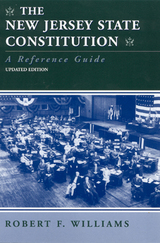 The New Jersey State Constitution: A Reference Guide
Williams, Robert F
Rutgers University Press, 1997 This comprehensive reference guide provides an in-depth study of New Jersey's constitution.
The year 1997 marks the fiftieth anniversary of New Jerseys wellregarded state constitution. State constitutions, although the highest source of law within a state, are not well understood by citizens, government officials, historians, political scientists, lawyers, or even judges.
This book is the first single volume to combine a detailed review of New Jersey's constitutional history and analysis of each section of the current constitution. It is the standard work on New Jersey constitutional development and law. Divided into two parts, the book first covers the historical development of the constitutions of 1776, 1844, the Constitutional Commission of 1873, and the current constitution written in 1947. It then traces the origins and major judicial interpretations of each section of the present-day constitution. It concludes with an exhaustive bibliographical essay which organizes the most complete listing of primary and secondary sources to date.
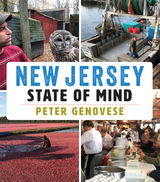 New Jersey State of Mind
Peter Genovese
Rutgers University Press, 2020 No state has been so frequently mocked, maligned, or misunderstood as New Jersey. Yet the state is filled with amazing places and people who rarely receive the media attention they deserve. For the past twenty years Star-Ledger columnist Peter Genovese has been one of the rare voices singing the praises of his state’s hidden wonders and gritty charms.
For this new book, Genovese spent months scouring the state for rich stories and fascinating locations. New Jersey State of Mind takes us on a journey to over twenty-five of these places and introduces us to the colorful characters who live and work there, from a demolition derby driver to a female craft brewer, and from a Cuban celebrity chef to a Portuguese pig breeder. He also reveals the many natural wonders that have earned New Jersey its “Garden State” nickname, from cranberry bogs to river tours to wild bird sanctuaries.
Collectively, these pieces paint a picture of a diverse state full of hard-working individuals who care for their communities. This book cuts through the myths and stereotypes surrounding the state and reveals the proud beating heart of the real New Jersey.
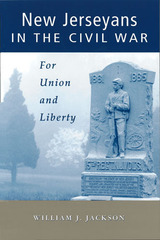 New Jerseyans in the Civil War: For Union and Liberty
Jackson, William J
Rutgers University Press, 2006 The Civil War divided New Jersey just as it did the nation. As a small state sandwiched between two large and powerful neighbors, New Jersey had always enthusiastically supported the creation of a strong central government. On the other hand, many New Jersey citizens did not share the anti-slavery sentiments of the North; they supported property rights of slave owners and believed in the natural inferiority of blacks. Subsequently, when southern states began to secede from the Union to form the Confederacy, New Jerseyans were left divided and confused. William J. Jackson examines the ironies, paradoxes, and contradictions that characterized New Jersey's unique historical role in the war. This is the only book to incorporate social and political history with that of military history and strategy. Civil War aficionados and historians will also welcome Jackson's analysis of the participation of New Jersey African Americans on the home front and in the military.
 New Jersey's Coastal Heritage: A Guide
Di Ionno, Mark
Rutgers University Press, 1997 Most people see the Jersey Shore as sun, sand, and surf . . . and hours in bumper-to-bumper traffic on the Garden State Parkway. But theres much more to the Shore!Long before the first hotel, miniature golf range, and amusement pier were built, explorers, sailors, and settlers were drawn to New Jerseys coast and left their mark upon it. In this book, Mark Di Ionno invites you to join him in discovering New Jerseys rich and varied coastal heritage. Hell take you on a personal tour to explore the Sandy Hook Lighthouse and Spermaceti Cove Station, admire offbeat collections of saltwater taffy boxes and sand art in Atlantic City, spend an afternoon at Brigantine and unravel the legend of Captain Kidd, marvel at the skills of Tuckertons boatbuilders, discover New Jerseys own version of the Boston Tea Party in Greenwich, and find inspiration at Ocean Grove, a Methodist meeting place. Organized by county and amply illustrated with photographs and maps, the guides entries give directions and information about hours, programs, and accessibility, and, above all, lively descriptions of the local history and cultural traditions that make each place special. Di Ionno includes many sites on the National Park Services Coastal Heritage Trail, but roves beyond the Trail to highlight a host of other wonderful museums, buildings, byways, and landmarks that could not be incorporated into the official trail.
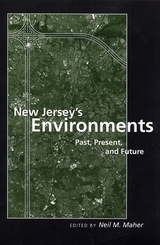 New Jersey's Environments: Past, Present, and Future
Maher, Neil M
Rutgers University Press, 2006 Americans often think of New Jersey as an environmental nightmare. As seen from its infamous turnpike, which is how many travelers experience the Garden State, it is difficult not to be troubled by the wealth of industrial plants, belching smokestacks, and hills upon hills of landfills. Yet those living and working in New Jersey often experience a very different environment. Despite its dense population and urban growth, two-thirds of the state remains covered in farmland and forest, and New Jersey has a larger percentage of land dedicated to state parks and forestland than the average for all states. It is this ecological paradox that makes New Jersey important for understanding the relationship between Americans and their natural world. In New Jersey’s Environments,historians, policy-makers, and earth scientists use a case study approach to uncover the causes and consequences of decisions regarding land use, resources, and conservation. Nine essays consider topics ranging from solid waste and wildlife management to the effects of sprawl on natural disaster preparedness. The state is astonishingly diverse and faces more than the usual competing interests from environmentalists, citizens, and businesses. This book documents the innovations and compromises created on behalf of and in response to growing environmental concerns in New Jersey, all of which set examples on the local level for nationwide and worldwide efforts that share the goal of protecting the natural world.
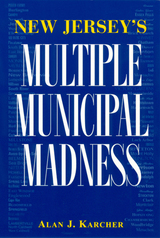 New Jersey's Multiple Municipal Madness
Karcher, Alan
Rutgers University Press, 1998 A critical look at how and why the boundary lines of New Jersey's 566 municipalities were drawn, pointing to the irrationality of these excessive divisions. Alan Karcher looks at the history and high cost of New Jersey's multiple municipalities. He investigates the economic considerations, political pressures, and personal agendas that created the bizarre configurations dividing the Garden State, while analyzing the public policies that allowed and even encouraged the formation of new municipalities. Karcher also examines the political dynamics that thwarted every effort of New Jersey metropolises to join the front ranks of major American cities. Karcher identifies the major motivations behind the unparalleled experience of New Jersey's municipal multiplication. He delves deeply into the primary causes of new lines being drawn, such as road appropriations, the location of a railroad station, control of a local school district, the regulation of alcohol sales, and the preservation of exclusivity prior to the acceptance of zoning. He also assesses the present situation and what has happened in the past 60 years since the municipal multiplication madness ceased, calling on elected officials to confront reality and correct yesterday's excesses. The genesis of the present political map of the state is a story that while interesting is not always charming, while fascinating is far from edifying. Little in the history can be called quaint. Rather it is a story of separation and exclusion, of division and greed, of preservation of prerogatives and prejudices. It is a story that supports the conclusion that these lines are rarely the product of chance, rather they were drawn by politicians with very human foibles and frailties, and with very narrow agendas-agendas that have proven to be egregiously expensive for today's taxpayers. Alan Karcher, the former Speaker of the New Jersey Assembly during the activist 1980s, currently practices municipal law in Middlesex County. He represents the third generation of his family to serve as a member of the New Jersey State Legislature.
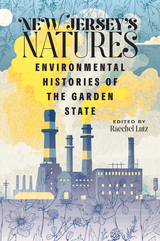 New Jersey's Natures: Environmental Histories of the Garden State
Raechel Lutz
Rutgers University Press, 2026 New Jersey’s Natures takes up the challenge of expanding academic and popular conceptions of New Jersey and its landscapes through the lens of environmental history. Scholars’ essays showcase the ways in which nature is integral to understandings of the state and its past as well as its future. These essays show that New Jersey should no longer solely be known as a place where pollution and suburbanization run amok, but rather a place where history happens.
The contributors investigate how nature and history are intertwined within this small but mighty state, covering topics from the colonial period to the present across North, South, and Central Jersey. They investigate natural features like the Delaware River and Bay, the Pinelands, and the unforgettable Jersey Shore. In this book you will find: indigenous Americans making meaning as settlers threaten their ways of life, Governor William Livingston considering Central Jersey’s features as he fights in the American Revolution, farmers building the state’s industrial agriculture, a foreign diplomat planting an arboretum, squatters in the swampy Meadowlands subverting social and economic norms, activists fighting for parks, forests, and beaches across two centuries, and much more.
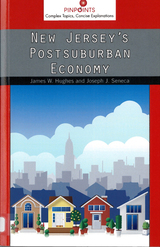 New Jersey's Postsuburban Economy
James W. Hughes and Joseph J. Seneca
Rutgers University Press, 2015 New Jersey has a long history of adapting to a changing economic climate. From its colonial origins to the present day, New Jersey's economy has continuously and successfully confronted the challenges and uncertainties of technological and demographic change, placing the state at the forefront of each national and global economic era. Based on James W. Hughes and Joseph J. Seneca’s nearly three-decade-long Rutgers Regional Report series, New Jersey’s Postsuburban Economy presents the issues confronting the state and brings to the forefront ideas for meeting these challenges.
From the rural agricultural and natural resource based economy and lifestyle of the seventeenth century to today’s postindustrial, suburban-dominated, automobile-dependent economy, the economic drivers which were considered to be an asset are now viewed by many to be the state’s greatest disadvantage. On the brink of yet another transformation, this one driven by a new technology and an internet based global economy, New Jersey will have to adapt itself yet again—this time to a postsuburban digital economy.
Hughes and Seneca describe the forces that are now propelling the state into yet another economic era. They do this in the context of historical economic transformations of New Jersey, setting out the technological, demographic, and transportation shifts that defined and drove them.
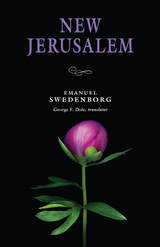 New Jerusalem
Emanuel Swedenborg
Swedenborg Foundation Publishers, 2016 Emanuel Swedenborg understood the city of New Jerusalem--as described in the book of Revelation--to mean not a physical city but an epoch of history, a new spiritual age that was just beginning to take shape during his lifetime in the eighteenth century. This short work, presented as a series of teachings that characterize this spiritual age to come, is also one of Swedenborg's most concise and readable summaries of his own theology. Building on fundamental concepts such as good, truth, will, and understanding, he describes the importance of love and usefulness in spiritual growth. In the second half of the volume he focuses on how this new theology relates to the church of his day and to church teachings about the Bible, the Lord's incarnation on earth, and rites such as baptism and the Holy Supper. Each short chapter is followed by extensive references back to his theological magnum opus, Secrets of Heaven. This volume is an excellent starting point for those who want an overview of Swedenborg's theology presented in his own words.
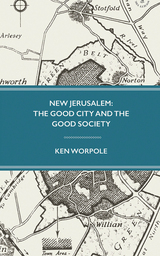 New Jerusalem: The Good City and the Good Society
Ken Worpole
Swedenborg Foundation Publishers, 2015 Utopian thinking as to how people might live together more harmoniously—the dream of the perfect city, the New Jerusalem—has been revived in different forms and at different times, from early medieval monasteries to contemporary alternative communities.
In 1902, Ebenezer Howard, renowned social reformer and founder of the garden movement, published Garden Cities of To-Morrow, a book originally to be called New Jerusalem and a work that became one of the most influential town planning documents of the twentieth century.
In New Jerusalem: The Good City and the Good Society, Ken Worpole reveals that utopian and visionary thinking, especially in relation to new forms of settlement and livelihood, has not gone away, even if it has gone underground.
With an unprecedented growth in the population of older people, along with increasing cultural and demographic change elsewhere in society, there is renewed interest in more convivial forms of urban design, as well as shared living. This interest draws on a long history of elective communities, including those influenced by the thought and works of Emanuel Swedenborg—a fascinating history with much to offer the architects and policymakers of today.
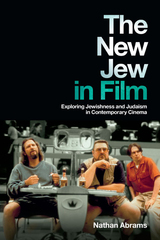 The New Jew in Film: Exploring Jewishness and Judaism in Contemporary Cinema
Abrams, Nathan
Rutgers University Press, 2012 Jewish film characters have existed almost as long as the medium itself. But around 1990, films about Jews and their representation in cinema multiplied and took on new forms, marking a significant departure from the past. With a fresh generation of Jewish filmmakers, writers, and actors at work, contemporary cinemas have been depicting a multiplicity of new variants, including tough Jews; brutish Jews; gay and lesbian Jews; Jewish cowboys, skinheads, and superheroes; and even Jews in space. The New Jew in Film is grounded in the study of over three hundred films from Hollywood and beyond. Nathan Abrams explores these new and changing depictions of Jews, Jewishness, and Judaism, providing a wider, more representative picture of this transformation. In this compelling, surprising, and provocative book, chapters explore masculinity, femininity, passivity, agency, and religion in addition to a departure into new territory—including bathrooms and food. Abrams’s concern is to reveal how the representation of the Jew is used to convey confidence or anxieties about Jewish identity and history as well as questions of racial, sexual, and gender politics. In doing so, he provides a welcome overview of important Jewish films produced globally over the past twenty years.
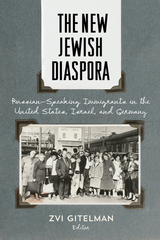 The New Jewish Diaspora: Russian-Speaking Immigrants in the United States, Israel, and Germany
Gitelman, Zvi
Rutgers University Press, 2016 In 1900 over five million Jews lived in the Russian empire; today, there are four times as many Russian-speaking Jews residing outside the former Soviet Union than there are in that region. The New Jewish Diaspora is the first English-language study of the Russian-speaking Jewish diaspora. This migration has made deep marks on the social, cultural, and political terrain of many countries, in particular the United States, Israel, and Germany. The contributors examine the varied ways these immigrants have adapted to new environments, while identifying the common cultural bonds that continue to unite them. Assembling an international array of experts on the Soviet and post-Soviet Jewish diaspora, the book makes room for a wide range of scholarly approaches, allowing readers to appreciate the significance of this migration from many different angles. Some chapters offer data-driven analyses that seek to quantify the impact Russian-speaking Jewish populations are making in their adoptive countries and their adaptations there. Others take a more ethnographic approach, using interviews and observations to determine how these immigrants integrate their old traditions and affiliations into their new identities. Further chapters examine how, despite the oceans separating them, members of this diaspora form imagined communities within cyberspace and through literature, enabling them to keep their shared culture alive. Above all, the scholars in The New Jewish Diaspora place the migration of Russian-speaking Jews in its historical and social contexts, showing where it fits within the larger historic saga of the Jewish diaspora, exploring its dynamic engagement with the contemporary world, and pointing to future paths these immigrants and their descendants might follow.
New Jewish Identities
András Kovács
Central European University Press, 2003 A unique collection of essays that deal with the intriguing and complex problems connected to the question of Jewish identity in the contemporary world. Based on a conference held in Budapest, Hungary in July 2001, it analyzes and compares how Jews conceive of their Jewishness. Do they see it in mostly religious, cultural or ethnic terms? What are the policy implications of these views and how have they been evolving? What do they portend for the future of world Jewry? The authors present new data from west European and post-Communist countries (Hungary, Moldova, Poland, Russia, Ukraine) and re-interpret data from other European countries as well as from Israel and the United States, making this a truly comprehensive, comparative and contemporary work.
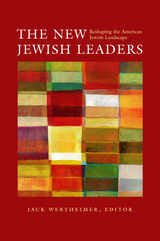 The New Jewish Leaders: Reshaping the American Jewish Landscape
Edited by Jack Wertheimer
Brandeis University Press, 2011 By the end of the twentieth century, a new generation of leaders had begun to assume positions of influence within established organizations. They quickly launched a slew of new initiatives directed at their age peers. Born during the last quarter of the twentieth century, these leaders came of age in a very different America and a different Jewish world than earlier generations. Not surprisingly, their worldview and understanding of Jewish issues set them apart from their elders, as does their approach to organizing. Based upon extensive interviews and survey research, as well as an examination of the websites frequented by younger Jews and personal observation of their programs, The New Jewish Leaders presents a pioneering account of the renewal of American Jewish community. This book describes how younger Jews organize, relate to collective Jewish efforts, and think about current Jewish issues. It also offers a glimpse of how they re-envision American Jewish communal arrangements. What emerges is a fascinating exploration of Jewish community in America today—and tomorrow.
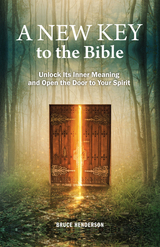 A New Key to the Bible: Unlock Its Inner Meaning and Open the Door to Your Spirit
BRUCE HENDERSON
Swedenborg Foundation Publishers, 2018 If the Bible is a divinely-inspired moral guide for personal and social good, why does it contain so many stories that seem to glorify violence and the mistreatment of others? Why does God sometimes seem so angry and cruel? And what about the parts of the Bible that just don’t make sense?
In his vast writings, eighteenth-century spiritual teacher Emanuel Swedenborg offers clarification: beneath the often-confusing literal text of the Bible is a clear inner meaning that directly points to an inclusive, always-loving, always-present God. In A New Key to the Bible: Unlock Its Inner Meaning and Open the Door to Your Spirit, author Bruce Henderson guides the reader through Swedenborg’s interpretation of the Bible, offering up a thought-provoking yet digestible way to understand the Creation story, as well as other famous parables such as Adam and Eve, Noah’s Ark, Abraham and Sarah, Moses, the life of Jesus, and the apocalyptic imagery of Revelation. At each step of the way, Henderson shows how these Scripture stories written thousands of years ago reflect our own spiritual paths and give meaning to the challenges we face along our journey in the present day.
For readers new to Swedenborg, A New Key to the Bible serves as an overview of the thousands of pages Swedenborg wrote about the inner meaning of the Bible. For spiritual seekers who feel a connection to the Bible but are sometimes troubled by its contents, Swedenborg reassures with a transcendent level of understanding about how God wants to inspire us through sacred text.
 The New Kingdom of Granada: The Making and Unmaking of Spain's Atlantic Empire
Santiago Muñoz-Arbeláez
Duke University Press, 2025 The New Kingdom of Granada tells the history of the making and unmaking of empire in the diverse and decentralized Indigenous landscapes of the Northern Andes. Santiago Muñoz-Arbeláez examines the intricate and disputed processes that reshaped the peoples and landscapes of present-day Colombia into a kingdom within the global Spanish monarchy. Drawing on correspondence, visitation reports, judicial records, maps, textiles, and accounting and legal documents created by Europeans and Indigenous peoples, Muñoz-Arbeláez outlines the painstaking century-long effort between 1530 and 1630 to consolidate the kingdom. A diverse group of people that included Indigenous interpreters, scribes, and intellectuals spearheaded these projects, which eventually expanded colonial control outward from its base in the highland Andean plateaus down to the lowland river valleys. Meanwhile, autonomous Indigenous political projects constantly threatened imperial rule, as rebels often encircled the kingdom and seized the corridors that linked it to Spain. By foregrounding the kingdom’s difficult establishment and tenuous hold on power, Muñoz-Arbeláez challenges traditional understandings of imperial politics and the myriad ways Indigenous peoples participated in, disputed, and negotiated the establishment of colonial rule.
 New Korean Wave: Transnational Cultural Power in the Age of Social Media
Dal Yong Jin
University of Illinois Press, 2016 The 2012 smash "Gangnam Style" by the Seoul-based rapper Psy capped the triumph of Hallyu , the Korean Wave of music, film, and other cultural forms that have become a worldwide sensation. Dal Yong Jin analyzes the social and technological trends that transformed South Korean entertainment from a mostly regional interest aimed at families into a global powerhouse geared toward tech-crazy youth. Blending analysis with insights from fans and industry insiders, Jin shows how Hallyu exploited a media landscape and dramatically changed with the 2008 emergence of smartphones and social media, designating this new Korean Wave as Hallyu 2.0. Hands-on government support, meanwhile, focused on creative industries as a significant part of the economy and turned intellectual property rights into a significant revenue source. Jin also delves into less-studied forms like animation and online games, the significance of social meaning in the development of local Korean popular culture, and the political economy of Korean popular culture and digital technologies in a global context.
A New Language, A New World: Italian Immigrants in the United States, 1890-1945
Nancy C. Carnevale
University of Illinois Press, 2012 An examination of Italian immigrants and their children in the early twentieth century, A New Language, A New World is the first full-length historical case study of one immigrant group's experience with language in America. Incorporating the interdisciplinary literature on language within a historical framework, Nancy C. Carnevale illustrates the complexity of the topic of language in American immigrant life. By looking at language from the perspectives of both immigrants and the dominant culture as well as their interaction, this book reveals the role of language in the formation of ethnic identity and the often coercive context within which immigrants must negotiate this process.
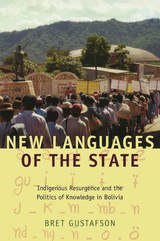 New Languages of the State: Indigenous Resurgence and the Politics of Knowledge in Bolivia
Bret Gustafson
Duke University Press, 2009 During the mid-1990s, a bilingual intercultural education initiative was launched to promote the introduction of indigenous languages alongside Spanish in public elementary schools in Bolivia’s indigenous regions. Bret Gustafson spent fourteen years studying and working in southeastern Bolivia with the Guarani, who were at the vanguard of the movement for bilingual education. Drawing on his collaborative work with indigenous organizations and bilingual-education activists as well as more traditional ethnographic research, Gustafson traces two decades of indigenous resurgence and education politics in Bolivia, from the 1980s through the election of Evo Morales in 2005. Bilingual education was a component of education reform linked to foreign-aid development mandates, and foreign aid workers figure in New Languages of the State, as do teachers and their unions, transnational intellectual networks, and assertive indigenous political and intellectual movements across the Andes. Gustafson shows that bilingual education is an issue that extends far beyond the classroom. Public schools are at the center of a broader battle over territory, power, and knowledge as indigenous movements across Latin America actively defend their languages and knowledge systems. In attempting to decolonize nation-states, the indigenous movements are challenging deep-rooted colonial racism and neoliberal reforms intended to mold public education to serve the market. Meanwhile, market reformers nominally embrace cultural pluralism while implementing political and economic policies that exacerbate inequality. Juxtaposing Guarani life, language, and activism with intimate portraits of reform politics among academics, bureaucrats, and others in and beyond La Paz, Gustafson illuminates the issues, strategic dilemmas, and imperfect alliances behind bilingual intercultural education.
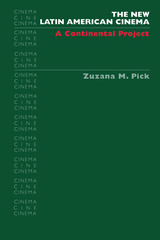 The New Latin American Cinema: A Continental Project
By Zusana Pick
University of Texas Press, 1993 During the 1967 festival of Latin American Cinema in Viña del Mar, Chile, a group of filmmakers who wanted to use film as an instrument of social awareness and change formed the New Latin American Cinema. Nearly three decades later, the New Cinema has produced an impressive body of films, critical essays, and manifestos that uses social theory to inform filmmaking practices. This book explores the institutional and aesthetic foundations of the New Latin American Cinema. Zuzana Pick maps out six areas of inquiry—history, authorship, gender, popular cinema, ethnicity, and exile—and explores them through detailed discussions of nearly twenty films and their makers, including Camila (María Luisa Bemberg), The Guns (Ruy Guerra), and Frida (Paul Leduc). These investigations document how the New Latin American Cinema has used film as a tool to change society, to transform national expressions, to support international differences, and to assert regional autonomy.
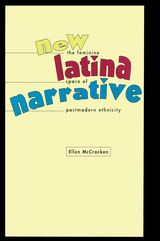 New Latina Narrative: The Feminine Space of Postmodern Ethnicity
Ellen McCracken
University of Arizona Press, 1999 During the last two decades of the twentieth century, U.S. Latina writers have made a profound impact on American letters with fiction in both mainstream and regional venues. Following on the heels of this vibrant and growing body of work, New Latina Narrative offers the first in-depth synthesis and literary analysis of this transethnic genre. Focusing on the dynamic writing published in the 1980s and 1990s by Mexican American, Puerto Rican, Cuban American, and Domincan American women, New Latina Narrative illustrates how these writers have redefined the concepts of multiculturalism and diversity in American society. As participants in both mainstream and grassroots forms of multiculturalism, these new Latina narrativists have created a feminine space within postmodern ethnicity, disrupting the idealistic veneer of diversity with which publishers often market this fiction. In this groundbreaking study, author Ellen McCracken opens the conventional boundaries of Latino/a literary criticism, incorporating elements of cultural studies theory and contemporary feminism. Emphasizing the diversity within new Latina narrative, McCracken discusses the works of more than two dozen writers, including Julia Alvarez, Denise Chávez, Sandra Cisneros, Cristina Garcia, Graciela Limón, Demetria Martínez, Pat Mora, Cherríe Moraga, Mary Helen Ponce, and Helena María Viramontes. She stresses such themes as the resignification of master narrative, the autobiographical self and collective identity, popular religiosity, subculture and transgression, and narrative harmony and dissonance. New Latina Narrative provides readers an enriched basis for reconceiving the overall Latino/a literary field and its relation to other contemporary literary and cultural trends. McCracken's original approach extends the Latina literary canon—both the works to be studied and the issues to be examined—resulting in a valuable work for all readers of women's studies, contemporary American literature, ethnic studies, communications, and sociology.
 New Laws of Robotics: Defending Human Expertise in the Age of AI
Frank Pasquale
Harvard University Press, 2020 “Essential reading for all who have a vested interest in the rise of AI.” —Daryl Li, AI & Society
“Thought-provoking…Explores how we can best try to ensure that robots work for us, rather than against us, and proposes a new set of laws to provide a conceptual framework for our thinking on the subject.” —Financial Times
“Pasquale calls for a society-wide reengineering of policy, politics, economics, and labor relations to set technology on a more regulated and egalitarian path…Makes a good case for injecting more bureaucracy into our techno-dreams, if we really want to make the world a better place.” —Wired
“Pasquale is one of the leading voices on the uneven and often unfair consequences of AI in our society...Every policymaker should read this book and seek his counsel.” —Safiya Noble, author of Algorithms of Oppression
Too many CEOs tell a simple story about the future of work: if a machine can do what you do, your job will be automated, and you will be replaced. They envision everyone from doctors to soldiers rendered superfluous by ever-more-powerful AI.
Another story is possible. In virtually every walk of life, robotic systems can make labor more valuable, not less. Frank Pasquale tells the story of nurses, teachers, designers, and others who partner with technologists, rather than meekly serving as data sources for their computerized replacements. This cooperation reveals the kind of technological advance that could bring us all better health care, education, and more, while maintaining meaningful work. These partnerships also show how law and regulation can promote prosperity for all, rather than a zero-sum race of humans against machines.
Policymakers must not allow corporations or engineers alone to answer questions about how far AI should be entrusted to assume tasks once performed by humans, or about the optimal mix of robotic and human interaction. The kind of automation we get—and who benefits from it—will depend on myriad small decisions about how to develop AI. Pasquale proposes ways to democratize that decision-making, rather than centralize it in unaccountable firms. Sober yet optimistic, New Laws of Robotics offers an inspiring vision of technological progress, in which human capacities and expertise are the irreplaceable center of an inclusive economy.
The New Left and Labor in 1960s
Peter B. Levy
University of Illinois Press, 1994 It is a powerful story: the relationship between the 1960s New Left and organized labor was summed up by hardhats confronting students and others over US involvement in Vietnam. But the real story goes beyond the "Love It or Leave It" signs and melees involving blue-collar types attacking protesters. Peter B. Levy challenges these images by exploring the complex relationship between the two groups. Early in the 1960s, the New Left and labor had cooperated to fight for civil rights and anti-poverty programs. But diverging opinions on the Vietnam War created a schism that divided these one-time allies. Levy shows how the war, combined with the emergence of the black power movement and the blossoming of the counterculture, drove a permanent wedge between the two sides and produced the polarization that remains to this day.
New Left Revisited
edited by John McMillian and Paul Buhle
Temple University Press, 2003 Starting with the premise that it is possible to say something significantly new about the 1960s and the New Left, the contributors to this volume trace the social roots, the various paths, and the legacies of the movement that set out to change America. As members of a younger generation of scholars, none of them (apart from Paul Buhle) has first-hand knowledge of the era. Their perspective as non-participants enables them to offer fresh interpretations of the regional and ideological differences that have been obscured in the standard histories and memoirs of the period. Reflecting the diversity of goals, the clashes of opinions, and the tumult of the time, these essays will engage seasoned scholars as well as students of the '60s.
New Letters to a Young Poet
Joan Margarit
Swan Isle Press, 2010 In these intimate pages, award-winning Catalan poet Joan Margarit offers a passionate defense of poetry and of the intelligible poem—the well-made text that can provide refuge, wisdom, and consolation. Inspired by Rilke's classic Letters to a Young Poet, this slender volume explores poetry as vocation, obsession, and partnership between writer and reader, a "road toward inner growth." For Margarit, poetry promises "a clarity that allows us mysteriously to live without the need to forget." This is essential reading for poets young and old, writers, and readers seeking insights into the creative process and "the way both poet and reader can find their own way to face solitude."
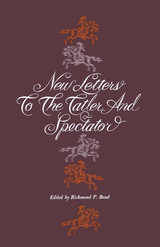 New Letters to the Tatler and Spectator
Edited by Richmond P. Bond
University of Texas Press, 1959 Ninety-six letters to the Tatler and the Spectator, representing what is probably the largest extant body of unpublished material relating directly to the two journals, appeared for the first time in print in this book. The original letters were not published in the Tatler or the Spectator, but they were preserved by the editors and eventually found their way into the Marlborough and the Tickell collections. They have been prepared for publication and edited, with notes and an introduction, by an authority in the field of early periodicals. The letters will be of especial interest to students of early eighteenth-century England, for few literary forms more clearly reflect the times in which they are written than the letter, particularly the letter to the editor. A wide range of writers is represented—the inarticulate and the witty, the serving maid and the gentleman. Subject matter is equally diverse, including such topics as women's petticoats, free thinking, the state lottery, the nuisance of a smoking wife, cock-throwing, and Platonic love. Why the letters were not published in the Tatler or the Spectator is a matter for conjecture. Some of them were apparently used by Addison or Steele as topics for essays. Occasionally a letter was received or rewritten by the editors and printed in an altered form. Whatever the reason for their survival, these letters will be of value to students of language and literary journalism, social conditions, and popular philosophy.
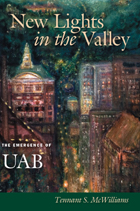 New Lights in the Valley: The Emergence of UAB
Tennant S. McWilliams
University of Alabama Press, 2007 A scholarly narrative of UAB from its nascent beginnings through the mid 1990s. While the economy and culture of the post—World War II South changed from an era of material capital (e.g., cotton and iron ore) to a period of social capital (intellectual development and networked approaches to social change), one of the most important components of urban life, the university, emerged as both a creator and a reflector of such modernization. This is the case with Birmingham and its youthful institution of higher learning, the University of Alabama at Birmingham. From its early days as a struggling offshoot of the capstone campus in Tuscaloosa, UAB’s journey to its current status as a major university has been a bumpy but interesting one. Tennant McWilliams, a longtime UAB history professor, explores the whole range of historical considerations, including UAB’s similarities and connections to trans-Atlantic civic universities; the irony of the shift from Big Steel to Big Medicine in Birmingham; the visionary administrations of Joseph F. Volker and others; and the evolving decision to make non-medical life at UAB less of a commuter experience and more of a traditional campus experience. McWilliams does not palliate the missteps and disputes that have, from time to time, impeded the institution’s progress. But he explains why, despite various hurdles and distractions, UAB has risen to be Alabama’s largest employer and can rightly boast that its complex of health care services, especially organ transplantation and neuroscience, as well as such fields as philosophy and psychology, are among the best in the nation.
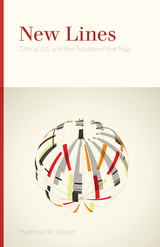 New Lines: Critical GIS and the Trouble of the Map
Matthew W. Wilson
University of Minnesota Press, 2017 New Lines takes the pulse of a society increasingly drawn to the power of the digital map, examining the conceptual and technical developments of the field of geographic information science as this work is refracted through a pervasive digital culture. Matthew W. Wilson draws together archival research on the birth of the digital map with a reconsideration of the critical turn in mapping and cartographic thought. Seeking to bridge a foundational divide within the discipline of geography—between cultural and human geographers and practitioners of Geographic Information Systems (GIS)—Wilson suggests that GIS practitioners may operate within a critical vacuum and may not fully contend with their placement within broader networks, the politics of mapping, the rise of the digital humanities, the activist possibilities of appropriating GIS technologies, and more. Employing the concept of the drawn and traced line, Wilson treads the theoretical terrain of Deleuze, Guattari, and Gunnar Olsson while grounding their thoughts with the hybrid impulse of the more-than-human thought of Donna Haraway. What results is a series of interventions—fractures in the lines directing everyday life—that provide the reader with an opportunity to consider the renewed urgency of forceful geographic representation. These five fractures are criticality, digitality, movement, attention, and quantification. New Lines examines their traces to find their potential and their necessity in the face of our frenetic digital life.
 A New Literary History of America
Edited by Greil Marcus and Werner Sollors
Harvard University Press, 2012 America is a nation making itself up as it goes along—a story of discovery and invention unfolding in speeches and images, letters and poetry, unprecedented feats of scholarship and imagination. In these myriad, multiform, endlessly changing expressions of the American experience, the authors and editors of this volume find a new American history.
In more than two hundred original essays, A New Literary History of America brings together the nation’s many voices. From the first conception of a New World in the sixteenth century to the latest re-envisioning of that world in cartoons, television, science fiction, and hip hop, the book gives us a new, kaleidoscopic view of what “Made in America” means. Literature, music, film, art, history, science, philosophy, political rhetoric—cultural creations of every kind appear in relation to each other, and to the time and place that give them shape.
The meeting of minds is extraordinary as T. J. Clark writes on Jackson Pollock, Paul Muldoon on Carl Sandburg, Camille Paglia on Tennessee Williams, Sarah Vowell on Grant Wood’s American Gothic, Walter Mosley on hard-boiled detective fiction, Jonathan Lethem on Thomas Edison, Gerald Early on Tarzan, Bharati Mukherjee on The Scarlet Letter, Gish Jen on Catcher in the Rye, and Ishmael Reed on Huckleberry Finn. From Anne Bradstreet and John Winthrop to Philip Roth and Toni Morrison, from Alexander Graham Bell and Stephen Foster to Alcoholics Anonymous, Life, Chuck Berry, Alfred Hitchcock, and Ronald Reagan, this is America singing, celebrating itself, and becoming something altogether different, plural, singular, new.
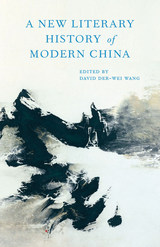 A New Literary History of Modern China
David Der-wei Wang
Harvard University Press, 2017 Literature, from the Chinese perspective, makes manifest the cosmic patterns that shape and complete the world—a process of “worlding” that is much more than mere representation. In that spirit, A New Literary History of Modern China looks beyond state-sanctioned works and official narratives to reveal China as it has seldom been seen before, through a rich spectrum of writings covering Chinese literature from the late-seventeenth century to the present.
Featuring over 140 Chinese and non-Chinese contributors from throughout the world, this landmark volume explores unconventional forms as well as traditional genres—pop song lyrics and presidential speeches, political treatises and prison-house jottings, to name just a few. Major figures such as Lu Xun, Shen Congwen, Eileen Chang, and Mo Yan appear in a new light, while lesser-known works illuminate turning points in recent history with unexpected clarity and force. Many essays emphasize Chinese authors’ influence on foreign writers as well as China’s receptivity to outside literary influences. Contemporary works that engage with ethnic minorities and environmental issues take their place in the critical discussion, alongside writers who embraced Chinese traditions and others who resisted. Writers’ assessments of the popularity of translated foreign-language classics and avant-garde subjects refute the notion of China as an insular and inward-looking culture.
A vibrant collection of contrasting voices and points of view, A New Literary History of Modern China is essential reading for anyone seeking a deeper understanding of China’s literary and cultural legacy.
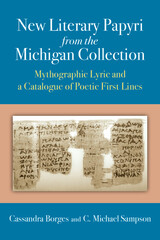 New Literary Papyri from the Michigan Collection: Mythographic Lyric and a Catalogue of Poetic First Lines
Cassandra Borges and C. Michael Sampson
University of Michigan Press, 2012 New texts from Greek antiquity continue to emerge on scraps of papyrus from the sands of Egypt, not only adding to the surviving corpus of classical and Hellenistic literature, but also occasionally offering a glimpse into how these poems were studied in antiquity. New Literary Papyri from the Michigan Collection: Mythographic Lyric and a Catalogue of Poetic First Lines presents three such new texts: an innovative lyric poem on the Trojan cycle, a scholarly anthology of lyric verses, and a brief but enigmatic third text. Cassandra Borges and C. Michael Sampson offer the original Greek text of these pieces, along with their scholarly commentary, analyzing their features in a variety of contexts—historical, cultural, poetic, mythological, religious, and scholarly. The fragments collected here are of considerable antiquity (late third to second century BCE) a fact that is significant inasmuch as it places them among the oldest Greek papyri, but all the more so because in this period, a scholarly community was thriving in Ptolemaic Alexandria, the political and cultural capital of Hellenistic Egypt. The fragments bear witness to that scholarly activity: not only is their anthology of poetic verses consistent with other scholarly selections, but the very survival of these texts may well be at least partially indebted to the work of the Alexandrians in studying and propagating Greek literature in Egypt. This edition supplements the 1970s work of Reinhold Merkelbach and Denys Page. Recent digitizing for the APIS project revealed a previously unsuspected join with other material, however, which alone warrants a new, comprehensive edition and analysis.
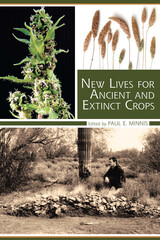 New Lives for Ancient and Extinct Crops
Edited by Paul E. Minnis
University of Arizona Press, 2014 Over many millennia, farmers across the world have domesticated literally thousands of species and developed tens of thousands of varieties of these plants. Despite the astonishing agricultural diversity that existed long ago, the world’s current food base has narrowed to a dangerous level. By studying the long and dynamic history of farming in the ancient past, archaeology can play a part in helping ensure the stability of the human food supply by identifying once-important crops and showing where and how such crops were grown in the past. Thanks to this work, extinct crops might even be redomesticated from their wild progenitors.
New Lives for Ancient and Extinct Crops profiles nine plant species that were important contributors to human diets and had medicinal uses in antiquity: maygrass, chenopod, marshelder, agave, little barley, chia, arrowroot, little millet, and bitter vetch. Each chapter is written by a well-known scholar, who illustrates the global value of the ancient crop record to inform the present. From eastern and western North America, Mesoamerica, South America, western Asia, and south-central Asia, the contributors provide examples of the unexpected wealth of information available in the archaeological record about ancient and extinct crops.
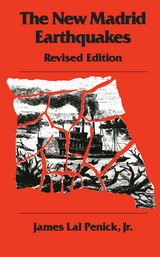 The New Madrid Earthquakes, Revised Edition
James Lal Penick, Jr.
University of Missouri Press, 1981 Since its publication in a cloth edition in 1976, Penick’s book has met with enormous regional appeal as well as critical acclaim. For the new paper edition, the author has written a new introduction. New material in the final chapter reports on the scientific inquiries into the New Madrid quakes since 1976. Critical comments on the cloth edition: “James Penick has put together a well-written account of the quakes and their effects upon people, animals, waterways, and land. Based on the scattered accounts of the times it offers a good insight into the reactions of persons suddenly confronted with the perils of the unknown. The vivid description of the devastation wrought upon the face of the land gives a picture of dramatic change brought about by the upheaval of natural forces. In short, reading Penick’s work one is readily caught up in the total violence of the event.”—American Historical Review “Penick provides information relevant to present studies of earthquakes in this area.”—Earthquake Information Bulletin
 The New Map of Empire: How Britain Imagined America before Independence
S. Max Edelson
Harvard University Press, 2017 After the Treaty of Paris ended the Seven Years’ War in 1763, British America stretched from Hudson Bay to the Florida Keys, from the Atlantic coast to the Mississippi River, and across new islands in the West Indies. To better rule these vast dominions, Britain set out to map its new territories with unprecedented rigor and precision. Max Edelson’s The New Map of Empire pictures the contested geography of the British Atlantic world and offers new explanations of the causes and consequences of Britain’s imperial ambitions in the generation before the American Revolution.
Under orders from King George III to reform the colonies, the Board of Trade dispatched surveyors to map far-flung frontiers, chart coastlines in the Gulf of St. Lawrence, sound Florida’s rivers, parcel tropical islands into plantation tracts, and mark boundaries with indigenous nations across the continental interior. Scaled to military standards of resolution, the maps they produced sought to capture the essential attributes of colonial spaces—their natural capacities for agriculture, navigation, and commerce—and give British officials the knowledge they needed to take command over colonization from across the Atlantic.
Britain’s vision of imperial control threatened to displace colonists as meaningful agents of empire and diminished what they viewed as their greatest historical accomplishment: settling the New World. As London’s mapmakers published these images of order in breathtaking American atlases, Continental and British forces were already engaged in a violent contest over who would control the real spaces they represented.
Accompanying Edelson’s innovative spatial history of British America are online visualizations of more than 250 original maps, plans, and charts.
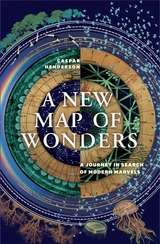 A New Map of Wonders: A Journey in Search of Modern Marvels
Caspar Henderson
University of Chicago Press, 2017 We live in a world that is known, every corner thoroughly explored. But has this knowledge cost us the ability to wonder? Wonder, Caspar Henderson argues, is at its most supremely valuable in just such a world because it reaffirms our humanity and gives us hope for the future. That’s the power of wonder, and that’s what we should aim to cultivate in our lives. But what are the wonders of the modern world?
Henderson’s brilliant exploration borrows from the form of one of the oldest and most widely known sources of wonder: maps. Large, detailed mappae mundi invited people in medieval Europe to vividly imagine places and possibilities they had never seen before: manticores with the head of a man, the body of a lion, and the stinging tail of a scorpion; tribes of one-eyed men who fought griffins for diamonds; and fearsome Scythian warriors who drank the blood of their enemies from their skulls. As outlandish as these maps and the stories that went with them sound to us today, Henderson argues that our views of the world today are sometimes no less incomplete or misleading. Scientists are only beginning to map the human brain, for example, revealing it as vastly more complex than any computer we can conceive. Our current understanding of physical reality is woefully incomplete. A New Map of Wonders explores these and other realms of the wonderful, in different times and cultures and in the present day, taking readers from Aboriginal Australian landscapes to sacred sites in Great Britain, all the while keeping sight questions such as the cognitive basis of wonder and the relationship between wonder and science.
Beautifully illustrated and written with wit and moral complexity, this sequel to The Book of Barely Imagined Beings is a fascinating account of the power of wonder and an unforgettable meditation on its importance to our future.
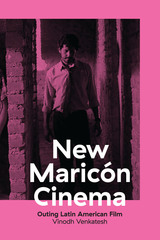 New Maricón Cinema: Outing Latin American Film
By Vinodh Venkatesh
University of Texas Press, 2016 Recent critically and commercially acclaimed Latin American films such as XXY, Contracorriente, and Plan B create an affective and bodily connection with viewers that elicits in them an emotive and empathic relationship with queer identities. Referring to these films as New Maricón Cinema, Vinodh Venkatesh argues that they represent a distinct break from what he terms Maricón Cinema, or a cinema that deals with sex and gender difference through an ethically and visually disaffected position, exemplified in films such as Fresa y chocolate, No se lo digas a nadie, and El lugar sin límites. Covering feature films from Argentina, Chile, Cuba, Ecuador, Mexico, Peru, the United States, and Venezuela, New Maricón Cinema is the first study to contextualize and analyze recent homo-/trans-/intersexed-themed cinema in Latin America within a broader historical and aesthetic genealogy. Working with theories of affect, circulation, and orientations, Venkatesh examines key scenes in the work of auteurs such as Marco Berger, Javier Fuentes-León, and Julia Solomonoff and in films including Antes que anochezca and Y tu mamá también to show how their use of an affective poetics situates and regenerates viewers in an ethically productive cinematic space. He further demonstrates that New Maricón Cinema has encouraged the production of “gay friendly” commercial films for popular audiences, which reflects wider sociocultural changes regarding gender difference and civil rights that are occurring in Latin America.
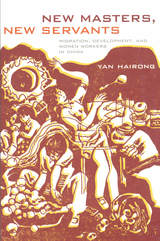 New Masters, New Servants: Migration, Development, and Women Workers in China
Yan Hairong
Duke University Press, 2008 On March 9, 1996, tens of thousands of readers of a daily newspaper in China’s Anhui province saw a photograph of two young women at a local long-distance bus station. Dressed in fashionable new winter coats and carrying luggage printed with Latin letters, the women were returning home from their jobs in one of China’s large cities. As the photo caption indicated, the image represented the “transformation of migrant women”; the women’s “transformation” was signaled by their status as consumers. New Masters, New Servants is an ethnography of class dynamics and the subject formation of migrant domestic workers. Based on her interviews with young women who migrated from China’s Anhui province to the city of Beijing to engage in domestic service for middle-class families, as well as interviews with employers, job placement agencies, and government officials, Yan Hairong explores what these migrant workers mean to the families that hire them, to urban economies, to rural provinces such as Anhui, and to the Chinese state. Above all, Yan focuses on the domestic workers’ self-conceptions, desires, and struggles. Yan analyzes how the migrant women workers are subjected to, make sense of, and reflect on a range of state and neoliberal discourses about development, modernity, consumption, self-worth, quality, and individual and collective longing and struggle. She offers keen insight into the workers’ desire and efforts to achieve suzhi (quality) through self-improvement, the way workers are treated by their employers, and representations of migrant domestic workers on television and the Internet and in newspapers and magazines. In so doing, Yan demonstrates that contestations over the meanings of migrant workers raise broad questions about the nature of wage labor, market economy, sociality, and postsocialism in contemporary China.
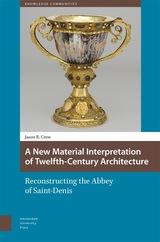 A New Material Interpretation of Twelfth-Century Architecture: Reconstructing the Abbey of Saint-Denis
Jason Crow
Amsterdam University Press, 2024 Today, we perceive Gothic cathedrals as light-filled forms representing the sacred. The colored light projected from brightly-colored stained glass windows onto the walls and floors of these buildings suggests the presence of divinity. Suger (1081–1151CE), the abbot of the monastery of Saint-Denis, is credited with originating Gothic architecture. However, focus on form and structure has elided attention to the material out of which medieval churches were made. When Suger describes the early church he was replacing, he says that the gold and gems it contained beamed outwardly with a gleaming light that filled the eye. When he restored his church and filled it with the shining souls of his ecclesia, he repeated God’s divine act of creation. His restored church imitated the precious stones that could be shaped and polished to reveal divine light. By crafting stone, Suger fulfilled the divine plan to make heaven on earth.
New Materialism: Interviews & Cartographies
Rick Dolphijn and Iris van der Tuin
Michigan Publishing, 2012 This book is the first monograph on the theme of “new materialism,” an emerging trend in 21st century thought that has already left its mark in such fields as philosophy, cultural theory, feminism, science studies, and the arts. The first part of the book contains elaborate interviews with some of the most prominent new materialist scholars of today: Rosi Braidotti, Manuel DeLanda, Karen Barad, and Quentin Meillassoux. The second part situates the new materialist tradition in contemporary thought by singling out its transversal methodology, its position on sexual differing, and by developing the ethical and political consequences of new materialism.
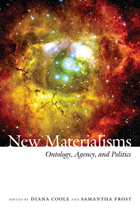 New Materialisms: Ontology, Agency, and Politics
Diana Coole and Samantha Frost, eds.
Duke University Press, 2010 New Materialisms brings into focus and explains the significance of the innovative materialist critiques that are emerging across the social sciences and humanities. By gathering essays that exemplify the new thinking about matter and processes of materialization, this important collection shows how scholars are reworking older materialist traditions, contemporary theoretical debates, and advances in scientific knowledge to address pressing ethical and political challenges. In the introduction, Diana Coole and Samantha Frost highlight common themes among the distinctive critical projects that comprise the new materialisms. The continuities they discern include a posthumanist conception of matter as lively or exhibiting agency, and a reengagement with both the material realities of everyday life and broader geopolitical and socioeconomic structures. Coole and Frost argue that contemporary economic, environmental, geopolitical, and technological developments demand new accounts of nature, agency, and social and political relationships; modes of inquiry that privilege consciousness and subjectivity are not adequate to the task. New materialist philosophies are needed to do justice to the complexities of twenty-first-century biopolitics and political economy, because they raise fundamental questions about the place of embodied humans in a material world and the ways that we produce, reproduce, and consume our material environment.
Contributors
Sara Ahmed
Jane Bennett
Rosi Braidotti
Pheng Cheah
Rey Chow
William E. Connolly
Diana Coole
Jason Edwards
Samantha Frost
Elizabeth Grosz
Sonia Kruks
Melissa A. Orlie
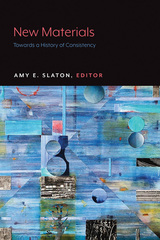 New Materials: Towards a History of Consistency
Amy E. Slaton
Lever Press, 2020 This edited volume gathers eight cases of industrial materials development, broadly conceived, from North America, Europe and Asia over the last 200 years. Whether given utility as building parts, fabrics, pharmaceuticals, or foodstuffs, whether seen by their proponents as human-made or “found in nature,” materials result from the designation of some matter as both knowable and worth knowing about. In following these determinations we learn that the production of physical novelty under industrial, imperial and other cultural conditions has historically accomplished a huge range of social effects, from accruals of status and wealth to demarcations of bodies and geographies. Among other cases, New Materials traces the beneficent self-identity of Quaker asylum planners who devised soundless metal cell locks in the early 19th century, and the inculcation of national pride attending Taiwanese carbon-fiber bicycle parts in the 21st; the racialized labor organizations promoted by California orange breeders in the 1910s, and bureaucratized distributions of blame for deadly high-rise fires a century later. Across eras and global regions New Materials reflects circumstances not made clear when technological innovation is explained solely as a by-product of modernizing impulses or critiqued simply as a craving for profit. Whether establishing the efficacy of nano-scale pharmaceuticals or the tastiness of farmed catfish, proponents of new materials enact complex political ideologies. In highlighting their actors’ conceptions of efficiency, certainty, safety, pleasure, pain, faith and identity, the authors reveal that to produce a “new material” is invariably to preserve other things, to sustain existing values and social structures.
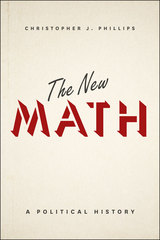 The New Math: A Political History
Christopher J. Phillips
University of Chicago Press, 2014 An era of sweeping cultural change in America, the postwar years saw the rise of beatniks and hippies, the birth of feminism, and the release of the first video game. It was also the era of new math. Introduced to US schools in the late 1950s and 1960s, the new math was a curricular answer to Cold War fears of American intellectual inadequacy. In the age of Sputnik and increasingly sophisticated technological systems and machines, math class came to be viewed as a crucial component of the education of intelligent, virtuous citizens who would be able to compete on a global scale.
In this history, Christopher J. Phillips examines the rise and fall of the new math as a marker of the period’s political and social ferment. Neither the new math curriculum designers nor its diverse legions of supporters concentrated on whether the new math would improve students’ calculation ability. Rather, they felt the new math would train children to think in the right way, instilling in students a set of mental habits that might better prepare them to be citizens of modern society—a world of complex challenges, rapid technological change, and unforeseeable futures. While Phillips grounds his argument in shifting perceptions of intellectual discipline and the underlying nature of mathematical knowledge, he also touches on long-standing debates over the place and relevance of mathematics in liberal education. And in so doing, he explores the essence of what it means to be an intelligent American—by the numbers.
New Media Archaeologies
Ben Roberts
Amsterdam University Press, 2019 This collection of essays highlights innovative work in the developing field of media archaeology. It explores the relationship between theory and practice and the relationship between media archaeology and other disciplines. There are three sections to the collection proposing new possible fields of research for media studies: Media Archaeological Theory; Experimental Media Archaeology; Media Archaeology at the Interface. The book includes essays from acknowledged experts in this expanding field, such as Thomas Elsaesser, Wanda Strauven and Jussi Parikka.
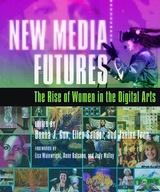 New Media Futures: The Rise of Women in the Digital Arts
Edited by Donna J. Cox, Ellen Sandor, and Janine Fron
University of Illinois Press, 2018 Trailblazing women working in digital arts media and education established the Midwest as an international center for the artistic and digital revolution in the 1980s and beyond. Foundational events at the University of Illinois and the School of the Art Institute of Chicago created an authentic, community-driven atmosphere of creative expression, innovation, and interdisciplinary collaboration that crossed gender lines and introduced artistically informed approaches to advanced research. Interweaving historical research with interviews and full-color illustrations, New Media Futures captures the spirit and contributions of twenty-two women working within emergent media as diverse as digital games, virtual reality, medicine, supercomputing visualization, and browser-based art. The editors and contributors give voice as creators integral to the development of these new media and place their works at the forefront of social change and artistic inquiry. What emerges is the dramatic story of how these Midwestern explorations in the digital arts produced a web of fascinating relationships. These fruitful collaborations helped usher in the digital age that propelled social media. Contributors: Carolina Cruz-Niera, Colleen Bushell, Nan Goggin, Mary Rasmussen, Dana Plepys, Maxine Brown, Martyl Langsdorf, Joan Truckenbrod, Barbara Sykes, Abina Manning, Annette Barbier, Margaret Dolinsky, Tiffany Holmes, Claudia Hart, Brenda Laurel, Copper Giloth, Jane Veeder, Sally Rosenthal, Lucy Petrovic, Donna J. Cox, Ellen Sandor, and Janine Fron.
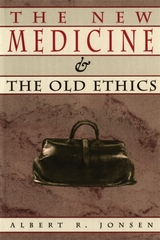 The New Medicine and the Old Ethics
Albert Jonsen
Harvard University Press, 1990 The history of medicine is a record of scientific discovery, clinical triumph, and personal sacrifice; it is also a record of obscurantism, dogmatism, and greed. In this humane book one of our leading medical ethicists addresses the conflict between altruism and self-interest, which he believes is built into the structure of medical care and woven into the very fabric of physicians’ lives. In the process, he reveals both the wisdom and the weaknesses of traditional ethics in an era of innovative—and controversial—health care.
This new medicine, only now coming into being, is no longer patient based. Patients are, more than ever before, representatives of a class—individuals with AIDS, the elderly, the comatose, the indigent—and the approach to treatment is influenced by the population from which those patients come. In addition, Albert Jonsen points out, medicine has moved from being an institution in which the physician is the dominant actor, the patient-physician relation the dominant scenario, and diagnosis and therapy the dominant script, to an institution in which physicians, a multitude of other providers, and newly empowered patients share equal billing. Jonsen calls for a return to the methods and values of the humanities, which he calls “the hormones that course through the complex institution of medicine and that enable it to respond to the constantly changing scientific, social, and economic environment.” Medicine must call up its memories and reflect upon its values.
Ranging through history from the mythical Asclepius to the latest recipient of a transplanted heart, Jonsen reformulates the old ethics in terms that bring justice, competence, and compassion to bear on contemporary biomedical dilemmas. This is clearly a book to be read not only by members of the healing and helping professions but by every thinking person.
The New Men of Power: America's Labor Leaders
C. Wright Mills
University of Illinois Press, 1948 When C. Wright Mills published The New Men of Power in 1948, he
thought labor leaders a new strategic elite and the unions a set of vanguard organizations that were crucial to "stopping the main drift towards war and slump." Today, as the unions once again seek to play a decisive role in American life, Mills' remarkable probe into the structure and ideology of mid-twentieth-century trade unionism remains essential reading. A new introduction by historian Nelson Lichtenstein offers insight into the Millsian political world at the time he wrote The New Men of Power.
The New Metaphysicals: Spirituality and the American Religious Imagination
Courtney Bender
University of Chicago Press, 2010 American spirituality—with its focus on individual meaning, experience, and exploration—is usually thought to be a product of the postmodern era. But, as The New Metaphysicals makes clear, contemporary American spirituality has historic roots in the nineteenth century and a great deal in common with traditional religious movements. To explore this world, Courtney Bender combines research into the history of the movement with fieldwork in Cambridge, Massachusetts—a key site of alternative religious inquiry from Emerson and William James to today. Through her ethnographic analysis, Bender discovers that a focus on the new, on progress, and on the way spiritual beliefs intersect with science obscures the historical roots of spirituality from its practitioners and those who study it alike—and shape an enduring set of modern religious possibilities in the process.
New Methodologies for Understanding Radar Data
Amit Kumar Mishra
The Institution of Engineering and Technology, 2021 Research in the domain of radar signal understanding has seen interesting advances in recent years, mainly due to the developments around cognitive radar and the use of modern machine learning algorithms. This book brings together these strands of research into a coherent and holistic picture, presenting a consolidated approach to understanding radar signals.
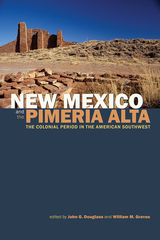 New Mexico and the Pimería Alta: The Colonial Period in the American Southwest
John G. Douglass
University Press of Colorado, 2017 Focusing on the two major areas of the Southwest that witnessed the most intensive and sustained colonial encounters, New Mexico and the Pimería Alta compares how different forms of colonialism and indigenous political economies resulted in diverse outcomes for colonists and Native peoples. Taking a holistic approach and studying both colonist and indigenous perspectives through archaeological, ethnohistoric, historic, and landscape data, contributors examine how the processes of colonialism played out in the American Southwest. Although these broad areas—New Mexico and southern Arizona/northern Sonora—share a similar early colonial history, the particular combination of players, sociohistorical trajectories, and social relations within each area led to, and were transformed by, markedly diverse colonial encounters. Understanding these different mixes of players, history, and social relations provides the foundation for conceptualizing the enormous changes wrought by colonialism throughout the region. The presentations of different cultural trajectories also offer important avenues for future thought and discussion on the strategies for missionization and colonialism. The case studies tackle how cultures evolved in the light of radical transformations in cultural traits or traditions and how different groups reconciled to this change. A much needed up-to-date examination of the colonial era in the Southwest, New Mexico and the Pimería Alta demonstrates the intertwined relationships between cultural continuity and transformation during a time of immense change and highlights contemporary thought on the colonial experience. Contributors: Joseph Aguilar, Jimmy Arterberry, Heather Atherton, Dale Brenneman, J. Andrew Darling, John G. Douglass, B. Sunday Eiselt, Severin Fowles, William M. Graves, Lauren Jelinek, Kelly L. Jenks, Stewart B. Koyiyumptewa, Phillip O. Leckman, Matthew Liebmann, Kent G. Lightfoot, Lindsay Montgomery, Barnet Pavao-Zuckerman, Robert Preucel, Matthew Schmader, Thomas E. Sheridan, Colleen Strawhacker, J. Homer Thiel, David Hurst Thomas, Laurie D. Webster
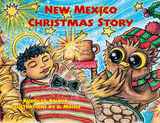 New Mexico Christmas Story: Owl in a Straw Hat 3
Rudolfo Anaya
Museum of New Mexico Press, 2020 Acclaimed New Mexico author Rudolfo Anaya presents a northern New Mexico Christmas tale in this third volume from his Owl in a Straw Hat series featuring the loveable Ollie Tecolote and his Wisdom School classmates Uno the Unicorn, Jackie Jackalope, Bessie Beaver, Sally Skunk, Robbie Rabbit, and Ninja Raccoon. The story begins on Christmas Eve morning in Chimayó and the students play in the snow and decorate a Christmas tree for the classroom. They are looking forward to the evening’s activities. Nana, their teacher, is making posole and chile colorado and has invited some special guests to join them for dinner. After that Nana says they’ll walk to El Santuario to visit the Santo Niño and promises hot chocolate and biscochitos afterward! Along the way, they will act the parts of the shepherds in Los pastores, the Shepherds’ Play, which is about shepherds visiting the newborn baby Jesus and bringing him gifts. At the end of their journey, they too will visit the Nativity and bring their own gifts on this magical night.
 New Mexico Poetry Anthology 2023
Levi Romero
Museum of New Mexico Press, 2023 Finalist, Poetry, Reading the West (Mountains and Plains Independent Booksellers Association)
Best Poetry Books of 2023, Book Riot "This anthology explores plenty of themes, including community, culture, family, history, and identity…. [it] even features poems in Spanish, encompassing themes such as their city and the experiences of asylum seekers. 'Querido Nuevo México, // Te pregunto, pa’ ‘onde vas? (Dear New Mexico // I ask you, where are you going?)' writes Carmella Scorcia Pacheco, who wonders about the past, present, and the future of New Mexico."—Book Riot
“Poetry of Place: A selection of poems from the New Mexico Poetry Anthology 2023 defines the essence of the Land of Enchantment.” —New Mexico Magazine
“Many of the selections are published bilingually in Spanish-English translation and other languages including indigenous tongues and Yiddish are to be found in these pages. It’s all here: Farolitos. Sephardic Jewish rituals. Family traditions. Grief. Recovery. Resilience. Adobes. Santa Fe. Albuquerque. Taos. Los Lunas. Espanola. Mesilla. Cities, villages, ranches, farms. The homeless. Asylum-seekers. Outlaws. Dancers. Matanzas. Basketball. Mountains. Llanos. Guns. Syringes. Rattlesnakes. Scorpions. Roadrunners. Sandhill cranes. Coyotes. Cattle. Horses. Babies. Abuelitos. Ghosts. Elders. Gringas. Sunsets …. This grand book could come from nowhere else BUT New Mexico, and, arguably only from the present time, the third decade of this 21st century Southwestern/Norteño soul. It’s that special.”— Bill Nevins, Enchanted Circle
“The poems…can be enjoyed in brief, bite-sized readings or in longer sittings. Read them silently or aloud.”— David Steinberg, Albuquerque Journal
These voices rise as a canto, singing the joys, sorrows, and praises of individual experiences to form a poetry collective that encompasses the poetic-cultural landscape that is New Mexico.”—Levi Romero (New Mexico Inaugural Poet Laureate) and Michelle Otero (Emerita Albuquerque Poet Laureate) New Mexico Poetry Anthology 2023 is an ode and homage to nuestra querencia, our beloved homeland. Two hundred original, previously unpublished poems resonate themes including community, culture, history, identity, landscape, and water. From a diverse group of poets, the poems are introspective and personal; reflective and astute; steady and celebratory. Including poignant, unique, even humorous perspectives on life in New Mexico influenced by the COVID-19 pandemic, this collective of voices serves as a welcome remedio to all aspects of post-pandemic life, for ears aching for words of beauty, strength, and solace as we emerge from the cocoon of survivability.
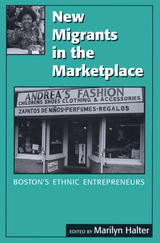 New Migrants in the Marketplace: Boston's Ethnic Entrepreneurs
Marilyn Halter
University of Massachusetts Press, 2013 More than fifty years after publication of Oscar Handlin's pioneering work, Boston's Immigrants, this book takes a fresh look at the city's most recent arrivals. Although Massachusetts ranks high in the United States in immigrant arrivals, it has been little studied in the scholarship of either recent migration or ethnic enterprise. This book seeks to redress that oversight.
Using an ethnographic, comparative approach, New Migrants in the Marketplace: Boston's Ethnic Entrepreneurs examines the economic culture and small business activity of a range of new migrant groups in the Greater Boston Area, including Jews from the former Soviet Union, British West Indians, Greeks, Puerto Ricans, Dominicans, Khmers, and Haitians.
Contributors are Mehdi Bozorgmehr, Claudia Der-Martirosian, Marilyn Halter, Violet Johnson, Peggy Levitt, Ivan Light, Caesar Mavratsas, Georges Sabagh, and Nancy Smith-Hefner. The book includes a photo essay by Steven J. Gold.
 The New Missionaries: Memoirs of a Foreign Adviser in Less-Developed Countries
Richard D. Mallon
Harvard University Press This volume looks at the changing face of policy advising from the perspective of the author's forty years of work in and for developing countries. Both a personal memoir and an essay on the nature of the development profession, the book will be of particular interest to those just starting their careers as policy advisers.
The main lesson to be learned, says the author, is that "there is no common formula for solving a country's problems. Each society must come up with its own formula, in which economic policy is only one important variable in a complex equation. We missionaries can best help our counterparts carry out this daunting task by teaching more than preaching, and by insisting that they themselves take full responsibility for their recommendations and actions."
Richard D. Mallon is a Fellow Emeritus of the Harvard Institute for International Development. He has provided macroeconomic policy and planning advice in fifteen countries.
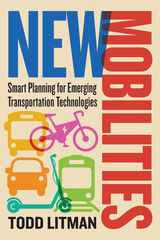 New Mobilities: Smart Planning for Emerging Transportation Technologies
Todd Litman
Island Press, 2021 New transportation technologies can expand our world. During the last century, motorized modes increased our mobility by an order of magnitude, providing large benefits, but also imposing huge costs on individuals and communities. Faster and more expensive modes were favored over those that are more affordable, efficient, and healthy. As new transportation innovations become available, from e-scooters to autonomous cars, how do we make decisions that benefit our communities?
In New Mobilities: Smart Planning for Emerging Transportation Technologies, transportation expert Todd Litman examines 12 emerging transportation modes and services that are likely to significantly affect our lives: bike- and carsharing, micro-mobilities, ridehailing and micro-transit, public transit innovations, telework, autonomous and electric vehicles, air taxis, mobility prioritization, and logistics management. These innovations allow people to scoot, ride, and fly like never before, but can also impose significant costs on users and communities. Planners need detailed information on their potential benefits and impacts to make informed choices.
Litman critically evaluates these new technologies and services and provides practical guidance for optimizing them. He systematically examines how each New Mobility is likely to affect travel activity (how and how much people travel); consumer costs and affordability; roadway infrastructure design and costs; parking demand; land use development patterns; public safety and health; energy and pollution emissions; and economic opportunity and fairness.
Public policies around New Mobilities can either help create heaven, a well-planned transportation system that uses new technologies intelligently, or hell, a poorly planned transportation system that is overwhelmed by conflicting and costly, unhealthy, and inequitable modes. His expert analysis will help planners, local policymakers, and concerned citizens to make informed choices about the New Mobility revolution.
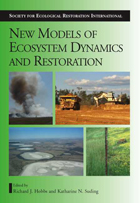 New Models for Ecosystem Dynamics and Restoration
Edited by Richard J. Hobbs and Katharine N. Suding
Island Press, 2008 As scientific understanding about ecological processes has grown, the idea that ecosystem dynamics are complex, nonlinear, and often unpredictable has gained prominence. Of particular importance is the idea that rather than following an inevitable progression toward an ultimate endpoint, some ecosystems may occur in a number of states depending on past and present ecological conditions. The emerging idea of “restoration thresholds” also enables scientists to recognize when ecological systems are likely to recover on their own and when active restoration efforts are needed.
Conceptual models based on alternative stable states and restoration thresholds can help inform restoration efforts. New Models for Ecosystem Dynamics and Restoration brings together leading experts from around the world to explore how conceptual models of ecosystem dynamics can be applied to the recovery of degraded systems and how recent advances in our understanding of ecosystem and landscape dynamics can be translated into conceptual and practical frameworks for restoration.
In the first part of the book, background chapters present and discuss the basic concepts and models and explore the implications of new scientific research on restoration practice. The second part considers the dynamics and restoration of different ecosystems, ranging from arid lands to grasslands, woodlands, and savannahs, to forests and wetlands, to production landscapes. A summary chapter by the editors discusses the implications of theory and practice of the ideas described in preceding chapters.
New Models for Ecosystem Dynamics and Restoration aims to widen the scope and increase the application of threshold models by critiquing their application in a wide range of ecosystem types. It will also help scientists and restorationists correctly diagnose ecosystem damage, identify restoration thresholds, and develop corrective methodologies that can overcome such thresholds.
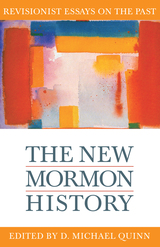 The New Mormon History: Revisionist Essays on the Past
D. Michael Quinn
Signature Books, 1992 The New Mormon History is the banner under which many professional historians today approach Latter-day Saint historiography. Scholars who embrace this term attempt to put significant events into context rather than bracketing data that might seem challenging to traditional assumptions. These scholars are also as interested in the experience of the rank-and-file as in the lives and edicts of the leaders, and pursue questions about women, minorities, domestic life, diet, fashion, and the common church experience. They employ statistical analysis and theories and methods of the social sciences in their work.
In this collection, D. Michael Quinn has selected fifteen essays which demonstrate the methods of this new history. Contributors include Thomas G. Alexander, James B. Allen, Leonard J. Arrington, Maureen Ursenbach Beecher, Eugene E. Campbell, Kenneth L. Cannon II, Mario S. DePillis, Robert B. Flanders, Klaus J. Hansen, William G. Hartley, Stanley S. Ivins, Dean L. May, Linda King Newell, B. H. Roberts, Jan Shipps, and Ronald W. Walker. Participants offer new ideas and give readers the opportunity to determine for themselves the relative success of these approaches by presenting examples. The collection demonstrates areas of interpretation that may be considered revisionist as well.
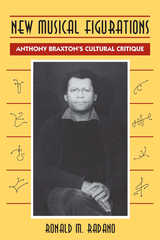 New Musical Figurations: Anthony Braxton's Cultural Critique
Ronald M. Radano
University of Chicago Press, 1993 New Musical Figurations exemplifies a dramatically new way of configuring jazz music and history. By relating biography to the cultural and musical contours of contemporary American life, Ronald M. Radano observes jazz practice as part of the complex interweaving of postmodern culture—a culture that has eroded conventional categories defining jazz and the jazz musician. Radano accomplishes all this by analyzing the creative life of Anthony Braxton, one of the most emblematic figures of this cultural crisis.
Born in 1945, Braxton is not only a virtuoso jazz saxophonist but an innovative theoretician and composer of experimental art music. His refusal to conform to the conventions of official musical culture has helped unhinge the very ideologies on which definitions of "jazz," "black music," "popular music," and "art music" are founded.
New Musical Figurations gives the richest view available of this many-sided artist. Radano examines Braxton's early years on the South Side of Chicago, whose vibrant black musical legacy inspired him to explore new avenues of expression. Here is the first detailed history of Braxton's central role in the Association for the Advancement of Creative Musicians, the principal musician-run institution of free jazz in the United States. After leaving Chicago, Braxton was active in Paris and New York, collaborating with Philip Glass, Steve Reich, Frederic Rzewski, and other composers affiliated with the experimental-music movement. From 1974 to 1981, he gained renown as a popular jazz performer and recording artist. Since then he has taught at Mills College and Wesleyan University, given lectures on his theoretical musical system, and written works for chamber groups as well as large, opera-scale pieces.
The neglect of radical, challenging figures like Braxton in standard histories of jazz, Radano argues, mutes the innovative voice of the African-American musical tradition. Refreshingly free of technical jargon, New Musical Figurations is more than just another variation on the same jazz theme. Rather, it is an exploratory work as rich in theoretical vision as it is in historical detail.
New Mythological Figures in Spanish Cinema: Dissident Bodies under Franco
Pietsie Feenstra
Amsterdam University Press, 2012 After General Francisco Franco died in 1975, Spanish cinema was bursting at the seams. Many film directors broke free from the ancient taboos which had reigned under Franco’s dictatorship, introducing characters who transgressed the traditional borders of social, cultural, and sexual identities. The women, homosexuals, transsexuals, and delinquents who were considered lost, dissonant bodies under Franco’s rule became the new protagonists of Spanish cinema.
“Here is a ‘book of passion’ on the metamorphoses of post-Francoist Spain as it catapulted into the contemporary world (1975–95). It is a book that questions the power of myths expressed through passionate bodies, in particular bodies who for too long were marginalized in traditional societies.” —Michèle Lagny, Université de Sorbonne Nouvelle Paris III
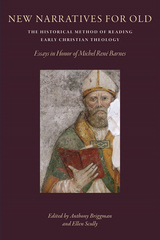 New Narratives for Old: The Historical Method of Reading Early Christian Theology: Essays in Honor of Michel Rene Barnes
Anthony Briggman
Catholic University of America Press, 2022 Guilds and conferences have grown up around historical theology, yet no volume has ever been dedicated to the definition and illustration of the method undergirding historical theology. This volume both defines and illustrates the methodology of historical theology, especially as it relates to the study of early Christianity, and situates historical theology among other methodological approaches to early Christianity, including confessional apologetics, constructive theology, and socio-cultural history.
Historical theology as a discipline stands in contrast to these other approaches to the study of early Christianity. In contrast to systematic or constructive approaches, it remains essentially historical, with a desire to elucidate the past rather than speak to the present. In contrast to socio-historical approaches, it remains essentially theological, with a concern to value and understand the full complexity of the abstract thought world that stands behind the textual tradition of early Christian theology. Moreover, historical theology is characterized by the methodological presupposition that, unless good reason exists to think otherwise, the theological accounts of the ancient church articulate the genuine beliefs of their authors.
The significance of this volume lies in the methodological definition it offers. The strength of this volume lies in the fact that its definition of the historical method of studying theology is not the work of a single mind but that of over twenty respected scholars, many of whom are leaders in the field. The volume begins with an introductory essay that orients readers to various approaches to early Christian literature, it moves to two technical essays that define the historical method of studying early Christian theology, and then it illustrates the practice of this method with more than twenty essays that cover a period stretching from the first century to the dawn of the seventh.
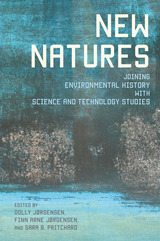 New Natures: Joining Environmental History with Science and Technology Studies
Dolly Jørgensen
University of Pittsburgh Press, 2013
New Natures broadens the dialogue between the disciplines of science and technology studies (STS) and environmental history in hopes of deepening and even transforming understandings of human-nature interactions. The volume presents richly developed historical studies that explicitly engage with key STS theories, offering models for how these theories can help crystallize central lessons from empirical histories, facilitate comparative analysis, and provide a language for complicated historical phenomena. Overall, the collection exemplifies the fruitfulness of cross-disciplinary thinking.
The chapters follow three central themes: ways of knowing, or how knowledge is produced and how this mediates our understanding of the environment; constructions of environmental expertise, showing how expertise is evaluated according to categories, categorization, hierarchies, and the power afforded to expertise; and lastly, an analysis of networks, mobilities, and boundaries, demonstrating how knowledge is both diffused and constrained and what this means for humans and the environment.
Contributors explore these themes by discussing a wide array of topics, including farming, forestry, indigenous land management, ecological science, pollution, trade, energy, and outer space, among others. The epilogue, by the eminent environmental historian Sverker Sörlin, views the deep entanglements of humans and nature in contemporary urbanity and argues we should preserve this relationship in the future. Additionally, the volume looks to extend the valuable conversation between STS and environmental history to wider communities that include policy makers and other stakeholders, as many of the issues raised can inform future courses of action.
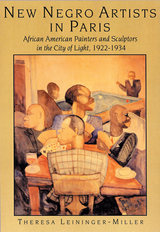 New Negro Artists in Paris: African American Painters and Sculptors in the City of Light, 1922-1934
Leininger-Miller, Theresa
Rutgers University Press, 2001 The New Negro Artist in Paris analyzes the experiences and works of six African American artists who lived and worked in Paris during the Jazz Age sculptors Elizabeth Prophet and Augusta Savage, and painters Palmer Hayden, Hale Woodruff, Archibald J. Motley, Jr., and Albert Alexander Smith. More than 120 works of art are analyzed, many never before published.
These artists exhibited the works they created in Paris at prestigious salons in France and in the United States, winning fellowships, grants, and awards. Leininger-Miller argues that it was study abroad that won these artists critical acclaim, establishing their reputations as some of the most significant leaders of the New Negro movement in the visual arts. She begins her study with a history of the debut of African American artists in Paris, 1830–1914, then provides readers with rarely seen profiles of each of the six artists from their birth through the end of their time abroad. Finally, Leininger-Miller examines patterns and differences in these individuals’ backgrounds and development, their patronage in the United States and France, their shared experiences abroad, and the impact their study in Paris had on the rest of their careers.
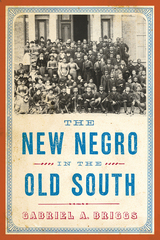 The New Negro in the Old South
Briggs, Gabriel A
Rutgers University Press, 2015 Standard narratives of early twentieth-century African American history credit the Great Migration of southern blacks to northern metropolises for the emergence of the New Negro, an educated, upwardly mobile sophisticate very different from his forebears. Yet this conventional history overlooks the cultural accomplishments of an earlier generation, in the black communities that flourished within southern cities immediately after Reconstruction.
In this groundbreaking historical study, Gabriel A. Briggs makes the compelling case that the New Negro first emerged long before the Great Migration to the North. The New Negro in the Old South reconstructs the vibrant black community that developed in Nashville after the Civil War, demonstrating how it played a pivotal role in shaping the economic, intellectual, social, and political lives of African Americans in subsequent decades. Drawing from extensive archival research, Briggs investigates what made Nashville so unique and reveals how it served as a formative environment for major black intellectuals like Sutton Griggs and W.E.B. Du Bois.
The New Negro in the Old South makes the past come alive as it vividly recounts little-remembered episodes in black history, from the migration of Colored Infantry veterans in the late 1860s to the Fisk University protests of 1925. Along the way, it gives readers a new appreciation for the sophistication, determination, and bravery of African Americans in the decades between the Civil War and the Harlem Renaissance.
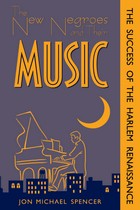 New Negroes & Their Music: Success of the Harlem Renaissance
Yahya Jongintaba
University of Tennessee Press, 1997 Boldly conceived and compellingly argued, this revisionist work offers a new interpretation of the Harlem Renaissance by focusing on its music. Jon Michael Spencer challenges the emphasis of earlier studies—which tended to bypass music in favor of literature—as well as their general conclusion that the Renaissance was a failure because it offered an inadequate solution to the old problem of racism.
Spencer’s discussion encompasses the music and writings of a wide range of important figures, including William Grant Still, James Weldon Johnson, Roland Hayes, Alain Locke, and R. Nathaniel Dett. He argues that the singular accomplishment of the Harlem Renaissance composers and musicians was to achieve a “two-tiered mastery”: their work drew on the “mood and spirit” of African American folk music while mastering the forms and techniques of the European classical tradition.
Spencer also contends that the Harlem Renaissance extended for three decades beyond the 1920s. He thus contests assertions that the arrival of the Great Depression effectively ended the Renaissance, as issues of economic survival subsumed artistic aspirations. In positing a much longer period for the Renaissance and offering evidence for it, Spencer argues that this flowering of African American creative endeavor constitutes a major cultural legacy that can only be described as a resounding success.
 The New Neighborhood Senior Center: Redefining Social and Service Roles for the Baby Boom Generation
Weil, Joyce
Rutgers University Press, 2014 In 2011, seven thousand American “baby boomers” (those born between 1946 and 1964) turned sixty-five daily. As this largest U.S. generation ages, cities, municipalities, and governments at every level must grapple with the allocation of resources and funding for maintaining the quality of life, health, and standard of living for an aging population.
In The New Neighborhood Senior Center, Joyce Weil uses in-depth ethnographic methods to examine a working-class senior center in Queens, New York. She explores the ways in which social structure directly affects the lives of older Americans and traces the role of political, social, and economic institutions and neighborhood processes in the decision to close such centers throughout the city of New York.
Many policy makers and gerontologists advocate a concept of “aging in place,” whereby the communities in which these older residents live provide access to resources that foster and maintain their independence. But all “aging in place” is not equal and the success of such efforts depends heavily upon the social class and availability of resources in any given community. Senior centers, expanded in part by funding from federal programs in the 1970s, were designed as focal points in the provision of community-based services. However, for the first wave of “boomers,” the role of these centers has come to be questioned.
Declining government support has led to the closings of many centers, even as the remaining centers are beginning to “rebrand” to attract the boomer generation. However, The New Neighborhood Senior Centerdemonstrates the need to balance what the boomers’ want from centers with the needs of frailer or more vulnerable elders who rely on the services of senior centers on a daily basis. Weil challenges readers to consider what changes in social policies are needed to support or supplement senior centers and the functions they serve.
New Noir
John Shirley
University of Alabama Press, 1993
 A New No-Man's-Land: Writing and Art at Guantánamo, Cuba
Esther Whitfield
University of Pittsburgh Press, 2024 Guantánamo sits at the center of two of the most vexing issues of US policy of the past century: relations with Cuba and the Global War on Terror. It is a contested, extralegal space. In A New No-Man’s-Land, Esther Whitfield explores a multilingual archive of materials produced both at the US naval base and in neighboring Cuban communities and proposes an understanding of Guantánamo as a coherent borderland region, where experiences of isolation are opportunities to find common ground. She analyzes poetry, art, memoirs, and documentary films produced on both sides of the border. Authors and artists include prisoners, guards, linguists, chaplains, lawyers, and journalists, as well as Cuban artists and dissidents. Their work reveals surprising similarities: limited access to power and self-representation, mobility restricted by geography if not captivity, and immersion in political languages that have ascribed them rigid roles. Read together, the work of these disparate communities traces networks that extend among individuals in the Guantánamo region, inward to Cuba, and outward to the Caribbean, the Americas, Europe, and the Middle East.
 The New Nuns: Racial Justice and Religious Reform in the 1960s
Amy L. Koehlinger
Harvard University Press, 2007 In the 1960s, a number of Catholic women religious in the United States abandoned traditional apostolic works to experiment with new and often unprecedented forms of service among non-Catholics. Amy Koehlinger explores the phenomenon of the "new nun" through close examination of one of its most visible forms--the experience of white sisters working in African-American communities. In a complex network of programs and activities Koehlinger describes as the "racial apostolate," sisters taught at African-American colleges in the South, held racial sensitivity sessions in integrating neighborhoods, and created programs for children of color in public housing projects.
Engaging with issues of race and justice allowed the sisters to see themselves, their vocation, and the Church in dramatically different terms. In this book, Koehlinger captures the confusion and frustration, as well as the exuberance and delight, they experienced in their new Christian mission. Their increasing autonomy and frequent critiques of institutional misogyny shaped reforms within their institute and sharpened a post-Vatican II crisis of authority.
From the Selma march to Chicago's Cabrini Green housing project, Amy Koehlinger illuminates the transformative nature of the nexus of race, religion, and gender in American society.
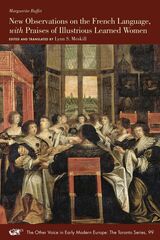 New Observations on the French Language, with Praises of Illustrious Learned Women
Marguerite Buffet
Iter Press, 2023 Two volumes by a seventeenth-century French gentlewoman and teacher, published in English for the first time.
According to the few historical records that mention Marguerite Buffet, she lived her entire life in seventeenth-century Paris where she taught French to aristocratic women. Buffet’s vivid example of proper language use in New Observations on the French Language offers a rare glimpse into the life, habits, and culture of seventeenth-century France. She describes common errors in contemporary language use and gives examples of correct expressions for speaking and writing all the while encouraging women to aspire to higher levels of intellectual achievement.
In addition, her Praises of Illustrious Learned Women, a catalog of biographies of women who displayed exemplary intellect, wit, and conversation, includes a number of the author’s contemporaries such as Anna Maria van Schurman and Madeleine de Scudéry. Buffet’s collected praises of these women, many of whom were connected to the court of Louis XIV, show her unique position as both a participant in and historian of the intellectual and social world of the French salon.
This volume presents Buffet’s work in its near entirety for the first time in English, bringing to light Buffet’s unique contribution to the centuries-long debate concerning the status of women known as the querelle des femmes.
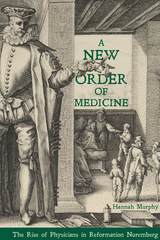 A New Order of Medicine: The Rise of Physicians in Reformation Nuremberg
Hannah Murphy
University of Pittsburgh Press, 2019 Winner, 2020 SRS Book Prize
The sixteenth century saw an unprecedented growth in the number of educated physicians practicing in German cities. Concentrating on Nuremberg, A New Order of Medicine follows the intertwined careers of municipal physicians as they encountered the challenges of the Reformation city for the first time. Although conservative in their professed Galenism, these men were eclectic in their practices, which ranged from book collecting to botany to subversive anatomical experimentations. Their interests and ambitions lead to local controversy. Over a twenty-year campaign, apothecaries were wrested from their place at the forefront of medical practice, no longer able to innovate remedies, while physicians, recent arrivals in the city, established themselves as the leading authorities. Examining archives, manuscript records, printed texts, and material and visual sources, and considering a wide range of diseases, Hannah Murphy offers the first systematic interpretation of the growth of elite medical “practice,” its relationship to Galenic theory, and the emergence of medical order in the contested world of the German city.
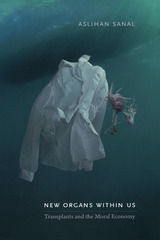 New Organs Within Us: Transplants and the Moral Economy
Asl1han Sanal
Duke University Press, 2011 New Organs Within Us is a richly detailed and conceptually innovative ethnographic analysis of organ transplantation in Turkey. Drawing on the moving stories of kidney-transplant patients and physicians in Istanbul, Aslihan Sanal examines how imported biotechnologies are made meaningful and acceptable not only to patients and doctors, but also to the patients’ families and Turkish society more broadly. She argues that the psychological theory of object relations and the Turkish concept of benimseme—the process of accepting something foreign by making it one’s own—help to explain both the rituals that physicians perform to make organ transplantation viable in Turkey and the psychic transformations experienced by patients who suffer renal failure and undergo dialysis and organ transplantation. Soon after beginning dialysis, patients are told that transplantable kidneys are in short supply; they should look for an organ donor. Poorer patients add their names to the state-run organ share lists. Wealthier patients pay for organs and surgeries, often in foreign countries such as India, Russia, or Iraq. Sanal links Turkey’s expanding trade in illegal organs to patients’ desires to be free from dialysis machines, physicians’ qualms about declaring brain-death, and media-hyped rumors of a criminal organ mafia, as well as to the country’s political instability, the privatization of its hospitals, and its position as a hub in the global market for organs.
 A New Orient: From German Scholarship to Middle Eastern Studies in Israel
Amit Levy
Brandeis University Press, 2024 A history of knowledge transfer of Oriental Studies stretching along an axis from Germany to Palestine/Israel.
This study examines the history of Zionist academic Orientalism—referred to throughout as Oriental studies, the term contemporary English speakers would have used—in light of its German-Jewish background, as a history of knowledge transfer stretching along an axis from Germany to Palestine. The transfer, which took place primarily during the 1920s and 1930s, involved questions about the re-establishment, far from Germany, of a field of knowledge with deep German roots. Like other German-Jewish scholars arriving in Palestine at the time, some of the Orientalist agents of transfer did so out of Zionist conviction as olim (immigrants making aliyah, or literally “ascending” to the homeland), while others joined them later as refugees from Nazi Germany; both groups were integrated into the institutional apparatus of the Hebrew University. Unlike other fields of knowledge or professions, however, the transfer of Orientalist knowledge was unique in that the axis involved an essential change in the nature of its encounter with the Orient: from a textual-scientific encounter at German universities, largely disconnected from contemporary issues to a living, substantive, and unmediated encounter with an essentially Arab region—and the escalating Jewish-Arab conflict in the background. Within the new context, German-Jewish Orientalist expertise was charged with political and cultural significance it had not previously faced, fundamentally influencing the course of the discipline’s development in Palestine and Israel.
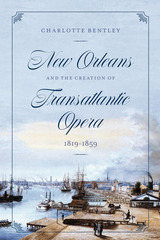 New Orleans and the Creation of Transatlantic Opera, 1819–1859
Charlotte Bentley
University of Chicago Press, 2022 A history of nineteenth-century New Orleans and the people who made it a vital, if unexpected, part of an emerging operatic world.
New Orleans and the Creation of Transatlantic Opera, 1819–1859 explores the thriving operatic life of New Orleans in the first half of the nineteenth century, drawing out the transatlantic connections that animated it. By focusing on a variety of individuals, their extended webs of human contacts, and the materials that they moved along with them, this book pieces together what it took to bring opera to New Orleans and the ways in which the city’s operatic life shaped contemporary perceptions of global interconnection. The early chapters explore the process of bringing opera to the stage, taking a detailed look at the management of New Orleans’s Francophone theater, the Théâtre d’Orléans, as well as the performers who came to the city and the reception they received. But opera’s significance was not confined to the theater, and later chapters of the book examine how opera permeated everyday life in New Orleans, through popular sheet music, novels, magazines and visual culture, and dancing in its many ballrooms. Just as New Orleans helped to create transatlantic opera, opera in turn helped to create the city of New Orleans.
 The New Orleans Sisters of the Holy Family: African American Missionaries to the Garifuna of Belize
Edward T. Brett
University of Notre Dame Press, 2012
The Sisters of the Holy Family, founded in New Orleans in 1842, were the first African American Catholics to serve as missionaries. This story of their little-known missionary efforts in Belize from 1898 to 2008 builds upon their already distinguished work, through the Archdiocese of New Orleans, of teaching slaves and free people of color, caring for orphans and the elderly, and tending to the poor and needy.
Utilizing previously unpublished archival documents along with extensive personal correspondence and interviews, Edward T. Brett has produced a fascinating account of the 110-year mission of the Sisters of the Holy Family to the Garifuna people of Belize. Brett discusses the foundation and growth of the struggling order in New Orleans up to the sisters' decision in 1898 to accept a teaching commitment in the Stann Creek District of what was then British Honduras. The early history of the British Honduras mission concentrates especially on Mother Austin Jones, the superior responsible for expanding the order's work into the mission field. In examining the Belizean mission from the eve of the Second Vatican Council through the post–Vatican II years, Brett sensitively chronicles the sisters' efforts to conform to the spirit of the council and describes the creative innovations that the Holy Family community introduced into the Belizean educational system. In the final chapter he looks at the congregation's efforts to sustain its missionary work in the face of the shortage of new religious vocations.
Brett’s study is more than just a chronicle of the Holy Family Sisters' accomplishments in Belize. He treats the issues of racism and gender discrimination that the African American congregation encountered both within the church and in society, demonstrating how the sisters survived and even thrived by learning how to skillfully negotiate with the white, dominant power structure.
"The Holy Family sisters made a large contribution to the education of women in the Belizean mission and work with the poor eventually drew the Sisters back to their original charism. In the appendices, Edward T. Brett names the women who served in the mission and their dates of service, identifies women from the Belizean mission who entered religious life, and includes tributes written by some laity regarding the sisters' mission. The book will interest students and scholars in women's studies, Afro-Caribbean history, regional history of the South, the history of missions, education, and American Catholic history." —Angelyn Dries, O.S.F., Saint Louis University
New Orleans Sports: Playing Hard in the Big Easy
Thomas Aiello
University of Arkansas Press, 2019 New Orleans has long been a city fixated on its own history and culture. Founded in 1718 by the French, transferred to the Spanish in the 1763 Treaty of Paris, and sold to the United States in 1803, the city’s culture, law, architecture, food, music, and language share the influence of all three countries. This cultural mélange also manifests in the city’s approach to sport, where each game is steeped in the city’s history.
Tracing that history from the early nineteenth century to the present, while also surveying the state of the city’s sports historiography, New Orleans Sports places sport in the context of race relations, politics, and civic and business development to expand that historiography—currently dominated by a text that stops at 1900—into the twentieth century, offering a modern examination of sports in the city.
A New Pair of Wings
Nancy Wang & Robert Kikuchi-Yngojo
Parkhurst Brothers, Inc., 2016 This delightful children’s book, based on a story originally told by Delores Yngojo Kikuchi, Robert’s mother, recounts her tale of immigration to America. Young Delores finds resolve between East and West, through courage, imagination, and a little bit of myth to discover her “new pair of wings”. The book is beautifully illustrated by Brian Lei
 The New Pakistani Middle Class
Ammara Maqsood
Harvard University Press, 2017 Pakistan’s presence in the outside world is dominated by images of religious extremism and violence. These images—and the narratives that interpret them—inform events in the international realm, but they also twist back around to shape local class politics. In The New Pakistani Middle Class, Ammara Maqsood focuses on life in contemporary Lahore, where she unravels these narratives to show how central they are for understanding competition and the quest for identity among middle-class groups.
Lahore’s traditional middle class has asserted its position in the socioeconomic hierarchy by wielding significant social capital and dominating the politics and economics of urban life. For this traditional middle class, a Muslim identity is about being modern, global, and on the same footing as the West. Recently, however, a more visibly religious, upwardly mobile social group has struggled to distinguish itself against this backdrop of conventional middle-class modernity, by embracing Islamic culture and values. The religious sensibilities of this new middle-class group are often portrayed as Saudi-inspired and Wahhabi.
Through a focus on religious study gatherings and also on consumption in middle-class circles—ranging from the choice of religious music and home décor to debit cards and the cut of a woman’s burkha—The New Pakistani Middle Class untangles current trends in piety that both aspire toward, and contest, prevailing ideas of modernity. Maqsood probes how the politics of modernity meets the practices of piety in the struggle among different middle-class groups for social recognition and legitimacy.
 New Pathways to Medical Education: Learning to Learn at Harvard Medical School
Daniel Tosteson
Harvard University Press, 1994 Medicine in the twenty-first century will be very different from the medicine of today; scientific, technological, economic, and ethical conditions of practice will be transformed. What do these changes portend for medical education? What knowledge should all medical students acquire? How can medical educators prepare students in the most cost-effective way?
This book describes efforts made at Harvard Medical School during the past to reorient general medical education. Harvard’s New Pathway has received national attention since its inception—including a multipart special on PBS’s Nova—because it offers a radical restructuring of the traditional medical school curriculum. Its creators, most of them contributors to this book, designed a program that gives students not only a core of scientific, biomedical, and clinical knowledge but also the skills, tools, and attitudes that will enable them to become lifelong learners, to cope with and use new information, and—most important—to provide better patient care.
New Pathways to Medical Education also tells the inside story of how a traditional and research-oriented faculty was persuaded to cooperate with colleagues outside their departments in adopting a student-centered, problem-based approach to learning. Central to this transformation was the Patient–Doctor course, which the book describes in detail. This course—which teaches students to LISC the patient–doctor relationship for the benefit of patients—is considered one of the most significant contributions to medical education in the New Pathway.
New Pathways to Medical Education will inspire physicians, medical scientists, and medical educators around the world to think and act more decisively to reform medical education. And because it documents the development of an innovative curriculum, this study will interest educators in all fields.
 New Patterns for Mexico/Nuevas Pautas para México: Observations on Remittances, Philanthropic Giving, and Equitable Development/Observaciones sobre Remesas, Donaciones Filantrópicas y Desarrollo Equitativo
Barbara J. Merz
Harvard University Press, 2005 In our globalizing world, the movement of people and resources has accelerated, giving rise to transnational connections and interdependencies. New Patterns for Mexico examines novel and emerging patterns of United States giving to Mexico and its impact on equitable development. Last year alone, Mexican migrants living in the United States sent billions of dollars back to families and relatives living in Mexico. Most of these funds were for private consumption, but more and more diaspora resources support social and philanthropic endeavors in their country of origin. This bilingual volume asks: What are these new patterns of diaspora giving and how do they affect equitable development in Mexico?
Through its Global Philanthropy Program, the Global Equity Initiative of Harvard University aims to advance knowledge about global philanthropy and the role of private philanthropic investments in furthering global equity. This volume, one in a series on diaspora giving, builds upon the earlier work of Diaspora Philanthropy: Perspectives on India and China and continues the Program's research series on the relationship between diaspora engagement and equitable development.
New Patterns in Global Television Formats
Edited by Karina Aveyard, Albert Moran, and Pia Majbritt Jensen
Intellect Books, 2016 The past twenty years have seen major changes in the ways that television formats and programming are developed and replicated internationally for different markets—with locally focused repackagings of hit reality shows leading the way. But in a sense, that’s not new: TV formats have been being exported for decades, with the approach and methods changing along with changes in broadcast technology, markets, government involvement, and audience interest. This book brings together scholars of TV formats from around the world to analyze and discuss those changes and offer an up-to-the-minute analysis of the current state of TV formats and their use and adaptation worldwide.
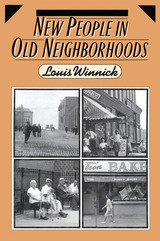 New People in Old Neighborhoods: The Role of Immigrants in Rejuvenating New York's Communities
Louis Winnick
Russell Sage Foundation, 1990 The recent wave of immigration into this country has given rise to myriad concerns—from the worries about the impact of immigration on the nation's economy to questions about whether multilingual education should be used in public schools. The resulting debates have overshadowed some very good news: this influx of New Immigrants has resulted in an astonishing rebirth of many of our older, decaying cities. Nowhere has this demographic renewal been more apparent than in New York City, as Louis Winnick demonstrates in New People in Old Neighborhoods, a timely and perceptive study of the effects of immigration in Brooklyn's Sunset Park. Sunset Park was born of the late nineteenth century flood of immigrants who developed a prosperous waterfront commerce; by the end of World War I the community had achieved a thriving maturity. Yet the decades following World War II brought about a period of urban decay lifted only by the post-1965 influx of more than 20,000 immigrants, most notably from Asia and the Caribbean Basin. These New Immigrants not only revived the dying community but enriched it with greater ethnic diversity than it had ever known. Winnick combines data on ethnic change and living patterns with data on employment, housing, school enrollment, and subway ridership to study the revitalization of Sunset Park. He discusses the ethnic composition and characteristics of the new immigrants; trends in self-employment and entrepreneurship ("microcapitalism"); immigrant impact upon retailing, manufacturing, and the lower echelons of the service industries; skill and education levels; and presence in the professions. Winnick also discusses the immigrants' positive effect on faltering New York systems, such as the subways and public schools, and places immigrant renewal within the larger context of overall housing and economic regeneration in New York City. New People in Old Neighborhoods views today's immigrants as the historic heirs to the community builders of the last century, and offers important insights into the often-troubled yet transforming relationship between the nation and its foreign-born population. The future of these immigrants will be a yardstick to measure the quality and performance of our cities and their neighborhoods in the years ahead.
A New Perspective on Antisthenes: Logos, Predicate and Ethics in his Philosophy
P. A. Meijer
Amsterdam University Press, 2017 Antisthenes (c. 445- c. 365 BC), was a prominent follower of Socrates and bitter rival of Plato. In this revisionary account of his philosophy in all its aspects, P. A. Meijer claims that Plato and Aristotle have corrupted our perspective on this witty and ingenious thinker. The first part of the book reexamines afresh Antisthenes' ideas about definition and predication and concludes from these that Antisthenes never held the (in)famous theory that contradiction is impossible. The second part of the book argues that Antisthenes' logical theories bear directly on his activities as an exegete of Homer and hence as a theological thinker. Part three, finally, offers innovative readings of Antisthenes' ethical fragments.
New Perspective, Understanding, Awareness: Impacts of Arts Integration and Interdisciplinary Practice
Gabriel Harp
A2RU Intervals, 2019 The Alliance for the Arts in Research Universities (A2RU) fosters and champions the role of the arts and design in research universities. Underpinned by research and synthesis, our mission is connected knowledge and empowered leadership — to uphold and advance the arts and design in research, teaching, scholarship, and creative practice.
Learn more online at a2ru.org about A2RU programs, alliance partners, and how to become an A2RU partner. Discover insights and tools to support the arts and design in research universities. You can also search and browse A2RU conference abstracts, working session captures, and a wide array of supporting materials from A2RU and its alliance partnerships.
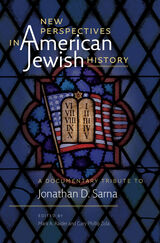 New Perspectives in American Jewish History: A Documentary Tribute to Jonathan D. Sarna
Edited by Mark A. Raider and Gary Phillip Zola
Brandeis University Press, 2021 Widely regarded as today’s foremost American Jewish historian, Jonathan D. Sarna had a huge impact on the academy. Sarna’s influence is perhaps nowhere more apparent than among his former doctoral students—a veritable “Sarna diaspora” of over three dozen active scholars around the world. Both a tribute to Sarna and an important collection in its own right, New Perspectives in American Jewish History was compiled by Sarna’s former students and presents previously unpublished, neglected, or rarely seen historical documents and images that illuminate the breadth, diversity, and dynamism of the American Jewish experience. Beginning with the earliest known Jewish divorce in circum-Atlantic history (1774) and concluding with a Black Lives Matter Haggadah supplement (2019), the collection travels across time and space to shed light on intriguing and generative moments that span the varieties of Jewish experience in the American setting from the colonial era to the present. The materials underscore the interrelationship of myriad themes including ritual observance, Jewish-Christian relations, civil rights, Zionism and Israel, and immigration. While not intended as a comprehensive treatment of American Jewish history, the collection offers a chronological road map of American Jewry’s evolving self-understanding and encounter with America over the course of four centuries. A brief prefatory note sets up the analytic context of each document and helps to unpack and explore its significance. The capacious and multifaceted quality of the American Jewish experience is further amplified here by a sampling of artistic texts such as photographs, advertisements, cartoons, and more.
New Perspectives on Case Theory
Edited by Ellen Brandner and Heike Zinsmeister
CSLI, 2003 Case is one of the central concepts in modern generative syntax, doing the work of linking arguments to predicates, moving nominal expressions, and in some languages connecting the referential properties of nominal expressions. Different languages, however, make use of overt case distinctions to very different degrees, leaving the principles of case with many open questions. This volume offers analyses of case phenomena in a broad range of languages and frameworks, including some novel approaches to case that will invite much discussion.
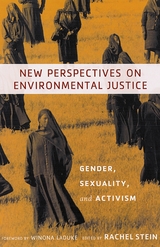 New Perspectives on Environmental Justice: Gender, Sexuality, and Activism
Stein, Rachel
Rutgers University Press, 2004 Women make up the vast majority of activists and organizers of grassroots movements fighting against environmental ills that threaten poor and people of color communities. New Perspectives on Environmental Justice is the first collection of essays that pays tribute to the enormous contributions women have made in these endeavors. The writers offer varied examples of environmental justice issues such as children's environmental health campaigns, cancer research, AIDS/HIV activism, the Environmental Genome Project, and popular culture, among many others. Each one focuses on gender and sexuality as crucial factors in women's or gay men's activism and applies environmental justice principles to related struggles for sexual justice. The contributors represent a wide variety of activist and scholarly perspectives including law, environmental studies, sociology, political science, history, medical anthropology, American studies, English, African and African American studies, women's studies, and gay and lesbian studies, offering multiple vantage points on gender, sexuality, and activism. Feminist/womanist impulses shape and sustain environmental justice movements around the world, making an understanding of gender roles and differences crucial for the success of these efforts.
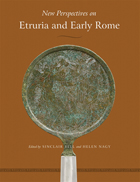 New Perspectives on Etruria and Early Rome
Sinclair Bell
University of Wisconsin Press, 2009 This impressive collection brings to light the works of international scholars, some previously unavailable to an English-language audience. With new information and assessments about the art, architecture, and archaeology of one of the most dynamic periods in the history of the ancient world—the transition between pre-Roman and Roman Italy—these scholars focus on ancient Italy and the wider Mediterranean. Shedding new light on the evidence of well-known and recently excavated sites and the objects they have yielded—their iconography, manufacturing techniques, and afterlives—this collection follows the first archaeological traces of the rise of ancient Italy to its rediscovery in the Renaissance and its reinvention in contemporary fiction, offering a vibrant contribution to classical studies.
Paying tribute to Richard Daniel De Puma, a scholar who has made significant and influential contributions to Etruscan and Roman studies, the contributors to this collection echo the ambition and creativity of his work while offering an up-to-date survey of contemporary Etruscan scholarship. In surveying new developments in both fields, the work collected here represent the diverse, interdisciplinary interests of De Puma as well as areas of recent groundbreaking research.
New Perspectives on Games and Interaction
Edited by Krzysztof Apt and Robert van Rooij
Amsterdam University Press, 2008
In 2007 at the Dutch Royal Academy of Sciences in Amsterdam, a colloquium on new perspectives on games and interaction brought together researchers on games in logic, computer science, linguistics, and economics in order to clarify their uses of game theory and identify promising new directions for the field. This volume is a collection of papers presented at the colloquium, and it testifies to the growing importance of game theory as a tool that can capture concepts of strategy, interaction, argumentation, communication, and cooperation amid the disciplines.
 New Perspectives on Keynes, Volume 27
Allin F. Cottrell and Michael S. Lawlor, eds.
Duke University Press Interest in John Maynard Keynes has increased significantly over the past decade with the publication of his collected writings, increased access to his unpublished papers, and the resulting explosion of secondary literature. Responding to this renewed attention, this collection brings together economists and historians of economics with scholars from philosophy and other related fields to reconsider Keynes’s work and its legacy. Several of these essays look at Keynes not simply as an economist, but more broadly as a philosopher. Special attention is directed to his views on aesthetics and moral philosophy, as well as his contributions as a probability theorist. The development of the Keynesian heritage is also considered: How did Keynesian ideas become assimilated and domesticated into the mainstream of economic thought—to the point of becoming dominant as the orthodoxy of the economics profession? What was the relationship between postwar British conservatives, Keynes’s work, and Britain’s relative economic decline? The archivist in charge of Keynes’s papers provides an additional vantage point on Keynes’s working methods and the broad range of scholars interested in his writings. Finally, all of the essays are followed by a responder’s comments, thus providing an exchange of viewpoints. Contributors. A. W. Coats, Allin F. Cottrell, Jacqueline Cox, William Darity, John Davis, Robert Dimand, Peter Groenewegen, Kevin Hoover, Henry E. Kyburg Jr., David Laidler, Michael S. Lawlor, Greg Lilly, D. E. Moggridge, R. M. O’Donnell, Kerry Pearce, Jochen Runde, Teddy Seidenfeld, J. D. Tomlinson
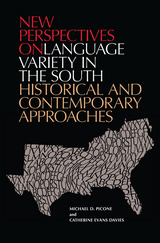 New Perspectives on Language Variety in the South: Historical and Contemporary Approaches
Michael D. Picone
University of Alabama Press, 2015 The third installment in the landmark LAVIS (Language Variety in the South) series, New Perspectives on Language Variety in the South: Historical and Contemporary Approaches brings together essays devoted to the careful examination and elucidation of the rich linguistic diversity of the American South, updating and broadening the work of the earlier volumes by more fully capturing the multifaceted configuration of languages and dialects in the South.
Beginning with an introduction to American Indian languages of the Southeast, five fascinating essays discuss indigenous languages, including Caddo, Ofo, and Timucua, and evidence for the connection between the Pre-Columbian Southeast and the Caribbean.
Five essays explore the earlier Englishes of the South, covering topics such as the eighteenth century as the key period in the differentiation of Southern American English and the use of new quantitative methods to trace the transfer of linguistic features from England to America. They examine a range of linguistic resources, such as plantation overseers’ writings, modern blues lyrics, linguistic databases, and lexical and locutional compilations that reveal the region’s distinctive dialectal traditions.
New Perspectives on Language Variety in the South: Historical and Contemporary Approaches widens the scope of inquiry into the linguistic influences of the African diaspora as evidenced in primary sources and records. A comprehensive essay redefines the varieties of French in Louisiana, tracing the pathway from Colonial Louisiana to the emergence of Plantation Society French in a diglossic relationship with Louisiana Creole. A further essay maps the shift from French to English in family documents.
An assortment of essays on English in the contemporary South touch on an array of compelling topics from discourse strategies to dialectal emblems of identity to stereotypes in popular perception.
Essays about recent Latino immigrants to the South bring the collection into the twenty-first century, taking into account the dramatic increase in the population of Spanish speakers and illuminating the purported role of “Spanglish,” the bilingual lives of Spanish-speaking Latinos in Mississippi, and the existence of regional Spanish dialectal diversity.
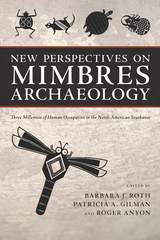 New Perspectives on Mimbres Archaeology: Three Millennia of Human Occupation in the North American Southwest
Edited by Barbara J. Roth, Patricia A. Gilman, and Roger Anyon
University of Arizona Press, 2018 In the early 1970s, understanding of the Mimbres region as a whole was in its infancy. In the following decades, thanks to dedicated work by enterprising archaeologists and nonprofit organizations, our understanding of the Mimbres region has become more complex, nuanced, and rich.
New Perspectives on Mimbres Archaeology brings together these experts in a single volume for the first time. The contributors discuss current knowledge of the people who lived in the Mimbres region of the southwestern United States and how our knowledge has changed since the Mimbres Foundation, directed by Steven A. LeBlanc, began the first modern archaeological investigations in the region. Many of these authors have spent decades conducting the fieldwork that has allowed for a broader understanding of Mimbres society.
Focusing on a variety of important research topics of interest to archaeologists—including the social contexts of people and communities, the role of ritual and ideology in Mimbres society, evidence of continuities and cultural change through time, and the varying impacts of external influences throughout the region—New Perspectives on Mimbres Archaeology presents recent data on and interpretations of the entire pre-Hispanic sequence of occupation. Additional contributions include a history of nonprofit archaeology by William H. Doelle and a concluding chapter by Steven A. LeBlanc reflecting on his decades-long work in Mimbres archaeology and outlining important areas for the next wave of research.
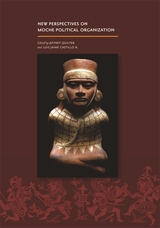 New Perspectives on Moche Political Organization
Jeffrey Quilter
Harvard University Press, 2010 This volume brings together essays on the nature of political organization of the Moche, a complex pre-Inca society that existed on the north coast of Peru from c. 100 to 800 CE. Since the discovery of the royal tombs of Sipán in 1987, the Moche have become one of the best-known pre-Hispanic cultures of the Americas and the focus of a number of archaeological projects. But the nature of Moche political organization is still debated. Some scholars view the Moche as a monolithic state, others see a clear distinction between a northern and southern Moche polity, and yet others argue that the most accurate model is one in which each valley contained an independent polity. In a presentation of new data and new perspectives, the authors debate these competing theories.
Based on a set of papers presented by sixteen international scholars at the Dumbarton Oaks Pre-Columbian Studies symposium held in Lima, Peru, in 2004, this volume marks an important point in the development of Moche archaeology and will be a landmark work in Pre-Columbian studies.
New Perspectives on Modern Paris, Volume 27
Charles Rearick and Rosemary Wakeman, eds.
Duke University Press Celebrating the fifty-year anniversary of the Society for French Historical Studies, this Franco-Anglophonic special issue of French Historical Studies considers research on the history of Paris both inside and outside France that highlights innovative work on both sides of the Atlantic. The underlying premise for this issue is that Paris—in all its vastness and heterogeneity—calls for many kinds of historical treatment. The articles in this special issue and the recent works they build on provide not only new understandings of Paris, but also suggestive samplings of the historiographical possibilities. Contributors. Alain Faure, Annie Fourcaut, David P. Jordan, Dominique Kalifa, Jo Burr Margadant, Ted W. Margadant, Allan Potofsky, Charles Rearick, Danielle Tartakowsky, Rosemary Wakeman
New Perspectives on Plato, Modern and Ancient
Julia Annas
Harvard University Press Plato’s unusual combination of argumentative and creative talents complicates any interpretative approach to his work, as does his choice of Socrates as a major figure. In recent years, scholars have looked more closely at the philosophical importance of the imaginative and literary aspects of Plato’s writing, and have begun to appreciate the methods of the ancient philosophers and commentators who studied Plato and their attitudes to Plato’s appropriation of Socrates.
This study brings together leading philosophical and literary scholars who investigate these new–old approaches and their significance in distancing us from the standard ways of reading Plato. Confronting the standard modern readings more directly, this work attempts to present the outcomes of these investigations to readers in a way that will encourage further exploration and innovative engagement.
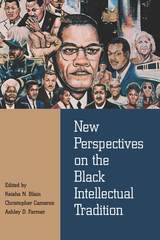 New Perspectives on the Black Intellectual Tradition
Edited by Keisha N. Blain, Christopher Cameron, and Ashley D. Farmer
Northwestern University Press, 2018 From well-known intellectuals such as Frederick Douglass and Nella Larsen to often-obscured thinkers such as Amina Baraka and Bernardo Ruiz Suárez, black theorists across the globe have engaged in sustained efforts to create insurgent and resilient forms of thought. New Perspectives on the Black Intellectual Tradition is a collection of twelve essays that explores these and other theorists and their contributions to diverse strains of political, social, and cultural thought.
The book examines four central themes within the black intellectual tradition: black internationalism, religion and spirituality, racial politics and struggles for social justice, and black radicalism. The essays identify the emergence of black thought within multiple communities internationally, analyze how black thinkers shaped and were shaped by the historical moment in which they lived, interrogate the ways in which activists and intellectuals connected their theoretical frameworks across time and space, and assess how these strains of thought bolstered black consciousness and resistance worldwide.
Defying traditional temporal and geographical boundaries, New Perspectives on the Black Intellectual Tradition illuminates the origins of and conduits for black ideas, redefines the relationship between black thought and social action, and challenges long-held assumptions about black perspectives on religion, race, and radicalism. The intellectuals profiled in the volume reshape and redefine the contours and boundaries of black thought, further illuminating the depth and diversity of the black intellectual tradition.
New Perspectives on the Irish Diaspora
Edited by Charles Fanning
Southern Illinois University Press, 2000 In New Perspectiveson the Irish Diaspora, Charles Fanning incorporates eighteen fresh perspectives on the Irish diaspora over three centuries and around the globe. He enlists scholarly tools from the disciplines of history, sociology, literary criticism, folklore, and culture studies to present a collection of writings about the Irish diaspora of great variety and depth.
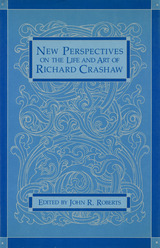 New Perspectives on the Life and Art of Richard Crashaw
Edited by John R. Roberts
University of Missouri Press, 1990
Richard Crashaw (1612/13-1649) has been one of the most neglected, misunderstood, misread, and unappreciated of the so-called major metaphysical poets. Critics have long labeled Crashaw’s poetry “foreign,” “grotesque,: “deficient in judgment and taste,” and even “sexually perverse.” In recent years, however, Crashaw’s role in providing an understanding and appreciation of seventeenth century poetic theory and aesthetics has become increasingly more evident to literary scholars and critics. They now generally agree that his poetry occupies a permanent and significant position in the intellectual, religious, and literary history of his time.
This collection of ten original critical and historical essays on the life and art of Crashaw will serve as a further impetus to the renewed interest in Crashaw. In the introduction, John R. Roberts and Lorraine M. Roberts survey past Crashavian criticism, giving the reader an overall view of the critical response to Crashaw and his work. The introduction also signals new directions for future scholarship. Scholars, critics, and students of metaphysical, baroque, and religious poetry will find these essays engaging and insightful.
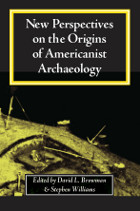 New Perspectives on the Origins of Americanist Archaeology
Edited by David L. Browman and Stephen Williams
University of Alabama Press, 2002 In this landmark book, experienced scholars take a retrospective look at the developing routes that have brought American archaeologists into the 21st century.
In 1996, the Society for American Archaeology's Committee on the History of Archaeology established a biennial symposium
named after Gordon R. Willey, one of the fathers of American archaeology, to focus on the history of the discipline. This volume grew out of the
second symposium, presented at the 1998 meeting of the Society for American Archaeology.
Interest in the intellectual history of the field is certainly nothing new—the first such volume appeared in 1856—but previously, focus has been on individuals and their theories and methods, or on various government agencies that supported, developed, or mandated
excavations in North America. This volume, however, focuses on the roots of Americanist archaeology, including its pre-1915 European connections, and on some of the earliest work by women archaeologists, which has been largely overlooked.
Full of valuable insights for archaeologists and anthropologists—both professional and amateur—into the history and
development of Americanist archaeology, New Perspectives will also inspire and serve as a model for future research.
David Browman is Professor of Anthropology and Chair of the Interdisciplinary Program in Archaeology at Washington University. Stephen Williams is Professor Emeritus of Anthropology at Harvard University.
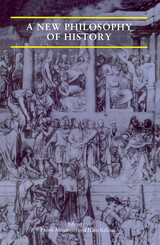 A New Philosophy of History
Edited by Frank Ankersmit and Hans Kellner
University of Chicago Press, 1995 What is history? From Thucydides to Toynbee historians and nonhistorians alike have wondered how to answer this question. A New Philosophy of History reflects on developments over the last two decades in historical writing, not least the renewed interest in the status of narrative itself and the presence of the authorial "voice." Subjects include the problems of Grand Narrative, multiple voices and the personal presence of the historian in his text, the ambitions of the French Annales school and the so-called "Grand Chronicler," and the relevance of non-literary models—museum presentations and picturings—regarding historical discourse.
The range of approaches found in A New Philosophy of History ensures that this book will establish itself as required reading not only for historians, but for everyone interested in literary theory, philosophy, or cultural studies.
This volume presents essays by Hans Kellner, Nancy F. Partner, Richard T. Vann, Arthur C. Danto, Linda Orr, Philippe Carrard, Ann Rigney, Allan Megill, Robert Berkhofer, Stephen Bann, and Frank Ankersmit.
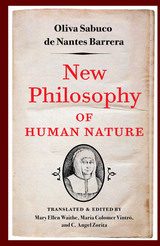 New Philosophy of Human Nature: Neither Known to Nor Attained by the Great Ancient Philosophers, Which Will Improve Human Life and Helath
Oliva Sabuco de Nantes Barrera
University of Illinois Press, 2006 This volume is a critical edition of the 1587 treatise by Oliva Sabuco, New Philosophy of Human Nature, written during the Spanish Inquisition. Puzzled by medicine’s abject failure to find a cure for the plague, Sabuco developed a new theory of human nature as the foundation for her remarkably modern holistic philosophy of medicine.
Fifty years before Descartes, Sabuco posited a dualism that accounted for mind/body interaction. She was first among the moderns to argue that the brain--not the heart--controls the body. Her account also anticipates the role of cerebrospinal fluid, the relationship between mental and physical health, and the absorption of nutrients through digestion. This extensively annotated translation features an ample introduction demonstrating the work’s importance to the history of science, philosophy of medicine, and women’s studies.
The New Plagues: Pandemics and Poverty in a Globalized World
Stefan Kaufmann
Haus Publishing, 2009 The threat from infectious diseases has increased with globalization. Throughout the history of mankind, epidemics have eradicated whole regions, started the migration of peoples and decided wars. They continue to leave their mark on societies, as well as influencing politics and economies. The New Plagues: Pandemics and Poverty in a Globalized World explores the strategies of microbes in conjunction with the economic impact of epidemics. In particular, it looks at the conflict between rich and poor with regard to outbreaks, and introduces possible strategies for containment.
 New Plant Sources for Drugs and Foods from the New York Botanical Garden Herbarium
Siri von Reis and Frank J. Lipp, Jr.
Harvard University Press, 1982 This companion volume to Siri von Reis's previous exploration of ethnobotanical notes in the Harvard herbaria brings to light a new array of plants with drug or food potential, offering wide-ranging possible applications for pharmacologists, chemists, botanists, and even anthropologists. Following the same criteria as in earlier investigations, the authors have examined the vast holdings of The New York Botanical Garden Herbarium to select little-known plant uses and to record any note suggesting biodynamic constituents--i.e., those having effects on living tissue--from skin irritants and poisons and medications of any kind to foods, beverages, and spices. They have also included species whose applications suggest other kinds of unreported chemical activity, plants associated with magic or ritual which affected people in some unusual way.
Listing the notes in the order in which the species were found in the collection, family by family, the authors call attention to similar characteristics in related species and families having biodvnamic properties in common. Each entry begins with the Latin name of the specimen, cites the country in which it was collected, the collector's name, and his held number for the plant, and then quotes the ethnobotanical or other note of interest.
While in itself a valuable reference work in the search for clues to useful plants, New Plant Source for Drugs and Foods also will enhance the value of the first volume by allowing a comparison of entries.
New Players, New Game?: The Impact of Emerging Economies on Global Governance
Edited by Sijbren de Jong, Rem Korteweg, Joshua Polchar, and Artur Usanov
Amsterdam University Press, 2013 How have emerging economies, such as Brazil, Russia, India, China, South Africa, as well as Indonesia, Turkey and South Korea (or “BRICS+”), affected the international power balance? And to what extent are these countries cooperating strategically on economic, diplomatic, and security matters? The contributors to New Player, New Game? consider the potential for the BRICS+ to fuel the emergence of a bipolar world of ‘the West against the Rest,' thus potentially leading to an increased cost of doing business, reduced chances of promoting human rights, increased diplomatic and military tensions, and a decrease in economic globalization.
New Playlist: Poems
David Trinidad
University of Pittsburgh Press, 2025 A new collection of poetry from David Trinidad, author of DIGGING TO WONDERLAND.
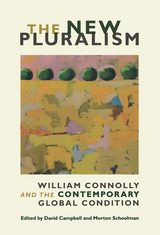 The New Pluralism: William Connolly and the Contemporary Global Condition
David Campbell and Morton Schoolman, eds.
Duke University Press, 2008 William Connolly, one of the best-known and most important political theorists writing today, is a principal architect of the “new pluralism.” In this volume, leading thinkers in contemporary political theory and international relations provide a comprehensive investigation of the new pluralism, Connolly’s contributions to it, and its influence on the fields of political theory and international relations. Together they trace the evolution of Connolly’s ideas, illuminating his challenges to the “old,” conventional pluralist theory that dominated American and British political science and sociology in the second half of the twentieth century. The contributors show how Connolly has continually revised his ideas about pluralism to take into account radical changes in global politics, incorporate new theories of cognition, and reflect on the centrality of religion in political conflict. They engage his arguments for an agonistic democracy in which all fundamentalisms become the objects of politicization, so that differences are not just tolerated but are productive of debate and the creative source of a politics of becoming. They also explore the implications of his work, often challenging his views to widen the reach of even his most recently developed theories. Connolly’s new pluralism will provoke all citizens who refuse to subordinate their thinking to the regimes in which they reside, to religious authorities tied to the state, or to corporate interests tied to either. The New Pluralism concludes with an interview with Connolly in which he reflects on the evolution of his ideas and expands on his current work. Contributors: Roland Bleiker, Wendy Brown, David Campbell, William Connolly, James Der Derian, Thomas L. Dumm, Kathy E. Ferguson, Bonnie Honig, George Kateb, Morton Schoolman
Michael J. Shapiro, Stephen K. White
New Poems: A Bilingual Edition
Rainer Maria Rilke
Northwestern University Press, 1998 New Poems (1907–1908) represented a departure for Rilke from the traditional German lyric poetry of which he was then considered a master. Apparent in the poems is the influence of Rodin--for whom Rilke had worked—as well as other visual artists, including Hokusai, Cezanne, Van Gogh, and Picasso. Rilke forced language to extremes of subtlety and refinement that only now, in Stephen Cohn's translations, is being captured properly in English.
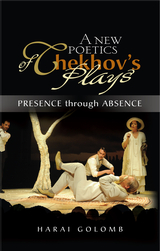 A New Poetics of Chekhov's Plays: Presence Through Absence
Harai Golomb
Sussex Academic Press, 2022 Casts new light on how Chekhov's plays can be interpreted and enacted.The author explores all the prime components of Chekhov's theatrical technique: text construction, themes and ideas, scenes, dialogue, plot, and interaction between verbal and nonverbal elements.A rigorous and comprehensive treatment of the many aspects of Chekhov's artistic universe.All the major works explored.Foreword by Donald Rayfield, Emeritus Professor of Russian, Queen Mary College, University of London; author,Chekhov: A Life;;Chekhov, the Evolution of his Art;;Understanding Chekhov;. One century after the death of Anton Chekhov (18601904), his plays are celebrated throughout the world as a major milestone in the history of theatre and drama. Outside the Russian-speaking community, he is undoubtedly the most widely translated, studied and performed of all Russian writers. His plays are characterised by their evasiveness: tragedy and comedy, realism and naturalism, symbolism and impressionism, as well as other labels of school and genre all fail to account for the uniqueness of 'Chekhovism', i.e., the essence of his artistic system and world view.Presence through Absence;is a bold attempt to map the unique structure and meaning that comprise Chekhovs immensely rich artistic universe. Golombs text is an incursion into Chekhov's vision of unrealised potentials and present absences. His timeless works are shown with rare insight and clarity to have artistic principles and coherence above and beyond the scope of the individual play.
The New Poetries and Some Old
Richard Kostelanetz
Southern Illinois University Press, 1991
This collection of twenty-nine essays represents a summation of Kostelanetz’s thoughts on poetry since the publication of his earlier work The Old Poetries and the New.
In sections on “The New Poetries,” “Some Old,” and “Autobiographical Addenda,” the essays range from sketches of Kenneth Burke, John Berryman, and Northrop Frye through considerations of the latest sound-text poetry to Kostelanetz’s justification of his own work. These pieces reflect Kostelanetz’s ongoing commitment to the esthetics he ascribes to high modernism—innovation, abstraction, intelligence, and complexity in all the arts.
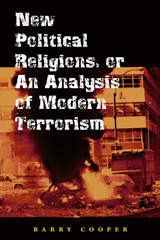 New Political Religions, or an Analysis of Modern Terrorism
Barry Cooper
University of Missouri Press, 2004 In New Political Religions, or an Analysis of Modern Terrorism, Barry Cooper applies the insights of Eric Voegelin to the phenomenon of modern terrorism. Cooper points out that the chief omission from most contemporary studies of terrorism is an analysis of the “spiritual motivation” that is central to the actions of terrorists today. When spiritual elements are discussed in conventional literature, they are grouped under the opaque term religion. A more conceptually adequate approach is provided by Voegelin’s political science and, in particular, by his Schellingian term pneumopathology—a disease of the spirit. While terrorism has been used throughout the ages as a weapon in political struggles, there is an essential difference between groups who use these tactics for more of less rational political goals and those seeking more apocalyptic ends. Cooper argues that today's terrorists have a spiritual perversity that causes them to place greater significance on killing than on exploiting political grievances. He supports his assertion with an analysis of two groups that share the characteristics of a pneumopathological consciousness—Aum Shinrikyo, the terrorist organization that poisoned thousands of Tokyo subway riders in 1995, and Al-Qaeda, the group behind the infamous 9/11 killings. Cooper applies the Voegelinian terms first reality (a commonsense goal regarding legitimate political grievances) and second reality (a fantastic objective sought by those whose rationality has been obscured) to show the major divide between political and apocalyptic terrorist groups. Osama Bin Laden's "second reality" was the imaginary goal that the 9/11 attack was supposed to achieve, and the commonsense reality was what truly happened (the deaths of nearly 3,000 people and the United States's subsequent military response). Cooper shows how such spiritual perversity enables a human being, imagining himself empowered by God, to go on a campaign of mass destruction. Cooper concludes with a chapter on the uniqueness of terrorist networks, their limitations, and the means by which they can be dealt with. In the ongoing conversations among specialists in terrorist studies, as well as the ordinary discourse of citizens in western democracies wishing to understand the world around them, this book will add a distinctive voice.
The New Political Sociology of Science: Institutions, Networks, and Power
Edited by Scott Frickel and Kelly Moore
University of Wisconsin Press, 2015 In the twenty-first century, the production and use of scientific knowledge is more regulated, commercialized, and participatory than at any other time. The stakes in understanding those changes are high for scientist and nonscientist alike: they challenge traditional ideas of intellectual work and property and have the potential to remake legal and professional boundaries and transform the practice of research. A critical examination of the structures of power and inequality these changes hinge upon, this book explores the implications for human health, democratic society, and the environment.
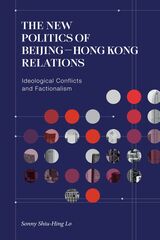 The New Politics of Beijing–Hong Kong Relations: Ideological Conflicts and Factionalism
Sonny Shiu-Hing Lo
Hong Kong University Press, 2024 Examines the changing ideologies and conflicts between Hong Kong and the mainland from 2012 to the present.
The New Politics of Beijing–Hong Kong Relations particularly examines the paternalistic authoritarianism that can be seen in Beijing's policy toward Hong Kong since the promulgation of the national security law in late June 2020. Lo analyzes the ideological shift from liberal nationalism to conservative nationalism on the mainland Chinese side since late 2012. The increasingly radical localism on the Hong Kong side after 2014 altered Beijing-Hong Kong relations and introduced factional struggles. While the imposition of the national security law in Hong Kong in late June 2020 has stabilized the city politically, Beijing's policy toward Hong Kong is now guided by the principles of protecting its national security and maintaining economic pragmatism, with implications for Beijing's relations with Taipei in the coming years.
The New Politics of Indian Gaming: The Rise of Reservation Interest Groups
Kenneth N. Hansen
University of Nevada Press, 2015 The advent of gaming on Indian reservations has created a new kind of tribal politics over the past three decades. Now armed with often substantial financial resources, Indigenous peoples have adjusted their political strategies from a focus on the judicial system and the Bureau of Indian Affairs (BIA) to one that directly lobbies state and federal governments and non-Indigenous voters. These tactics allow tribes to play an influential role in shaping state and national policies that affect their particular interests. Using case studies of major Indian gaming states, the contributing authors analyze the interplay of tribal governance, state politics, and federalism, and illustrate the emergence of reservation governments as political power brokers.
 The New Politics of Online Feminism
Akane Kanai
Duke University Press, 2026 In The New Politics of Online Feminism, Akane Kanai argues that for young feminists, online feminist culture often poses more dilemmas than it solves. Moving beyond a narrow characterization of online feminism as a site of activism and resistance, Kanai attends to the feminist quandaries of being politically conscientious as life on- and offline become inseparable. Kanai suggests that while it has seemingly never been more important to avoid complicity with patriarchy, racism, and other oppressions, the self has remained the central site of agency and transformation—casting politics in terms of individual scrupulousness, diligence, and improvement. Under these circumstances, a feminist lens becomes about benchmarking, comparing, and anxiously avoiding the public mistakes that others make in online life. Kanai foregrounds the importance of moving beyond the polarities of correct and incorrect feeling to enable the everyday practices of listening to and learning about experience and difference.
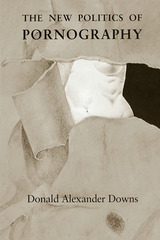 The New Politics of Pornography
Donald Alexander Downs
University of Chicago Press, 1989 Fresh empirical evidence of pornography's negative effects and the resurgence of feminist and conservative critiques have caused local, state, and federal officials to reassess the pornography issue. In The New Politics of Pornography, Donald Alexander Downs explores the contemporary antipornography movement and addresses difficult questions about the limits of free speech. Drawing on official transcripts and extensive interviews, Downs recreates and analyzes landmark cases in Minneapolis and Indianapolis. He argues persuasively that both conservative and liberal camps are often characterized by extreme intolerance which hampers open policy debate and may ultimately threaten our modern doctrine of free speech. Downs concludes with a balanced and nuanced discussion of what First Amendment protections pornography should be afforded. This provocative and interdisciplinary work will interest students of political science, women's studies, civil liberties, and constitutional law.
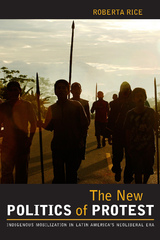 The New Politics of Protest: Indigenous Mobilization in Latin America's Neoliberal Era
Roberta Rice
University of Arizona Press, 2012 In June 1990, Ecuador saw the first major indigenous rebellion within its borders since the colonial era. For weeks, indigenous protesters participated in marches, staged demonstrations, seized government offices, and blockaded roads. Since this insurrection, indigenous movements have become increasingly important in the fight against Latin American Neoliberalism.
Roberta Rice's New Politics of Protest seeks to analyze when, where, and why indigenous protests against free-market reforms have occurred in Latin America. Comparing cases in Ecuador, Peru, Bolivia, and Chile, this book details the emergence of indigenous movements under and against Neoliberal governments. Rice uses original field research and interviews with indigenous leaders to examine long-term patterns of indigenous political activism and overturn accepted theories on the role of the Indian in democracy.
A useful and engaging study, The New Politics of Protest seeks to determine when indigenous movements become viable political parties. It covers the most recent rounds of protest to demonstrate how a weak and unresponsive government is more likely to experience revolts against unpopular reforms. This influential work will be of interest to scholars of Latin American politics and indigenous studies as well as anyone studying oppressed peoples who have organized nationwide strikes and protests, blocked economic reforms, toppled corrupt leaders, and even captured presidencies.
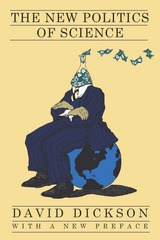 The New Politics of Science
David Dickson
University of Chicago Press, 1988 How science "gets done" in today's world has profound political repercussions, since scientific knowledge, through its technical applications, has become an important source of both economic and military power. The increasing dependence of scientific research on funding from business and the military has made questions about the access to and control of scientific knowledge a central issue in today's politics of science.
In The New Politics of Science, David Dickson points out that "the scientific community has its own internal power structures, its elites, its hierarchies, its ideologies, its sanctioned norms of social behavior, and its dissenting groups. And the more that science, as a social practice, forms an integral part of the economic structures of the society in which it is imbedded, the more the boundaries and differences between the two dissolve. Groups inside the scientific community, for example, will use groups outside the community—and vice versa—to achieve their own political ends." In this edition, Dickson has included a new preface commenting on the continuing and increasing influence of industrial and defense interests on American scientific research in the 1980s.
 The New Politics of Visibility: Spaces, Actors, Practices and Technologies in the Visible
Edited by Andrea Mubi Brighenti
Intellect Books, 2022 Nine interdisciplinary essays employ, explore, and critique the analytical category and the practical stakes of visibility.
Not only does visibility matter to politics, but it is an increasingly intrinsic constituent element and a crucial asset of it. Accordingly, the challenge to social science is that of understanding how the new institutional, urban, and technological settings are reshaping the organization of the visible.
Ranging from urban public space to the new media and social media platforms, a team of distinguished scholars and researchers here addresses a vast terrain of inquiry by joining together original theoretical elaboration with careful empirical studies. The result is a thoroughly interdisciplinary endeavor, conducted with passion and insight. The New Politics of Visibility comprises nine original interdisciplinary chapters that analyze topical areas in the newly emerging modes of governance and society. The transformations of urban space and the working of new media form a core concern recurring through many of the essays but is by no means the sole topic, as other essays address the politics of visibility in crucial cultural spheres, including gender relations and professional life.
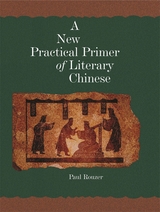 A New Practical Primer of Literary Chinese
Paul Rouzer
Harvard University Press, 2007 Forty lessons designed to introduce beginning students to the basic patterns and structures of Classical Chinese are taken from a number of pre-Han and Han texts selected to give students a grounding in exemplary Classical Chinese style. Two additional lessons use texts from later periods to help students appreciate the changes in written Chinese over the centuries.
Each lesson consists of a text, a vocabulary list featuring discussions of meaning and usage, explanations of grammar, and explications of difficult passages. The standard modern Chinese, Japanese, and Korean pronunciations are indicated for each character, making this a learning tool for native speakers of those languages as well.
Appendices give suggestions for further readings, review common and significant words, explain the radical system, and provide Japanese kanbun readings for all the selections. Glossaries of all vocabulary items and pronunciation indexes for modern Chinese and Korean are also included.
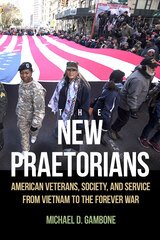 The New Praetorians: American Veterans, Society, and Service from Vietnam to the Forever War
Michael D. Gambone
University of Massachusetts Press, 2021 Contemporary veterans belong to an exclusive American group. Celebrated by most of the country, they are nevertheless often poorly understood by the same people who applaud their service. Following the introduction of an all-volunteer force after the war in Vietnam, only a tiny fraction of Americans now join the armed services, making the contemporary soldier, and the veteran by extension, increasingly less representative of mainstream society. Veterans have come to comprise their own distinct tribe—modern praetorians, permanently set apart from society by what they have seen and experienced.
In an engrossing narrative that considers the military, economic, political, and social developments affecting military service after Vietnam, Michael D. Gambone investigates how successive generations have intentionally shaped their identity as veterans. The New Praetorians also highlights the impact of their homecoming, the range of educational opportunities open to veterans, the health care challenges they face, and the unique experiences of minority and women veterans. This groundbreaking study illustrates an important and often neglected group that is key to our understanding of American social history and civil-military affairs.
New Presence of China in Africa
Edited by Meine Pieter van Dijk
Amsterdam University Press, 2009
China’s economic and political presence in Africa has expanded drastically over the past decade, especially in the sub-Saharan region. Convinced that Western attempts at providing aid to Africa have failed, Chinese officials have sought new forms of aid and invested billions to push further development in Africa. But some in the United States and around the word fear that China’s interest in sub-Saharan Africa could threaten previous efforts to protect human rights and to promote democracy in the region. The New Presence of China in Africa takes on this controversial issue, offering an overview of the Chinese model and evaluating whether it might serve as an example for future Western endeavors.
The New Presidential Elite: Men and Women in National Politics
Jeane J. Kirkpatrick
Russell Sage Foundation, 1976 Explores the idea that a "new breed" of men and women are actively involved in the majority American political party, and that their motives, goals, ideals, and patterns of organizational behavior are different from those of the people who have dominated U.S. politics in the past. This book is based on interviews with 1,300 delegates to the 1972 Democratic and Republican National Conventions, and mail questionnaires completed by some 55 percent of the delegates. The author identifies women as one part of the new "presidential elite," and analyzes their social, cultural, psychological, and political characteristics. This study was funded jointly by Russell Sage Foundation and The Twentieth Century Fund.
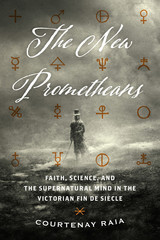 The New Prometheans: Faith, Science, and the Supernatural Mind in the Victorian Fin de Siècle
Courtenay Raia
University of Chicago Press, 2019 The Society for Psychical Research was established in 1882 to further the scientific study of consciousness, but it arose in the surf of a larger cultural need. Victorians were on the hunt for self-understanding. Mesmerists, spiritualists, and other romantic seekers roamed sunken landscapes of entrancement, and when psychology was finally ready to confront these altered states, psychical research was adopted as an experimental vanguard. Far from a rejected science, it was a necessary heterodoxy, probing mysteries as diverse as telepathy, hypnosis, and even séance phenomena. Its investigators sought facts far afield of physical laws: evidence of a transcendent, irreducible mind.
The New Prometheans traces the evolution of psychical research through the intertwining biographies of four men: chemist Sir William Crookes, depth psychologist Frederic Myers, ether physicist Sir Oliver Lodge, and anthropologist Andrew Lang. All past presidents of the society, these men brought psychical research beyond academic circles and into the public square, making it part of a shared, far-reaching examination of science and society. By layering their papers, textbooks, and lectures with more intimate texts like diaries, letters, and literary compositions, Courtenay Raia returns us to a critical juncture in the history of secularization, the last great gesture of reconciliation between science and sacred truths.
New Public Administration
H. George Frederickson
University of Alabama Press, 1980 This book is generally about public administration and particularly about new public administration, a product of the turbulent late 1960s and the 1970s.
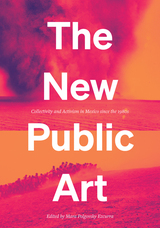 The New Public Art: Collectivity and Activism in Mexico since the 1980s
Mara Polgovsky Ezcurra
University of Texas Press, 2023 Essays on the rise of community-focused art projects and anti-monuments in Mexico since the 1980s.
Mexico has long been lauded and studied for its post-revolutionary public art, but recent artistic practices have raised questions about how public art is created and for whom it is intended. In The New Public Art, Mara Polgovsky Ezcurra, together with a number of scholars, artists, and activists, looks at the rise of community-focused art projects, from collective cinema to off-stage dance and theatre, and the creation of anti-monuments that have redefined what public art is and how people have engaged with it across the country since the 1980s. The New Public Art investigates the reemergence of collective practices in response to privatization, individualism, and alienating violence. Focusing on the intersection of art, politics, and notions of public participation and belonging, contributors argue that a new, non-state-led understanding of "the public" came into being in Mexico between the mid-1980s and the late 2010s. During this period, community-based public art bore witness to the human costs of abuses of state and economic power while proposing alternative forms of artistic creation, activism, and cultural organization.
New Publication Cultures in the Humanities: Exploring the Paradigm Shift
Edited by Péter Dávidházi
Amsterdam University Press, 2014 The changes we have seen in recent years in the scholarly publishing world - including the growth of digital publishing and changes to the role and strategies of publishers and libraries alike - represent the most dramatic paradigm shift in scholarly communications in centuries. This volume brings together leading scholars from across the humanities to explore that transformation and consider the challenges and opportunities it brings.
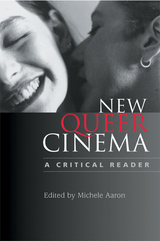 New Queer Cinema: A Critical Reader
Aaron, Michele
Rutgers University Press, 2004 Coined in the early 1990s to describe a burgeoning film movement, “New Queer Cinema” has turned the attention of film theorists, students, and audiences to the proliferation of intelligent, stylish, and daring work by lesbian and gay filmmakers within independent cinema and to the infiltration of “queer” images and themes into the mainstream. Why did this shift take place? Was it political gains, cultural momentum, or market forces that energized the evolution and transformation of this cinematic genre? New Queer Cinema: A Critical Reader provides a definitive and highly readable guide to the development of this important and controversial film movement. The volume is divided into four sections: defining “new queer cinema,” assessing its filmmakers, examining geographic and national differences, and theorizing spectatorship. Chapters address the work of pivotal directors (such as Todd Haynes and Gregg Araki) and salient films (including Paris is Burning and Boys Don’t Cry), as well as unconventional and non-Anglo-American work (experimental filmmaking and third world cinema). With a critical eye to its uneasy relationship to the mainstream, New Queer Cinema explores the aesthetic, sociocultural, political, and, necessarily, commercial investments of the movement. It is the first full-length study of recent developments in queer cinema that combines indispensable discussions of central issues with exciting new work by key writers.
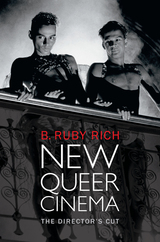 New Queer Cinema: The Director's Cut
B. Ruby Rich
Duke University Press, 2013 B. Ruby Rich designated a brand new genre, the New Queer Cinema (NQC), in her groundbreaking article in the Village Voice in 1992. This movement in film and video was intensely political and aesthetically innovative, made possible by the debut of the camcorder, and driven initially by outrage over the unchecked spread of AIDS. The genre has grown to include an entire generation of queer artists, filmmakers, and activists. As a critic, curator, journalist, and scholar, Rich has been inextricably linked to the New Queer Cinema from its inception. This volume presents her new thoughts on the topic, as well as bringing together the best of her writing on the NQC. She follows this cinematic movement from its origins in the mid-1980s all the way to the present in essays and articles directed at a range of audiences, from readers of academic journals to popular glossies and weekly newspapers. She presents her insights into such NQC pioneers as Derek Jarman and Isaac Julien and investigates such celebrated films as Go Fish, Brokeback Mountain, Itty Bitty Titty Committee, and Milk. In addition to exploring less-known films and international cinemas (including Latin American and French films and videos), she documents the more recent incarnations of the NQC on screen, on the web, and in art galleries.
 New Queer Television: From Marginalization to Mainstreamification
Edited by Thomas Brassington, Debra Ferreday, and Dany Girard
Intellect Books, 2024 How televisual queer identities entered and transformed the mainstream.
Though queer critics and queer theory tend to frame queer identities as marginal, this edited volume draws attention to a dynamic field in which a wide variety of queer identities can be put on display and consumed by audiences. Cementing a foundational understanding of queerness that is at odds with current shifts in media production, contributors present a broad variety of queer identities from across a range of televisual shows and genres to reconsider the marginalization of queerness in the twenty-first century. Doing so challenges preexisting notions that such “mainstreamification” necessitates being subsumed by the cisheteropatriarchy. This project argues the opposite, showing that heteronormative assumptions are outdated and that new queer representations lay the groundwork for filling gaps that queer criticism has left open.
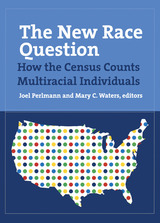 The New Race Question: How the Census Counts Multiracial Individuals
Joel Perlmann
Russell Sage Foundation, 2002 The change in the way the federal government asked for information about race in the 2000 census marked an important turning point in the way Americans measure race. By allowing respondents to choose more than one racial category for the first time, the Census Bureau challenged strongly held beliefs about the nature and definition of race in our society. The New Race Question is a wide-ranging examination of what we know about racial enumeration, the likely effects of the census change, and possible policy implications for the future. The growing incidence of interracial marriage and childrearing led to the change in the census race question. Yet this reality conflicts with the need for clear racial categories required by anti-discrimination and voting rights laws and affirmative action policies. How will racial combinations be aggregated under the Census's new race question? Who will decide how a respondent who lists more than one race will be counted? How will the change affect established policies for documenting and redressing discrimination? The New Race Question opens with an exploration of what the attempt to count multiracials has shown in previous censuses and other large surveys. Contributor Reynolds Farley reviews the way in which the census has traditionally measured race, and shows that although the numbers of people choosing more than one race are not high at the national level, they can make a real difference in population totals at the county level. The book then takes up the debate over how the change in measurement will affect national policy in areas that rely on race counts, especially in civil rights law, but also in health, education, and income reporting. How do we relate data on poverty, graduation rates, and disease collected in 2000 to the rates calculated under the old race question? A technical appendix provides a useful manual for bridging old census data to new. The book concludes with a discussion of the politics of racial enumeration. Hugh Davis Graham examines recent history to ask why some groups were determined to be worthy of special government protections and programs, while others were not. Posing the volume's ultimate question, Jennifer Hochschild asks whether the official recognition of multiracials marks the beginning of the end of federal use of race data, and whether that is a good or a bad thing for society? The New Race Question brings to light the many ways in which a seemingly small change in surveying and categorizing race can have far reaching effects and expose deep fissures in our society. A Volume in the Russell Sage Foundation Census Series Copublished with the Levy Economics Institute of Bard College
New Readings on Women and Early Medieval English Literature and Culture: Cross-Disciplinary Studies in Honour of Helen Damico
Helene Scheck
Arc Humanities Press, 2019 <I>New Readings on Women and Early Medieval English Literature and Culture</I> showcases current and original scholarship relating to women in Early Medieval English culture and in Early Medieval English studies and promises to stimulate new work in those areas. Recognizing the plasticity of gender structures, roles, and relations in Early Medieval English literature and culture as well as within the modern discipline of Early Medieval English Studies, the essays reveal pluralities of gender bequeathed to us and encourage us to rethink power/gender dynamics in our present moment.
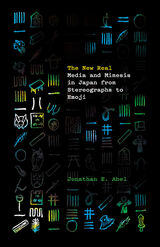 The New Real: Media and Mimesis in Japan from Stereographs to Emoji
Jonathan E. Abel
University of Minnesota Press, 2022 Unlocking a vital understanding of how literary studies and media studies overlap and are bound together
A synthetic history of new media reception in modern and contemporary Japan, The New Real positions mimesis at the heart of the media concept. Considering both mimicry and representation as the core functions of mediation and remediation, Jonathan E. Abel offers a new model for media studies while explaining the deep and ongoing imbrication of Japan in the history of new media. From stereoscopy in the late nineteenth century to emoji at the dawn of the twenty-first, Abel presents a pioneering history of new media reception in Japan across the analog and digital divide. He argues that there are two realities created by new media: one marketed to us through advertising that proclaims better, faster, and higher-resolution connections to the real; and the other experienced by users whose daily lives and behaviors are subtly transformed by the presence and penetration of the content carried through new media. Intervening in contemporary conversations about virtuality, copyright, copycat violence, and social media, each chapter unfolds with a focus on a single medium or technology, including 3D photographs, the phonograph, television, videogames, and emoji. By highlighting the tendency of the mediated to copy the world and the world to copy the mediated, The New Real provides a new path for analysis of media, culture, and their function in the world.
The New Refugees: Crime and Forced Displacement in Latin America
Edited by David James Cantor and Nicolás Rodríguez Serna
University of London Press, 2016 A potent analysis of the humanitarian crisis of forced displacement at the hands of organized crime in Latin America
In Latin America, recent years have seen an unprecedented rise in the number of people forced to flee from their homes due to the activities of organized criminal groups. What are the reasons behind this emerging crisis of forced displacement in the Americas? Who are these criminal groups and how do they operate in Central America, Mexico and Colombia? Who are the victims and how can their needs be met in these violent and insecure contexts? Can law and policy offer a humanitarian response to this crisis? As the first book to deal with this rapidly evolving phenomenon, this innovative collection offers a range of fresh perspectives from leading experts working across Latin America.
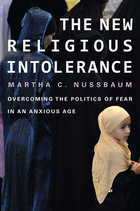 The New Religious Intolerance: Overcoming the Politics of Fear in an Anxious Age
Martha C. Nussbaum
Harvard University Press, 2012 What impulse prompted some newspapers to attribute the murder of 77 Norwegians to Islamic extremists, until it became evident that a right-wing Norwegian terrorist was the perpetrator? Why did Switzerland, a country of four minarets, vote to ban those structures? How did a proposed Muslim cultural center in lower Manhattan ignite a fevered political debate across the United States? In The New Religious Intolerance, Martha C. Nussbaum surveys such developments and identifies the fear behind these reactions. Drawing inspiration from philosophy, history, and literature, she suggests a route past this limiting response and toward a more equitable, imaginative, and free society.
Fear, Nussbaum writes, is "more narcissistic than other emotions." Legitimate anxieties become distorted and displaced, driving laws and policies biased against those different from us. Overcoming intolerance requires consistent application of universal principles of respect for conscience. Just as important, it requires greater understanding. Nussbaum challenges us to embrace freedom of religious observance for all, extending to others what we demand for ourselves. She encourages us to expand our capacity for empathetic imagination by cultivating our curiosity, seeking friendship across religious lines, and establishing a consistent ethic of decency and civility. With this greater understanding and respect, Nussbaum argues, we can rise above the politics of fear and toward a more open and inclusive future.
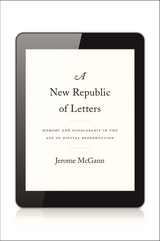 A New Republic of Letters: Memory and Scholarship in the Age of Digital Reproduction
Jerome McGann
Harvard University Press, 2014 A manifesto for the humanities in the digital age, A New Republic of Letters argues that the history of texts, together with the methods by which they are preserved and made available for interpretation, are the overriding subjects of humanist study in the twenty-first century. Theory and philosophy, which have grounded the humanities for decades, no longer suffice as an intellectual framework. Jerome McGann proposes we look instead to philology—a discipline which has been out of fashion for many decades but which models the concerns of digital humanities with surprising fidelity.
For centuries, books have been the best way to preserve and transmit knowledge. But as libraries and museums digitize their archives and readers abandon paperbacks for tablet computers, digital media are replacing books as the repository of cultural memory. While both the mission of the humanities and its traditional modes of scholarship and critical study are the same, the digital environment is driving disciplines to work with new tools that require major, and often very difficult, institutional changes. Now more than ever, scholars need to recover the theory and method of philological investigation if the humanities are to meet their perennial commitments. Textual and editorial scholarship, often marginalized as a narrowly technical domain, should be made a priority of humanists’ attention.
 New Rights Advocacy: Changing Strategies of Development and Human Rights NGOs
Paul J. Nelson and Ellen Dorsey
Georgetown University Press, 2008 After World War II dozens of non-governmental organizations (NGOs) emerged on the global scene, committed to improving the lives of the world's most vulnerable people. Some focused on protecting human rights; some were dedicated to development, aimed at satisfying basic economic needs. Both approaches had distinctive methods, missions, and emphases. In the 1980s and 90s, however, the dividing line began to blur. In the first book to track the growing intersection and even overlap of human rights and development NGOs, Paul Nelson and Ellen Dorsey introduce a concept they call "new rights advocacy." New rights advocacy has at its core three main trends: the embrace of human rights-based approaches by influential development NGOs, the adoption of active economic and social rights agendas by major international human rights NGOs, and the surge of work on economic and social policy through a human rights lens by specialized human rights NGOs and social movement campaigns. Nelson and Dorsey draw on rich case studies of internationally well-known individual NGOs such as Amnesty International, Human Rights Watch, Oxfam, CARE, ActionAid, and Save the Children, and employ perspectives from fields of human rights, international relations, the sociology of social movements and of complex organizations, and development theory, in order to better understand the changes occurring within NGOs. In questioning current trends using new theoretical frameworks, this book breaks new ground in the evolution of human rights-development interaction. The way in which NGOs are reinventing themselves has great potential for success—or possibly failure—and profound implications for a world in which the enormous gap between the wealthiest and poorest poses a persistent challenge to both development and human rights.
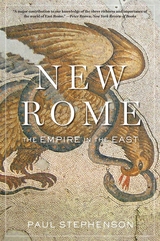 New Rome: The Empire in the East
Paul Stephenson
Harvard University Press, 2022 A comprehensive new history of the Eastern Roman Empire based on the science of the human past.
As modern empires rise and fall, ancient Rome becomes ever more significant. We yearn for Rome’s power but fear Rome’s ruin—will we turn out like the Romans, we wonder, or can we escape their fate? That question has obsessed centuries of historians and leaders, who have explored diverse political, religious, and economic forces to explain Roman decline. Yet the decisive factor remains elusive.
In New Rome, Paul Stephenson looks beyond traditional texts and well-known artifacts to offer a novel, scientifically minded interpretation of antiquity’s end. It turns out that the descent of Rome is inscribed not only in parchments but also in ice cores and DNA. From these and other sources, we learn that pollution and pandemics influenced the fate of Constantinople and the Eastern Roman Empire. During its final five centuries, the empire in the east survived devastation by natural disasters, the degradation of the human environment, and pathogens previously unknown to the empire’s densely populated, unsanitary cities. Despite the Plague of Justinian, regular “barbarian” invasions, a war with Persia, and the rise of Islam, the empire endured as a political entity. However, Greco-Roman civilization, a world of interconnected cities that had shared a common material culture for a millennium, did not.
Politics, war, and religious strife drove the transformation of Eastern Rome, but they do not tell the whole story. Braiding the political history of the empire together with its urban, material, environmental, and epidemiological history, New Rome offers the most comprehensive explanation to date of the Eastern Empire’s transformation into Byzantium.
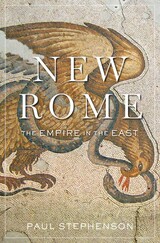 New Rome: The Empire in the East
Paul Stephenson
Harvard University Press A Times of London Book of the Year
Longlisted for the Runciman Award
“The most compelling fusion yet of narrative history with the recent findings of environmental research and scientific data. It will change the way we understand key events and transformations in the Eastern Empire.”—Anthony Kaldellis, author of Romanland
“[A] major contribution…Brings the world of New Rome alive with exceptional learning and a magnificent openness to modern scientific methods that breathe life into conventional narratives of political and social history.”—Peter Brown, New York Review of Books
“A sweeping survey of the disintegration of the western Roman empire and the emergence of Byzantium…This impressive chronicle offers an eye-opening perspective on a period of dramatic change.”—Publishers Weekly
Long before Rome fell to the Ostrogoths in 476 AD, a new city had risen to take its place as the beating heart of the empire, the glittering Constantinople, known as New Rome. In this strikingly original account of the collapse of the Western Roman Empire and emergence of Byzantium, Paul Stephenson offers a new interpretation of the forces that coalesced—dynastic, religious, climactic—to shift the center of power to the east. His novel, scientifically minded interpretation of antiquity's end presents evidence found not only in parchments and personalities, but also in ice cores and DNA.
From 395 to 700 AD, the empire in the east was subjected to a series of invasions and pandemics, confronting natural disasters and outbreaks in pathogens previously unknown to the empire’s densely populated, unsanitary cities. Politics, war, and religious strife sparked by the rise of Islam drove the transformation of Eastern Rome, but they do not tell the whole story. Deftly braiding the political history of the empire together with its material, environmental, and epidemiological history, New Rome offers a surprising new explanation of why Rome fell and how the Eastern Empire became Byzantium.
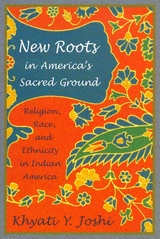 New Roots in America's Sacred Ground: Religion, Race, and Ethnicity in Indian America
Joshi, Khyati Y
Rutgers University Press, 2006 In this compelling look at second-generation Indian Americans, Khyati Y. Joshi draws on case studies and interviews with forty-one second-generation Indian Americans, analyzing their experiences involving religion, race, and ethnicity from elementary school to adulthood. As she maps the crossroads they encounter as they navigate between their homes and the wider American milieu, Joshi shows how their identities have developed differently from their parents’ and their non-Indian peers’ and how religion often exerted a dramatic effect.
The experiences of Joshi’s research participants reveal how race and religion interact, intersect, and affect each other in a society where Christianity and whiteness are the norm. Joshi shows how religion is racialized for Indian Americans and offers important insights in the wake of 9/11 and the backlash against Americans who look Middle Eastern and South Asian. Through her candid insights into the internal conflicts contemporary Indian Americans face and the religious and racial discrimination they encounter, Joshi provides a timely window into the ways that race, religion, and ethnicity interact in day-to-day life.
The New Sappho on Old Age: Textual and Philosophical Issues
Ellen Greene
Harvard University Press, 2009 The world has long wished for more of Sappho’s poetry, which exists mostly in tantalizing fragments. So the apparent recovery in 2004 of a virtually intact poem by Sappho, only the fourth to have survived almost complete, has generated unprecedented excitement and discussion among scholarly and lay audiences alike. This volume is the first collection of essays in English devoted to discussion of the newly recovered Sappho poem and two other incomplete texts on the same papyri. Containing eleven new essays by leading scholars, it addresses a wide range of textual and philological issues connected with the find. Using different approaches, the contributions demonstrate how the “New Sappho” can be appreciated as a complete, gracefully spare poetic statement regarding the painful inevitability of death and aging.
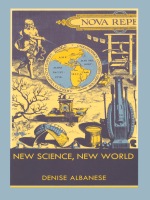 New Science, New World
Denise Albanese
Duke University Press, 1996 In New Science, New World Denise Albanese examines the discursive interconnections between two practices that emerged in the seventeenth century—modern science and colonialism. Drawing on the discourse analysis of Foucault, the ideology-critique of Marxist cultural studies, and de Certeau’s assertion that the modern world produces itself through alterity, she argues that the beginnings of colonialism are intertwined in complex fashion with the ways in which the literary became the exotic “other” and undervalued opposite of the scientific.
Albanese reads the inaugurators of the scientific revolution against the canonical authors of early modern literature, discussing Galileo’s Dialogue on the Two Chief World Systems and Bacon’s New Atlantis as well as Milton’s Paradise Lost and Shakespeare’s The Tempest. She examines how the newness or “novelty” of investigating nature is expressed through representations of the New World, including the native, the feminine, the body, and the heavens. “New” is therefore shown to be a double sign, referring both to the excitement associated with a knowledge oriented away from past practices, and to the oppression and domination typical of the colonialist enterprise. Exploring the connections between the New World and the New Science, and the simultaneously emerging patterns of thought and forms of writing characteristic of modernity, Albanese insists that science is at its inception a form of power-knowledge, and that the modern and postmodern division of “Two Cultures,” the literary and the scientific, has its antecedents in the early modern world.
New Science, New World makes an important contribution to feminist, new historicist, and cultural materialist debates about the extent to which the culture of seventeenth-century England is proto-modern. It will offer scholars and students from a wide range of fields a new critical model for historical practice.
The New Science of Politics: An Introduction
Eric Voegelin
University of Chicago Press, 1987 A classic work of political theory by one of the leading political philosophers of the twentieth century
What Eric Voegelin attempts in The New Science of Politics is nothing less ambitious than a complete theory of humanity, society, and history. To build his theory, Voegelin draws on a breathtaking range of subjects from throughout history, including the Mongol Orders of Submission, the Behistun Inscription, and a controversy over an alter to the goddess Victoria in the Roman Forum. Addressing the access to truth afforded by myth, revelation, and philosophy, Voegelin then carefully contrasts each with gnosticism. The resulting book is a heady exploration of the development of European politics through the Western tradition and the ongoing importance of the inner quest for transcendent reality. =
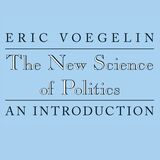 The New Science of Politics: An Introduction
Eric Voegelin
University of Chicago Press, 1987 This is an auto-narrated audiobook version of this book.
"Thirty-five years ago few could have predicted that The New Science of Politics would be a best-seller by political theory standards. Compressed within the Draconian economy of the six Walgreen lectures is a complete theory of man, society, and history, presented at the most profound and intellectual level. . . . Voegelin's [work] stands out in bold relief from much of what has passed under the name of political science in recent decades. . . . The New Science is aptly titled, for Voegelin makes clear at the outset that a 'return to the specific content' of premodern political theory is out of the question. . . . The subtitle of the book, An Introduction, clearly indicates that The New Science of Politics is an invitation to join the search for the recovery of our full humanity."—From the new Foreword by Dante Germino
"This book must be considered one of the most enlightening essays on the character of European politics that has appeared in half a century. . . . This is a book powerful and vivid enough to make agreement or disagreement with even its main thesis relatively unimportant."—Times Literary Supplement
"Voegelin . . . is one of the most distinguished interpreters to Americans of the non-liberal streams of European thought. . . . He brings a remarkable breadth of knowledge, and a historical imagination that ranges frequently into brilliant insights and generalizations."—Francis G. Wilson, American Political Science Review
"This book is beautifully constructed . . . his erudition constantly brings a startling illumination."—Martin Wright, International Affairs
"A ledestar to thinking men who seek a restoration of political science on the classic and Christian basis . . . a significant accomplishment in the retheorization of our age."—Anthony Harrigan, Christian Century
 A New Science: The Discovery of Religion in the Age of Reason
Guy G. Stroumsa
Harvard University Press, 2010 We see the word “religion” everywhere, yet do we understand what it means, and is there a consistent worldwide understanding? Who discovered religion and in what context? In A New Science, Guy Stroumsa offers an innovative and powerful argument that the comparative study of religion finds its origin in early modern Europe. The world in which this new category emerged was marked by three major historical and intellectual phenomena: the rise of European empires, that gave birth to ethnological curiosity; the Reformation, which permanently altered Christianity; and the invention of philology, a discipline that transformed Western intellectual thought. Against this complex historical backdrop, Stroumsa guides us through the lives and writings of the men who came to define the word “religion.” As Stroumsa boldly argues, the modern study of religion, a new science, was made possible through a dialectical process between Catholic and Protestant scholars. Ancient Israelite religion, Judaism, Christianity, Islam, Manichaeanism, Zoroastrianism, the sacred beliefs of the New World, and those of Greece, Rome, India, and China, composed the complex ground upon which “religion,” a most modern category, was discovered.
A New Scotland: Building an Equal, Fair and Sustainable Society
Gregor Gall
Pluto Press, 2022 Inequality and unfairness still stalk Scotland after more than twenty years of devolution. Having done little to shield against austerity, Brexit and an increasingly right-wing Westminster agenda, calls for further constitutional reform to solve pressing political, economic and social problems grow ever louder. The debate over further devolution or independence continues to split the population.
In A New Scotland, leading activists and academics lay out the blueprints for radical reform, showing how society can be transformed by embedding values of democracy, social justice and environmental sustainability into a coherent set of policy ideas.
Structured in two parts, the book takes to task the challenges to affect radical change, before exploring new approaches to key questions such as healthcare, education, public ownership, race, gender and human rights.
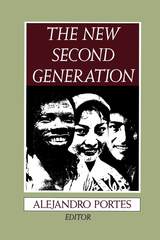 The New Second Generation
Alejandro Portes
Russell Sage Foundation, 1996 The children of the past decade's influx of immigrants comprise a second generation far different than any this country has known before. Largely non-white and from the world's developing nations, these children struggle with complex problems of racial and ethnic relations in multicultural urban neighborhoods, attend troubled inner city schools, and face discriminatory labor markets and an economy that no longer provides the abundant manufacturing jobs that sustained previous generations of immigrants. As the contributors to The New Second Generation make clear, the future of these children is an open question that will be key to understanding the long-range consequences of current immigration. The New Second Generation chronicles the lives of second generation youth in Miami, New York City, New Orleans, and Southern California. The contributors balance careful analysis with the voices of the youngsters themselves, focusing primarily on education, career expectations, language preference, ethnic pride, and the influence of their American-born peers. Demographic portraits by Leif Jensen and Yoshimi Chitose and by Charles Hirschman reveal that although most immigrant youths live at or below the official poverty line, this disadvantage is partially offset by the fact that their parents are typically married, self-employed, and off welfare. However, the children do not always follow the course set by their parents, and often challenge immigrant ethics with a desire to embrace American culture. Mary Waters examines how the tendency among West Indian teens to assume an American black identity links them to a legacy of racial discrimination. Although the decision to identify as American or as immigrant usually presages how well second generation children will perform in school, the formation of this self-image is a complex process. M. Patricia Fernandez-Kelly and Richard Schauffler find marked differences among Hispanic groups, while Ruben G. Rumbaut explores the influence of individual and family characteristics among Asian, Latin, and Caribbean youths. Nativists frequently raise concerns about the proliferation of a non-English speaking population heavily dependent on welfare for economic support. But Alejandro Portes and Richard Schauffler's historical analysis of language preferences among Miami's Hispanic youth reveals their unequivocal preference for English. Nor is immigrationan inevitable precursor to a swollen welfare state: Lisandro Perez and Min Zhou and Carl L. Bankston demonstrate the importance of extended families and ethnic community solidarity in improving school performance and providing increased labor opportunities. As immigration continues to change the face of our nation's cities, we cannot ignore the crucial issue of how well the second generation youth will adapt. The New Second Generation provides valuable insight into issues that may spell the difference between regeneration and decay across urban America.
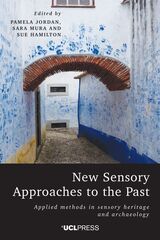 New Sensory Approaches to the Past: Applied Methods in Sensory Heritage and Archaeology
Edited by Pamela Jordan, Sara Mura, and Sue Hamilton
University College London, 2025 From thick description to autoethnography, a collection of some of the latest investigatory methodologies in sensory heritage work.
In recent years, archaeologists and other researchers dealing with heritage sites have increasingly emphasized the fact that people in the past interacted with their natural and built environment through all of their senses. In turn, they have come to acknowledge the limits of research methods that rely solely on visual analysis. Presenting studies of historical environments from multiple fields, from archaeology to acoustics, through the lens of the senses, New Sensory Approaches to the Past showcases the latest developments in sensory research through real-world scenarios of human-environment connections. Interdisciplinary examples of diverse sensory in-situ studies will enable readers to replicate and enhance their own investigations. Further, the volume pushes beyond historically Western frameworks of sensory perception towards a more global understanding of the senses.
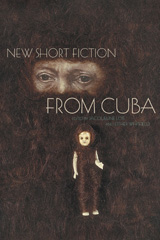 New Short Fiction from Cuba
Jacqueline Loss and Esther Whitfield
Northwestern University Press, 2007 With the disintegration of the Soviet bloc, the ongoing uncertainty surrounding Cuba’s political future, the onslaught of tourists, and the economic upheavals in their society, Cubans face an important, perhaps epochal, moment of cultural change. It is a moment amply and complexly reflected in the fiction collected here, twelve short stories written in Cuba during the past ten years and published in English for the first time with the collaboration of some of today’s finest translators.
An eclectic selection, the stories offer an exhilarating sense of a rich literary diversity and cultural history, an experience of Cuban literature that has rarely been available to an English audience. They differ widely, even wildly, in style and theme: from an impromptu encounter with Ernest Hemingway to an imagined romance mapped onto Cuba’s foundational nineteenth-century novel; from a witty, Borgesian satire on bureaucracy and officialist identity to a gothic adventure in homosexual voyeurism and mental illness; from an allegorical travelogue set in repressive China to a semi-surreal celebration of angels in Havana. These are the voices of Cuban fiction today, reflecting the past, anticipating the future, and composing in their infinite variety the stories of their culture.
 The New Short Story Theories
Charles E. May
Ohio University Press, 1994 The first edition of May’s Short Story Theories (1976) opened with an essay entitled “The Short Story: An Underrated Art.” Almost two decades later, the short story suffers no such slight. Publishers and critics have become increasingly interested in the form, which has enjoyed a renaissance led by such writers as Raymond Carver, Tobias Wolff, Ann Beattie, Bobbie Ann Mason, and Mary Robison. An important part of this revival of interest, Short Story Theories has continued to attract a strong and loyal audience among students and teachers.
The New Short Story Theories includes a few basic pieces from the earlier volume—Poe’s Hawthorne review, Brander Matthew’s extension and formalization of Poe’s theories, and essays by Randall Jarrell, Elizabeth Bowen, and Nadine Gordimer—but most of the essays are new to the collection.
Addressing problems of definition, historical considerations, issues of technique, and cognitive approaches, essays include:
“The Tale as Genre in Short Story Fiction,” by W. S. Penn
“O. Henry and the Theory of the Short Story,” by Suzanne C. Ferguson
“On Writing,” by Raymond Carver
“From Tale to Short Story,” by Robert F. Marler
“A Cognitive Approach to Storyness,” by Susan Lohafer
May’s new collection will continue to highlight the short story, to provoke debate, and to enrich our experience of a demanding and rewarding literary form.
New Social Movements: From Ideology to Identity
edited by Enrique Laraña, Hank Johnston and Joseph R. Gusfield
Temple University Press, 1994 Cultural changes over the past two decades have led to a proliferation of new social movements in Europe and the United States. New social movements such as ecology, peace, ethnicity, New Age philosophies, alternative medicine, and gender and sexual identity are among those that are emerging to challenge traditional categories in social movement theory. Synthesizing classic and modern perspectives the contributors help to redefine the field of social movements and advance an understanding of them through cross-cultural research, comparison with older movements, and an examination of the dimensions of identity—individual, collective, and melding of the two.
A New Social Question?: On Minimum Income Protection in the Postindustrial Era
Ive Marx
Amsterdam University Press, 2007
Social scientists, politicians, and economists have recently been taken with the idea that the advanced welfare states of Europe face a “New Social Question.” The core idea is that the transition from an industrial to a postindustrial environment has brought with it a whole new set of social risks, constraints, and trade-offs, which necessitate radical recalibration of social security systems. A New Social Question? analyzes that question in depth, with particular attention to the problem of income protection and the difficulties facing Bismarckian welfare states. It will be necessary reading for anyone interested in understanding the future of European social policy.
 New Songs of Innocence
S. J. Hodson
St. Augustine's Press, 2025 "Poetry is language at play. In New Songs of Innocence S.J. Hodson is hard at work in this playground teasing us with syllabic verse ("Beside Himself with Calm"), haiku stanzas ("A Cougar Strolled By"), sonnet, ("Sonnet for Miriam"), and villanelle ("A Poet's Dark Night of the Soul"). He relishes the natural rhythm of speech and knows how to polish it metrically. He rhymes in wonderfully complex ways, combining end rhyme, internal rhyme, slant rhyme, sight rhyme and the unexpected sudden break from rhyme.
But poetry isn't just play, however clever. Language is a serious matter. It's not working unless it opens us up to our world. Beauty is at once at odds with and requires truth. In this ancient quarrel between poetry and philosophy, S.J. Hodson comes down squarely on both sides. At its best poetry teaches without preaching. If Blake's Songs of Innocence calls established religion into question to recover wonder at the religious spirit that gives birth to it, Hodson's New Songs of Innocence means to call into question science, the established religion of our time, to wonder again at what gives birth to it, the scientific spirit. […]
[Hodson] writes not so much to please his audience as to tease and teach his audience-and what a pleasure it is to be taught this way. Making poetry is for him serious-a way to think, a way to wonder. But he is also masterful at playfully seducing others to wonder. If 'philosophy begins in wonder,' these poems are invitations to philosophize. S.J. Hodson is one of the most interesting and talented poets of his generation, and yet he remains known to only a very few. In New Songs of Innocence, we are graced with his first published book of poetry. We should be thankful and hope it will not be his last." Taken from the Introduction by Michael Davis
New South African Keywords
Nick Shepherd
Ohio University Press, 2008 New South African Keywords sets out to do two things. The first is to provide a guide to the key words and key concepts that have come to shape public and political thought and debate in South Africa since 1994. The second purpose is to provide a compendium of cutting-edge thinking on the new society. In this respect some of the most exciting thinkers and commentators on South Africa have tried to capture the complexity of current debates. The result is a concise and insightful guide to postapartheid South Africa, which should be useful to students, citizens, tourists, business managers, decision makers—in fact, to anyone wanting to make sense of South African society today.
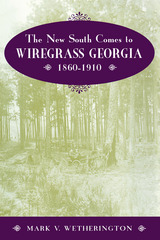 The New South Comes to Wiregrass Georgia, 1860–1910: 1860-1910
Mark V. Wetherington
University of Tennessee Press, 1994 This first book-length examination of the Georgia Pine Belt challenges the conventional view of this area as an unchanging economic backwater by examining its postbellum evolution from an independent agricultural economy to one entirely dependent upon a single unstable crop: cotton. Before the Civil War, the Georgia Piney Woods region easily supported a population of mostly self-sufficient yeomen and livestock herders. After the war, a variety of external forces invaded the region, propelling the economy through three stages of social, political, and economic change that permanently altered the landscape. Spearheaded by New South boosters like Henry Grady, these invasions were intended to create a South with a diversified economic future bright with industry and self-sufficient agriculture.
The first stage did see economic advancement in the form of transportation routes, including railroads, that opened up the Pine Belt’s forests to the second stage of change: industrialized sawmilling and turpentining. This second stage created new jobs, but failed to bring in other industries, leaving the area dependent upon an industry that destroyed the antebellum open-range herding system and brought deforestation within a generation.
The lumber industry’s demise led to the final stage of change, which saw New South boosters, in an attempt to curtail the economic malaise, promoting the deforested lands to a wave of newcomers—immigrant cotton farmers from the upcountry, hungry for new lands. With no other industries to compete with them, cotton farmers came to dominate the area’s economic life even more than before the Civil War. By 1910, few Georgia pinelanders doubted that a New South had arrived, but it was not the diversified landscape that Henry Grady and others had originally envisioned. It was, instead, a land of cotton much like the one that had come to dominate life across the rest of the Pine Belt from Virginia to East Texas.
Mark V. Wetherington’s in-depth study of this region sheds new light on its socioeconomic history and encourages a closer examination of the often ignored histories of other areas.
The New South Faces the World: Foreign Affairs and the Southern Sense of Self,1877-1950
Tennant S. McWilliams
University of Alabama Press, 2007 “In his study of the New South and foreign affairs, Tennant McWilliams raises a central question: why have southerners failed to develop a realistic attitude about U.S. relations with the rest of the world? He notes that throughout their history southerners have encountered failure, poverty, guilt, defeat, and ridicule and that their experiences seem at odds with the notions of invincibility that have fueled the flames of American idealism. Yet McWilliams points out that southerners have joined with northerners in accepting the ideas of a mission to extend the American way of life to people around the world. Thus, he asks, what happened between the end of the Civil War and the beginning of the cold war that can help explain the failure of realism to dampen the crusading spirit in the South.” —American Historical Review
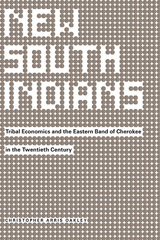 New South Indians: Tribal Economics and the Eastern Band of Cherokee in the Twentieth Century
Christopher Arris Oakley
University of Tennessee Press, 2018 The Eastern Band’s economic decisions of the 1900s did not occur in a vacuum. In fact, these decisions reflected regional changes and the broader development of the post-Civil War American South. The Eastern Band of Cherokee Indians formally incorporated under North Carolina law in the 1880s, and their economic policies evolved as the country experienced Jim Crow segregation, the Great Depression, World War II, and the civil rights movement. During the twentieth century, members of the Eastern Band embraced an economic strategy partially based on tourism. In the late 1900s, they pursued policies that facilitated the rise of casino gaming.
Divided into five chapters, Christopher Arris Oakley’s New South Indians traces the economic development of the Eastern Band throughout the twentieth century to better contextualize the Cherokee Tribal Council’s 1990s decision to incorporate gaming into the nation’s economic strategy. In building his contextual framework, Oakley discusses the interdependent relationships forged by Cherokee Tribal Council members with various public and private entities in order to protect their land, manage their resources, and advance the well-being of their nation’s economy and community.
New South Indians also situates the story within the history of the American South. Thus, the saga of the Eastern Band’s struggle for economic autonomy and financial stability throughout the stormy twentieth century can be seen as an integral part of the historical account of western North Carolina.
A multifaceted glimpse into a vital aspect of contemporary southern history, New South Indians is sure to appeal to a wide variety of readers, from those captivated by Native American culture and the history of the modern South to those interested in economic history.
|
|
